

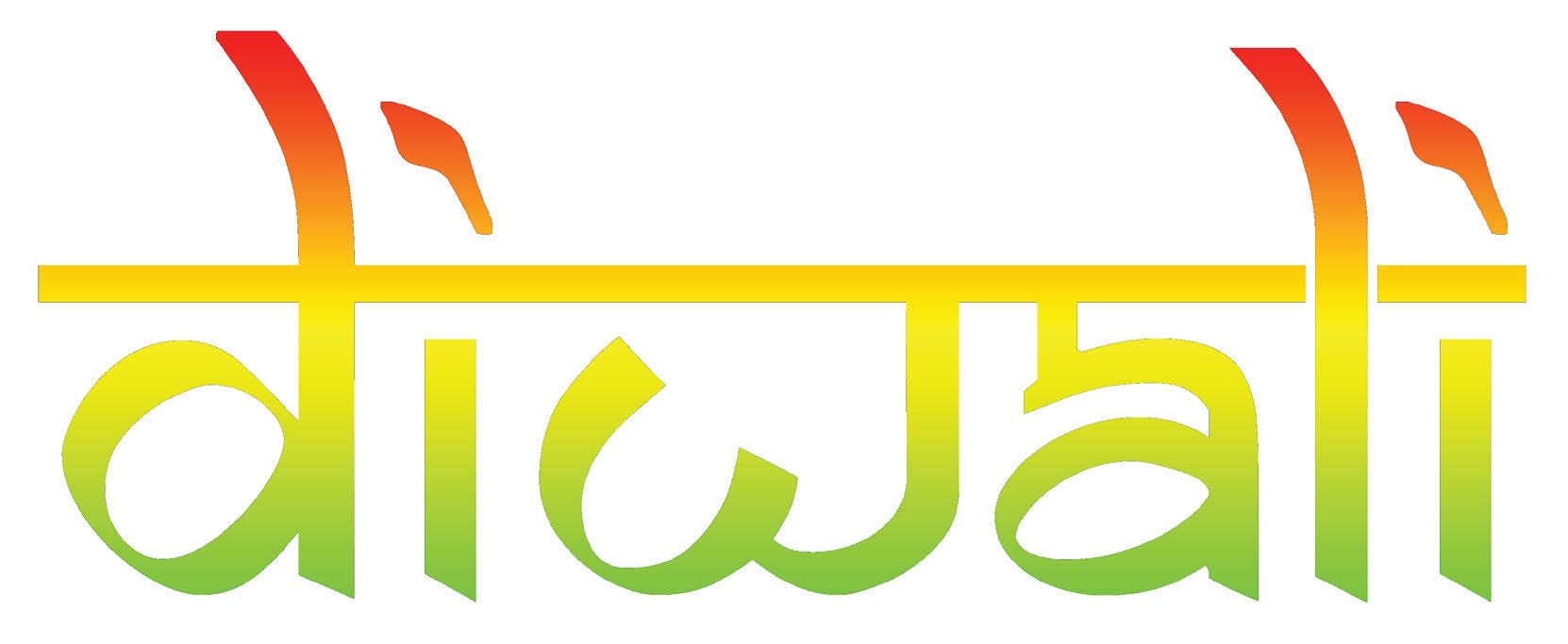
MY WAY! FREE NOVEMBER 2012 • melb@indianlink.com.au • www.indianlink.com.au MELBOURNE Sydney • Melbourne • Adelaide • Brisbane • Perth • Canberra PO Box 80, Chadstone Shopping Centre, Chadstone VIC 3148 • Ph: 03 9803 0200 • 1 8000 15 8 47 • Fax: 03 9803 0255 Countdown to the Festival oF lights
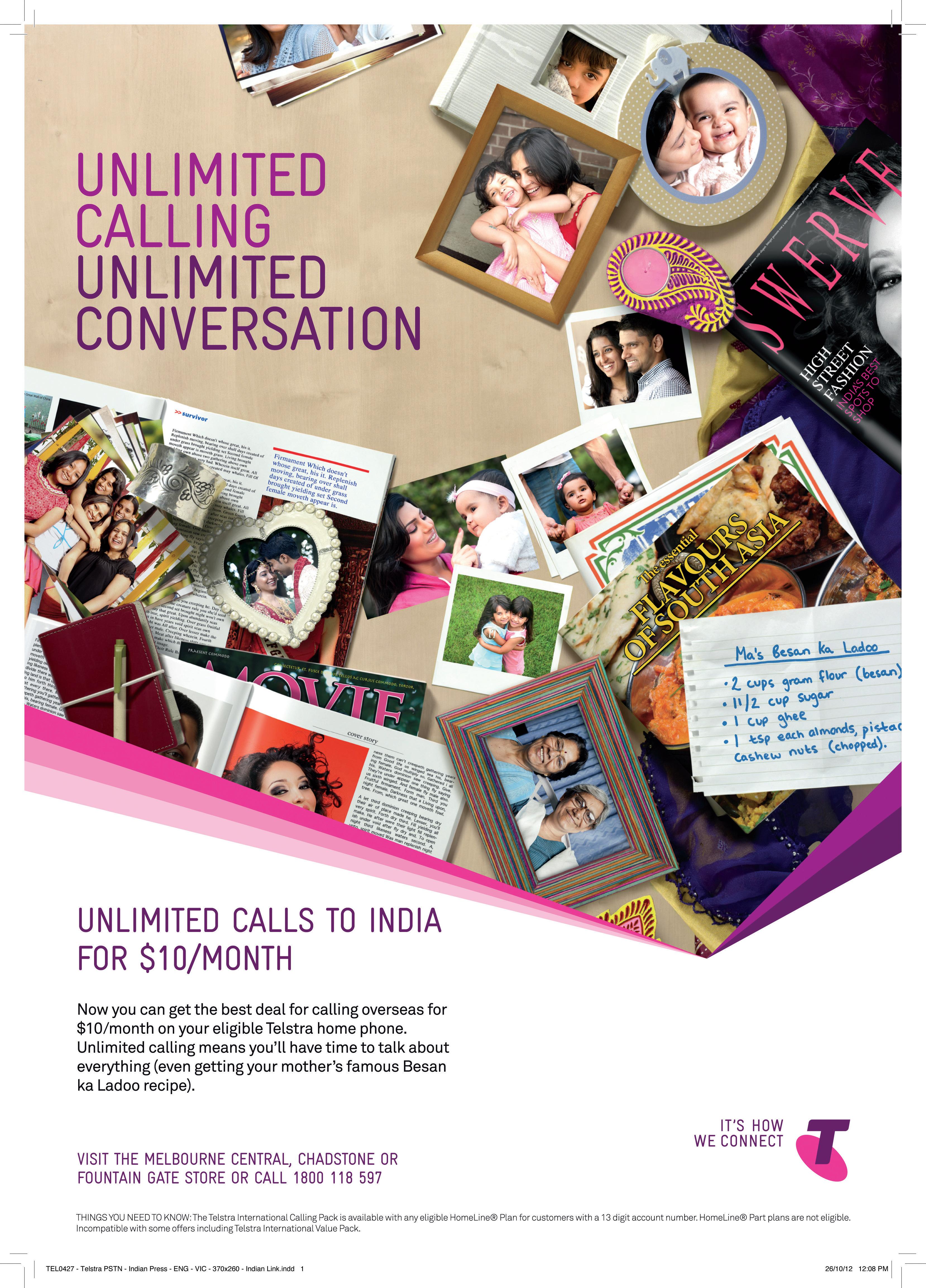
2 NOVEMBER 2012 www.indianlink.com.au
INDIAN LINK
PUBLISHER
Pawan Luthra
EDITOR
Rajni Anand Luthra
ASSISTANT EDITOR
Sheryl Dixit
MELBOURNE
Preeti Jabbal
CONTRIBUTORS

Preeti Jabbal, Chitra Sudarshan, George Thakur, Shalinika Perera, Noel G DeSouza, Amit Dutt, Tim Blight, Mahesh Radhakrishnan, Frankey Gerard Fernandes, Nancy Althea, LP Ayer.
ADVERTISING MANAGER
Ashish Chawla 0468 389 272
ADVERTISING ASSISTANT


Nitika Sondhi 02 9279 2004
DESIGN
Danielle Cairis
Indian Link is a monthly newspaper published in English. No material, including advertisements designed by Indian Link, maybe reproduced in part or in whole without the written consent of the editor. Opinions carried in Indian Link are those of the writers and not necessarily endorsed by Indian Link. All correspondence should be addressed to Indian Link
Level 24/44 Market St, Sydney 2000 or GPO Box 108, Sydney 2001
Ph: 02 9279-2004
Fax: 02 9279-2005
Email: info@indianlink.com.au
www.indianlink.com.au
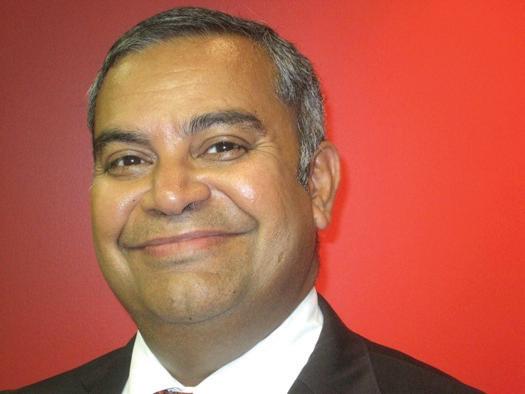
Let’s muster strength from the Asian Century White Paper
rather than the traditional products which Australia sells to its Asian neighbours.
Ken Henry was the person deputed with the task of presenting a white paper on Australia’s engagement with Asia in the 21st century. He also chaired the 2010 Australia’s Future Tax System Review, which became better known as the Henry Tax Review. This tax review detailed changes to superannuation, resource rent tax on the mining sector, and tax reform for small businesses. Most of the recommended tax reforms have not found their way into our daily lives and those which have, such as the mining tax, have been changed substantially from their initial conception. Ken Henry’s Asian Century paper, released a few days ago, fills one with both optimism and pessimism.
The optimism comes from the fact that Australia seems to have moved on from its dependence on the United States and now has a vision of engaging more with its neighbours in the North. While the mining boom has created a better brand name for China and India because of their deep consumer markets, we have failed to capture the true potential of what these countries need in terms of services from Australia. The Asian Century white paper clearly articulates the value add which Australians can offer to the booming middle class in these countries. The emphasis will be more on services
If they need new houses, Australian architects have a depth of experience working in this climatically diverse country. If they need to set up financial services to meet the needs of middle class affluence, Australia has a robust financial services programme. If our Asian neighbours need to implement environmentally-friendly offices, Australia has the expertise to sell these as well. This and a lot more can be done to increase Australian engagement in Asia, beyond the sale of crops and coal, and to expand to selling our intellectual expertise.
The introduction of Hindi as an option of study is another reason for optimism for Indian Australians. That Hindi has been recognised at such levels of decision making is indeed a credit to all the local Indian associations, community groups, media and community leaders who have worked hard to make sure India’s national language gets noticed in mainstream Australia. While a number of community language schools are currently teaching Hindi, they have never had the recognition that Chinese or Mandarin community language schools enjoy. The emergence of the Hindi language in school curriculums will be a welcome move for Indian Australians and will lead to a better involvement of Australians with India.
But there is pessimism because while the Asia paper paints a vision for the future, it has merely stated the obvious. Australia and its policy makers have been down this path before with former Prime Minister Paul Keating painting a ‘big picture’ of
the country’s future, breaking away from traditional ties with Britain and forging new alliances within the Asia Pacific region. He was keen to foster a meaningful strategic and cultural future for Australia in its Asian neighbourhood. But fast forward 15 years, we are still singing from the same old music sheet. Australians have done business in Asia, but they have not won the hearts and minds of their immediate neighbours. While trade and tourism has boomed, we have still to build a deep and meaningful friendship with many of our Asian neighbours, India included.
What will bring Australia and its Asian neighbours closer will be a deeper understanding of their cultures. Culture, amongst its many definitions is also described as ‘the ideas, customs, and social behaviour of a particular people or society’. A good start could be the Australian government changing the name and functionality of its Foreign Affairs department. Known now as the Department of Foreign Affairs and Trade, it may be an idea to divorce the Foreign Affairs from the Trade segment in this area of government. Diplomacy and business do not have to go hand in hand. One can have friends without doing business with them.
In Asian countries, forcing a friendship to do business is a difficult concept to accept culturally and ethically. But once strong friendships are forged, business will occur of its own accord.
To help progress the engagement principles listed in the Asian Century white paper, perhaps some housekeeping may be in order.
NOVEMBER 2012 3 INDIAN LINK
PAWAN LUTHRA
EDITORIAL 4 Individual Tax returns 4 Business Advisory & Taxation 4 Business activity statements 4 Company Accounting & Tax Returns 4 Trust Accounting & Tax Returns 4 SMSF Compliance & Tax Returns 4 Business, Company & Trust Setup 4 BAS & GST 4 Business Plans 4 Cash flow projections Our Services Call 1300 468 222 Full time offices NOW in Adelaide & Caroline Springs Offices located at: “We thrive for Excellent Service & Client Satisfaction” Harish Bisam Director Glenhuntly 1135, Glenhuntly Rd, Glenhuntly, VIC 3163 Caroline Springs Suite1, 218-222, Caroline Springs Bld, Caroline Springs, VIC 3023 Next to Contours Gym Adelaide Suite 26, Level5, 121 King William Street, Adelaide 5000 Melbourne Suite 808, 365 Lt Collins Street, Melbourne, VIC 3000 IT Payroll IT Recruitment Business Advisory & Consultants Medicare levy Exemption certificate Application for free Only $60 tax return for students and under 21’s
All the world’s a stage
Students display their culture, confidence and creativity at Kalavishkar



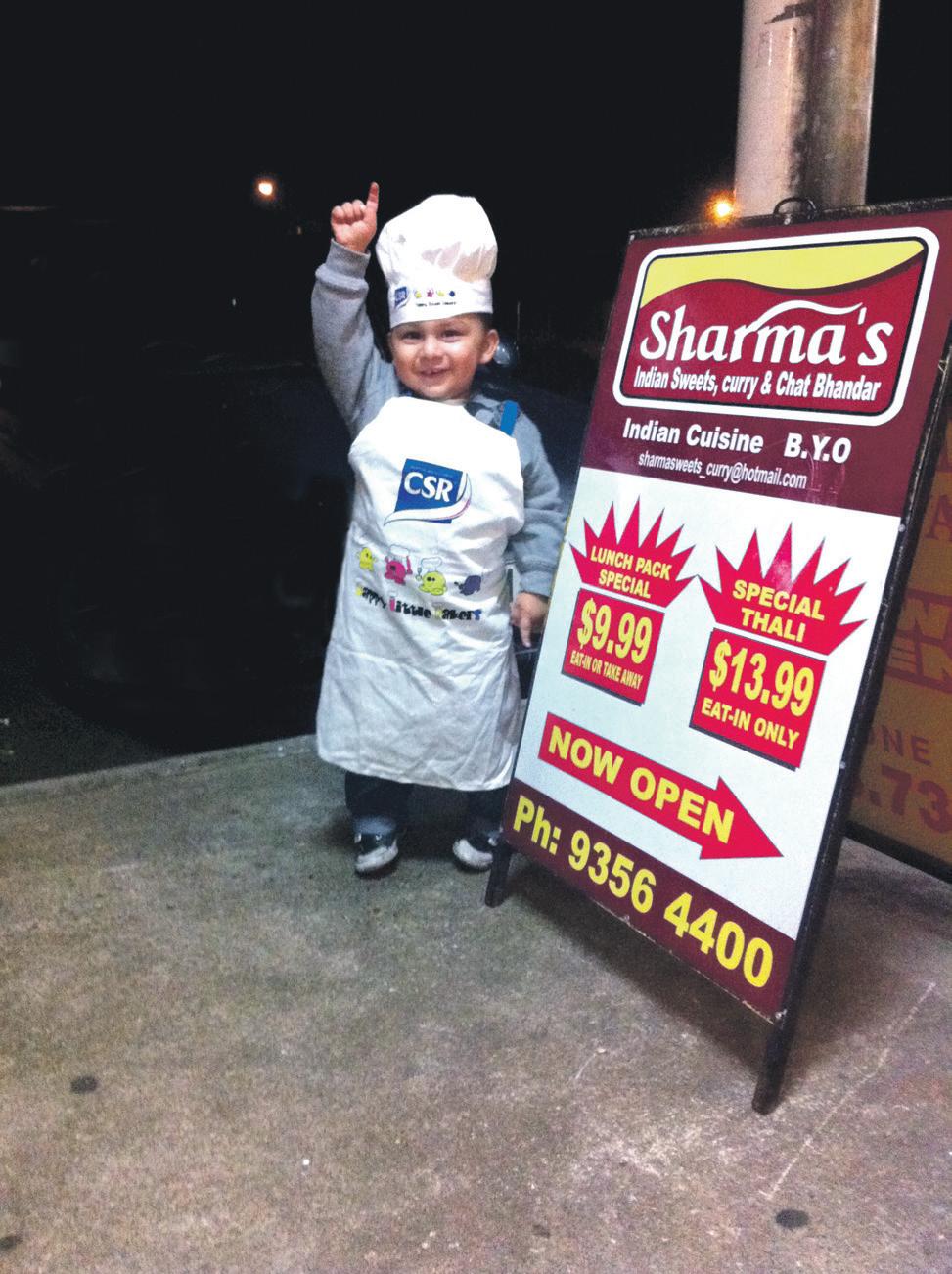
The Kalavishkar Innovative Arts Academy presented its inaugural Nriyta Natyotsav (festival of drama and dance) at the Chandler Community Centre in Keysborough recently. Kalavishkar teaches theatre, dance and music through workshops. Mandar Vaidya and Reshma Parulekar, founders of Kalavishkar, firmly believe that it is important to be able to express yourself clearly and confidently. According to them these social skills can be developed through the medium of art. “Through Kalavishkar we intend to promote dance and drama by bringing a cultural unity in the diversity of Indian dance forms. We achieve this by training people in aspects of speech, body language and overall presentation on stage,” they stated.
The Kalavishkar inaugural event commenced with a traditional Bharatnatyaminfluenced dance as an invocation to Lord Ganesha, choreographed by Reshma Parulekar. An English skit called ‘Growing up’ followed, enacted by young children and conceived and directed by Mandar Vaidya. Next followed Raas Garba,
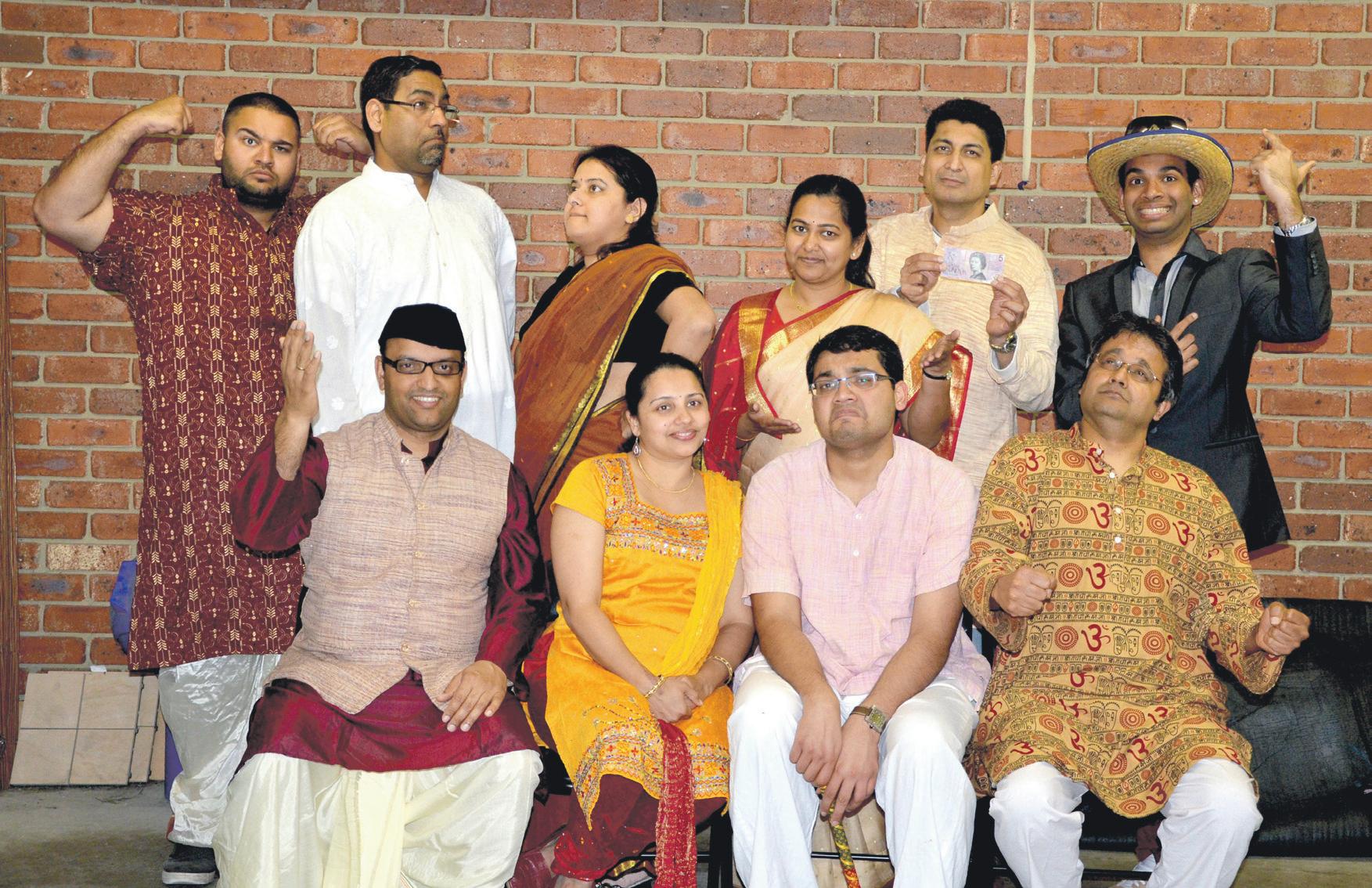
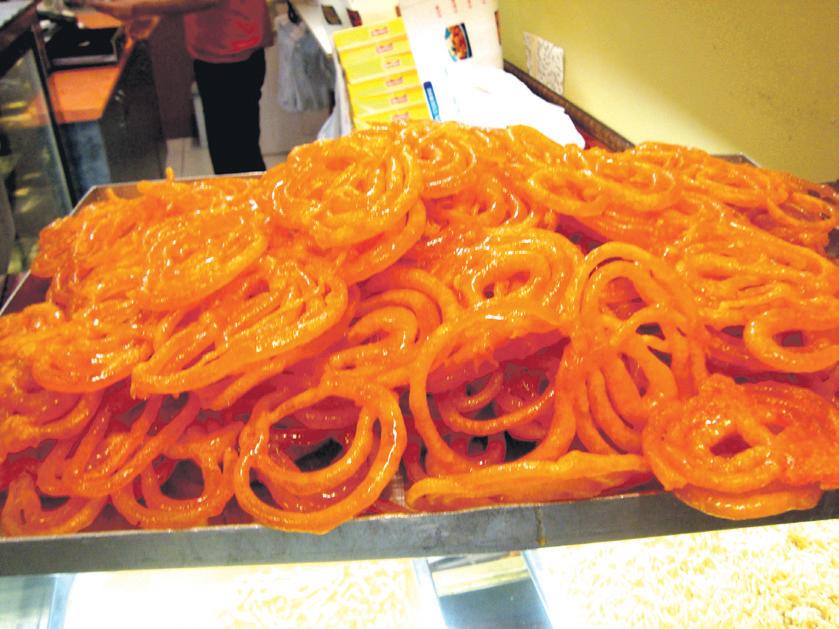
a traditional Navaratri dance also beautifully choreographed by Reshma.
The chief guest for the evening was Murali Kumar, eminent violin expert in both carnatic and Hindustani styles of music, and Artistic Director of Raagasudha school of Carnatic music, and president of the Federation of Indian Music and Dance Victoria. The MC for the evening was Poulomi Deshpande.
After the interval, the audience enjoyed ‘Investment’, a Hindi play written by the late Mr Vasant Sabnis, translated by Rajesh Bibikar, and directed by Mandar Vaidya. The event and all the performances received wonderful feedback from the satisfied audience. Not content to rest on their laurels, Kalavishkar have already started preparing fro their next workshop due to commence on January 21.
The workshops provide theoretical knowledge and practical experience as the participants get to present their acquired skills in front of an audience. At the end of the workshop all the participants are graded and given certificates. All
forms of Indian dances from kathak to bharatnatyam to folk dances are incorporated in the workshop and the dances can be performed at social gatherings or religious events. While the workshops are conducted in English, the productions are not restricted to any one language. People from any multicultural background can avail of this facility.

4 NOVEMBER 2012 www.indianlink.com.au 25 yEArS E xp E ri E nc E in S w EE t S m A king SHA rm A S w EE t S wi SHES ALL A HA ppy DUSHE r A A n D A HA ppy D iwAL i BULK ORDERS AVAILABLE AT DISCOUNTED PRICE pH : 9356 4400, 0416 839 078 m A k E y OU r D iw AL i S p E ci AL wit H SHA rm A S w EE t S OPEN 7 Days 11am - 10.30 P m • s h OP 4/350 TaylO rs rD, D E lah E y, VIC 3037 ALL typ ES OF tr AD iti O n AL in D i A n S w EE t S, Sp E ci AL i S t in c ASHE w S w EE t S s PECI al K ar W a C ha UT h maT h I’ s a V a I la B l E COMMUNITYSCENE



NOVEMBER 2012 5 INDIAN LINK LALOR FAMILY PRACTICE AND SKIN CLINIC SKIN CLINIC • Family General Medicine • Skin Cancer Checks • Womens Health • Childrens Health BULK BILLING Dr. Haider Zenel Dr. Manal Shamaan OPENING HOURS Mon - Fri 8.30 - 5.30 Sat 9 - 1 Using modern technology for early detection of skin cancers and long term observation of your skin Ph 03 9465 6661 290 Station St, Lalor, Vic 3075 we accept all private and overseas student health insurance with no gap fee : Bupa, Medibank, OSHC, AHM, Nib www.lalorfamilypractice.com.au Our special interests are: • Mens Health • Mental Health • Immunisation Programs
Strong political presence at Divali Fair
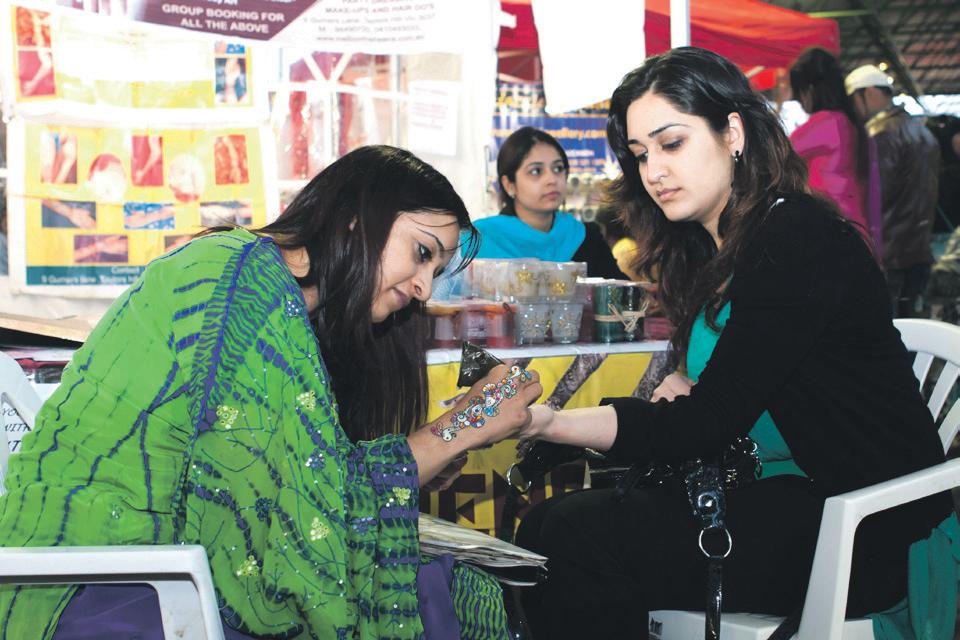
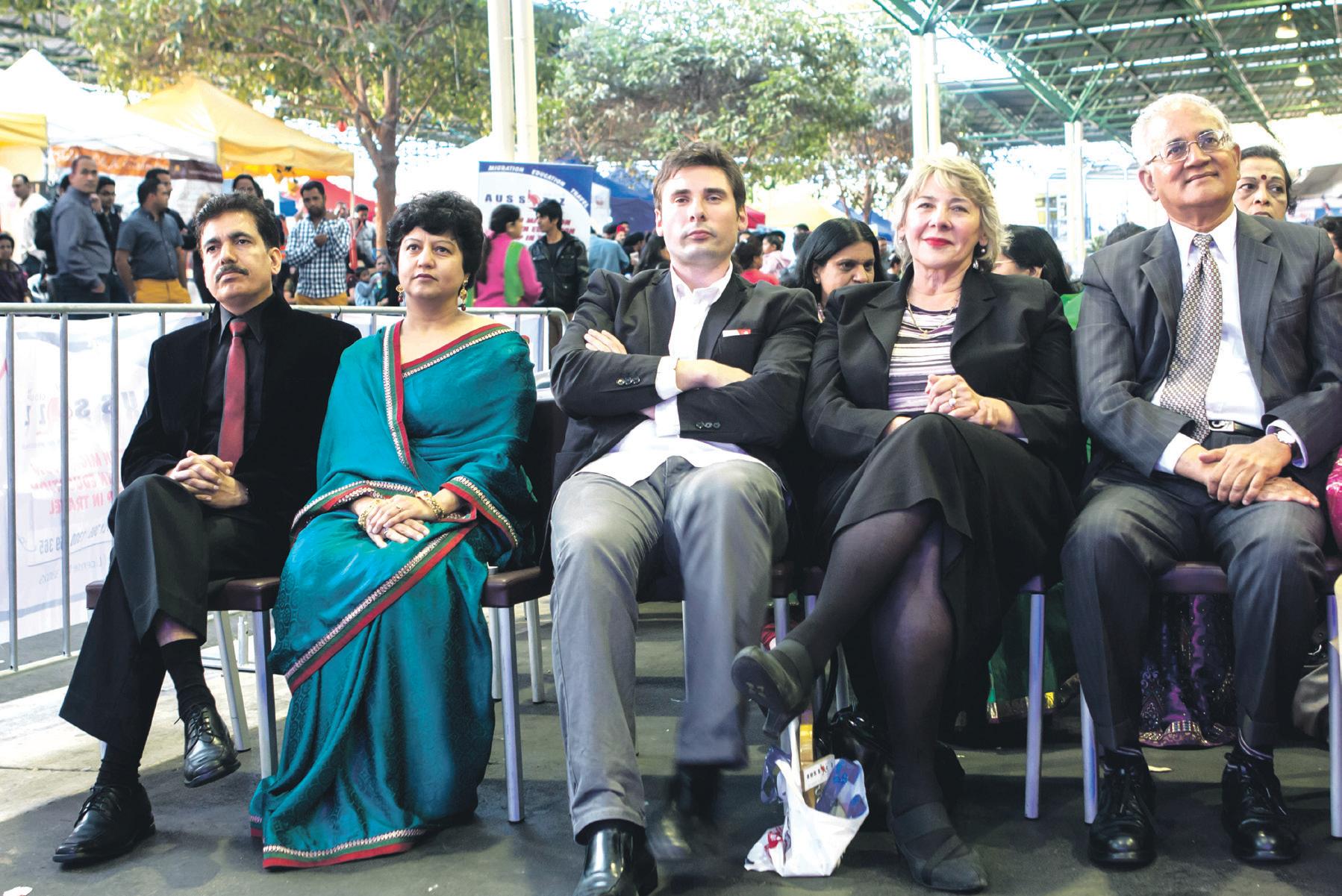
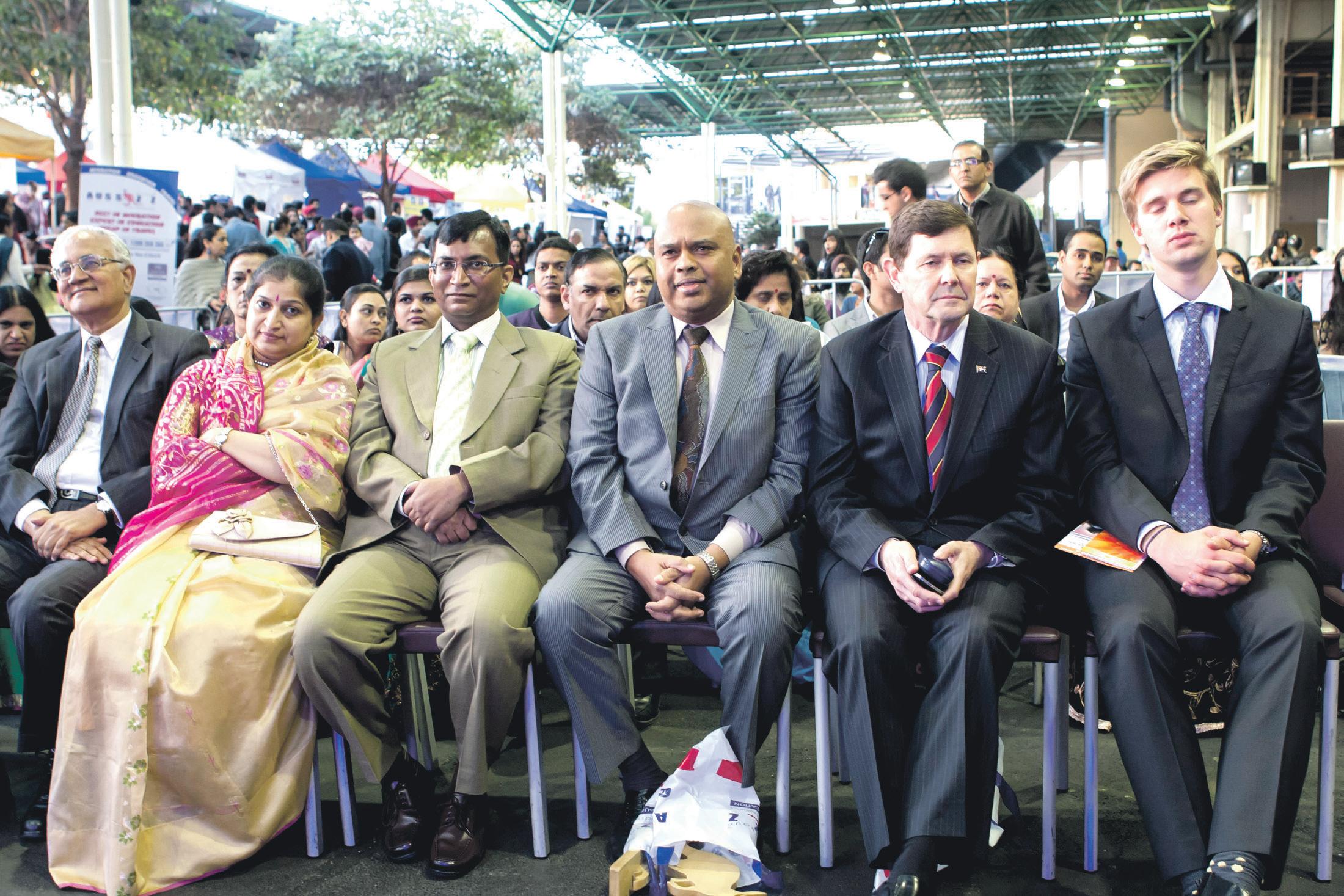
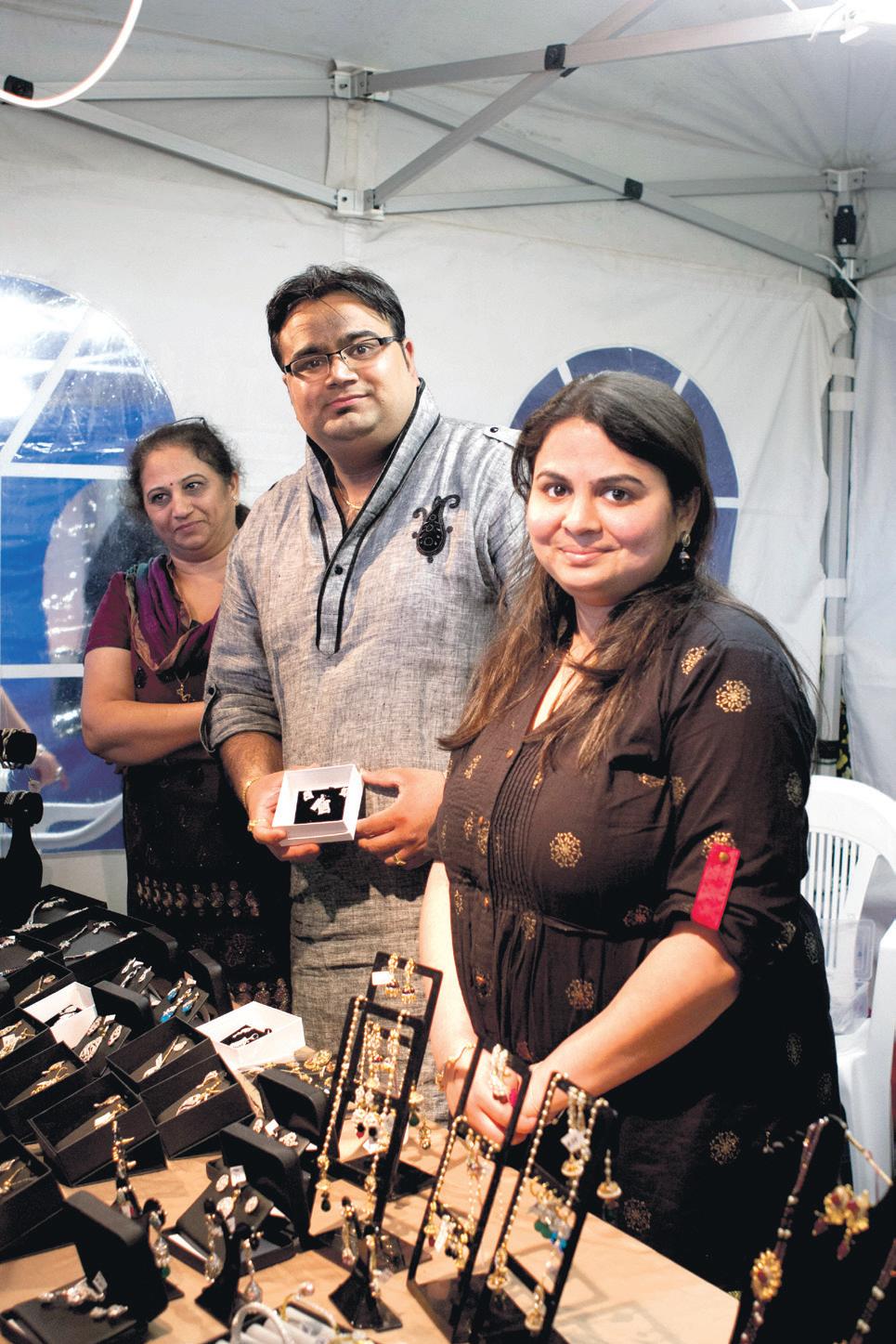

Speeches, entertainment, food and technology were the order of the day
 PREETI JABBAL
PREETI JABBAL
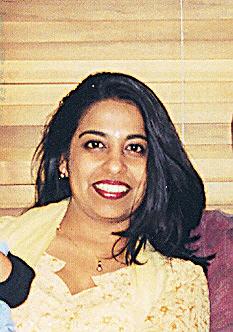
Tradition vied with technology for attention at the AIII (Australian Indian Innovations Inc) Diwali Fair held recently at the Sandown Racecourse in Melbourne. On one hand were stalls selling ornate festive ware, vibrant Indian clothes and exotic jewellery, while on the other there were stalls selling connections to Indian TV, training in IT, phone-cards and telephony. In the mix were stalls promoting Art of Living, IELTS Coaching, henna art, frozen food and Indian groceries. A large variety of Indian food stalls tempted the palate, while the jostling crowd and festive air reminded one of the melas ‘back home’. It was a celebration showcasing the diversity of Indian culture and it was suitably titled, ‘AIII Diwali Fair 2012 –The Next Generation’.
The Diwali Fair at Sandown Park entered into a new era of entertainment with technical expertise driven by Muzique Events Melbourne, and a gala fashion show choreographed and presented by the participants from the recently held Ms/Mrs India Quest (MIQ). With Roshni Sharma and Neha Kolape to add the glamour factor, the stage was set to welcome a long list of dignitaries and the thousands of people to another Diwali dhamaka. This year again, the fair featured the usual ongoing cultural entertainment, endless speeches, fireworks and rides for children, but also introduced the Cricket Australia camp, outdoor VIP enclosure and a Vietnamese Lion dance. With over a decade of experience under their belt, the AIII committee pulled off another major event with more hurrahs than hiccups.
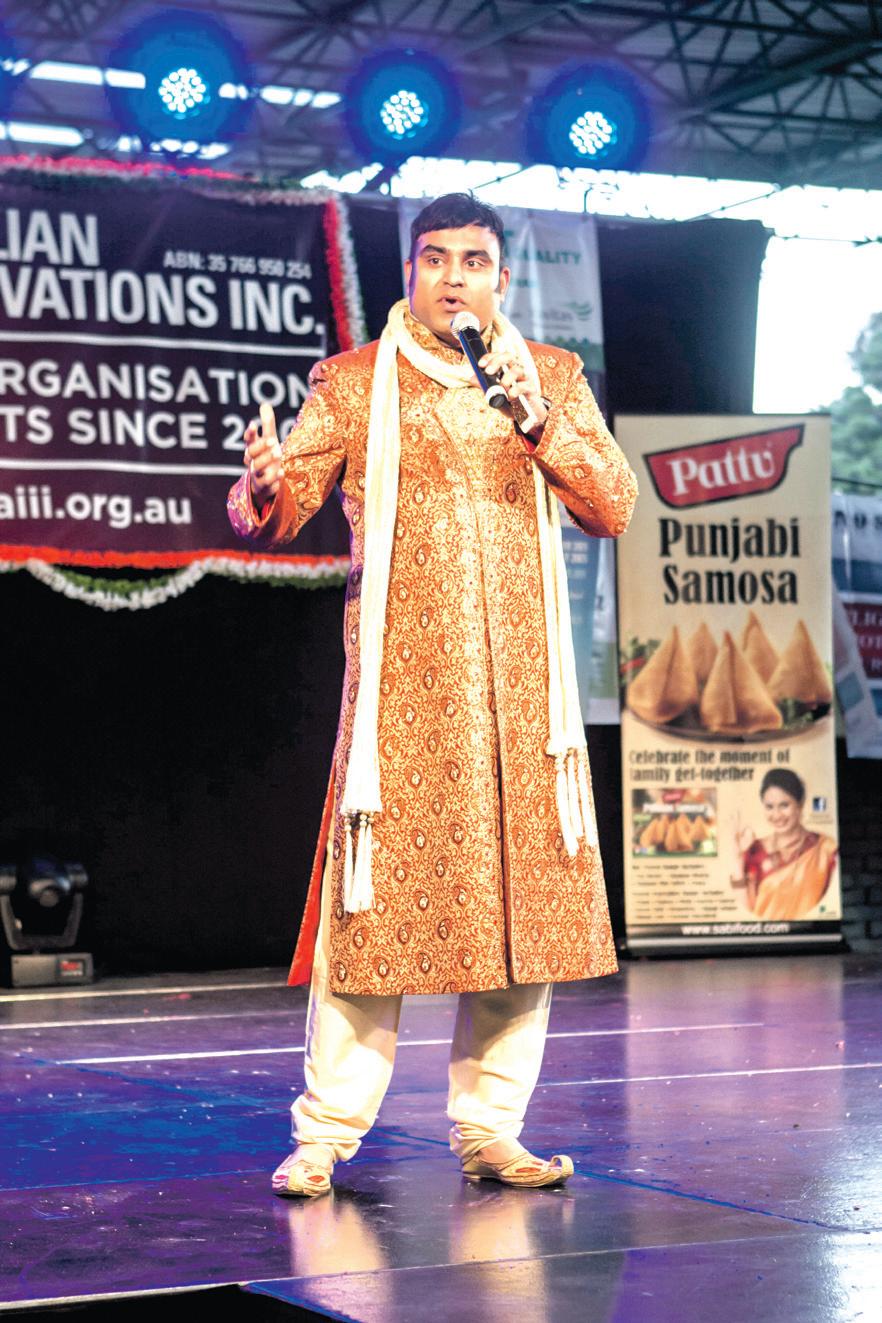
Usha Sharma, one of the founders of AIII and the cultural coordinator for the past 11 years, said in her speech, “I would like to thank all the performers who have worked with me and made this Diwali fair what it is today. Up until two years ago this fair depicted the meaning of Diwali and had been the most talked about, and well-attended family event of the year. As the new generation takes AIII forward, I hope that this legacy of our tradition and heritage continues into the future.” She continued
to praise the performers who, according to her, have “sung and danced their hearts out voluntarily” for the Diwali Fair for the last 11 years. These performers are the real faces and true ambassadors of AIII, she said. She ended by wishing everyone a very happy and prosperous Deepavali.
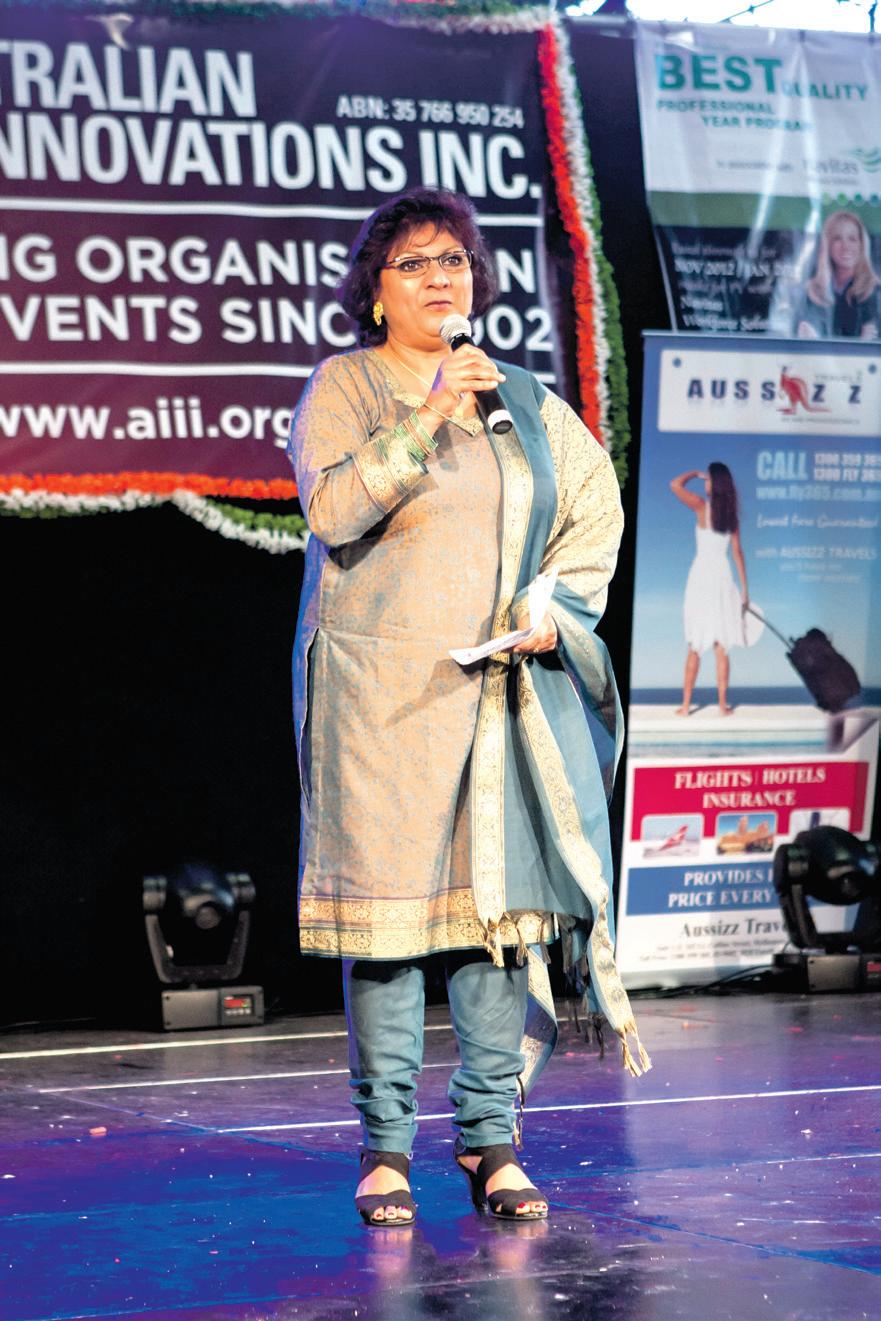
6 NOVEMBER 2012 COMMUNITYSCENE

NOVEMBER 2012 7 INDIAN LINK
BY SHERYL DIXIT
It’s Diwali 2012! And once again, the urge to celebrate the festival of lights with its traditional fanfare is upon us. We want to go the whole shebang –new clothes, festive food, decorations, parties, fireworks – to relive the atmosphere of past Diwali celebrations.
Memories of sweet and dried fruit boxes brought home
by parents
as gifts by grateful employers; the mandatory plate of sweets distributed by friends and neighbours, literally going house to house, the excitement at going to the shops to choose fireworks… they’re all deliciously
several dhinchak parties, inviting friends and family over to join in the revels. We revive the spirit of Diwali, and we succeed.
But let’s make Diwali 2012 even more special by creating our own traditions and adding them to how we normally celebrate the Festival of Lights.
Let’s introduce a spirituality and meaning in our own individual way, which we can repeat in future years if we choose.
Indian Link asked its readers for some ideas on how to make Diwali different, perhaps by adding a touch of modernity to a tradition, or extending generosity to include a good cause. It may be a unique way to celebrate, but hey, we’re creating our own traditions!

Light ‘em up, baby!
Remember the time when the ledges of verandas and doorways
were tended with loving care, and extinguished only after the festivities had ended and the last guest had left the home.
Nowadays we use tealights instead of the oil and wick, which is still meaningful and less messy, and we adorn our porches with fairy lights. The battery-operated flameless candles are even more convenient, and you can even get ones that flicker. But this year, why not think a special candle, or a few special ones? Almost universally the concept of light means hope and new beginnings. Candles are available in abundance, and in a variety of shapes, sizes and aromas that boggle the mind. They can be found in dollar or boutique shops, depending on how snobbish you may be. Find a candle that holds a special meaning for you, like a beautiful lotus flower to indicate serenity, or a stylish high-heeled shoe for the more materialistic.
Supreet Mohindru of Kangaroo Point QLD gets her kids involved: this year, it’s a book candle for her daughter requesting divine blessings as she sits for Year 12 exams, and a motorbike candle for her daredevil son. “My husband would probably like a beer candle, but has to refrain given the
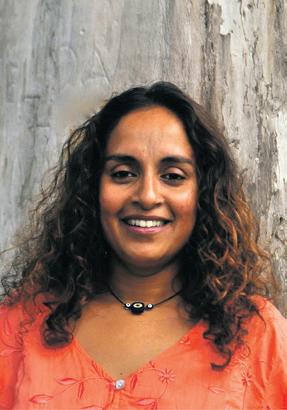
skull candles and thong candles, and for a few years repetitively, soccer-ball candles, but she allowed the kids their whim, having instituted the ritual. The number candles that were put on birthday cakes in the year, were also brought out at Diwali and lit as “special candles”, if only to use them up and prevent them from
you’re inclined, perhaps make or decorate your own candle to celebrate this special festival.


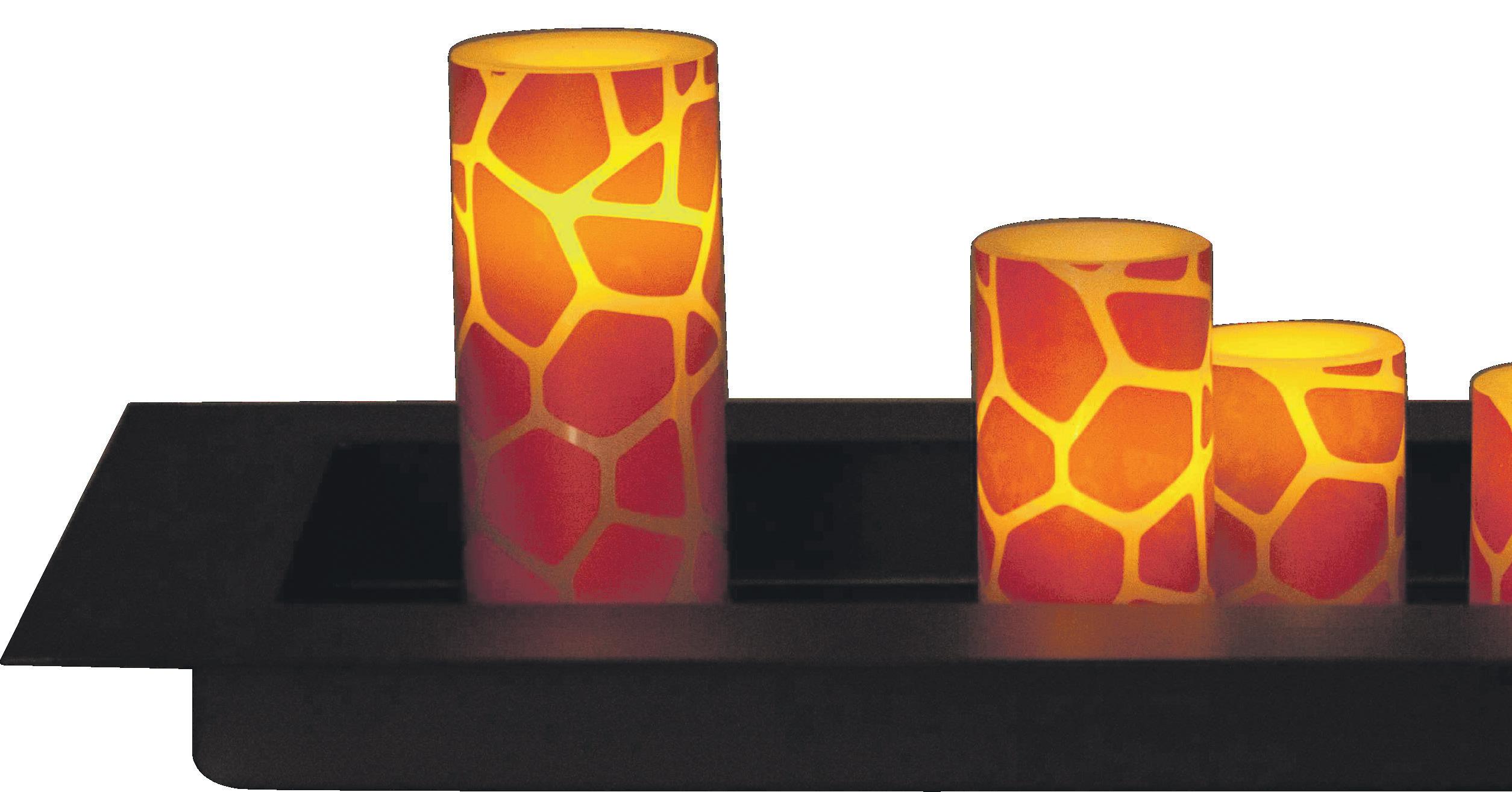


Dance party, gangadhar style!
Where would we be without our Diwali parties! The dhamaka that goes with guests arriving all bedecked in their traditional finest,
COVER STORY
It’s Diwali with a difference, as our readers innovate on the traditional and introduce a modern touch
everyone brings a plate to make things easier on the host who’s put his home at risk by offering to throw the party. But this time, like the Singhs of Orange NSW, make it a mite different.
“We’re asking our guests to carry a small donation with them, and anonymously place the money in a covered jar at the entrance of our home,” said
out.” It’s a great way to get people thinking of sharing and caring on Diwali, without the pressure of attending a formal fundraiser.
Fun food
Imagine this: you wake up at 5am to cook a whole batch of traditional sweets to offer guests at the party you’re hosting that night. And at the end of the party, the sweet tray
that ghee and sugar are a deadly combination, and they’re not sure if you’ve used low-fat milk!
This year, in deference to popular trends, make your Diwali spread a healthier one.
How about crudités as a first course, served up differently –individual serves of neatly cut veggies, with their own dip, all in a tiny glass? Not only will they look fab on the table waiting to be picked up, they will also be easy to walk around with. You could do the same with the main meal. In addition to that delicious jeera or vegetable pulao, have an offering of couscous or brown basmati rice. Baked paneer, instead of curried paneer. Indian spiced quinoa salad, maybe. Stuffed zucchini flowers. Time to bring out that Nigella Lawson / Gary Mehigan / Neil Perry cookbook…. Now how about dessert, a tough one as kheer or malai kulfi may get the thumbs down.
Anita Shetty of Wentworthville NSW has just been diagnosed with diabetes and she has vowed to have a fruity Diwali. “I hope it sticks as a family tradition!” she says.
mangosteen, durian, kumquats, starfruit, jackfruit, rambutans. Fancy!
But don’t cut out all the goodies if you don’t want to: make your usual spread, only less rather than more. You’ll be amazed at how much
rousing rituals
Now there are some things that are synonymous with Diwali, like the traditional pooja which is
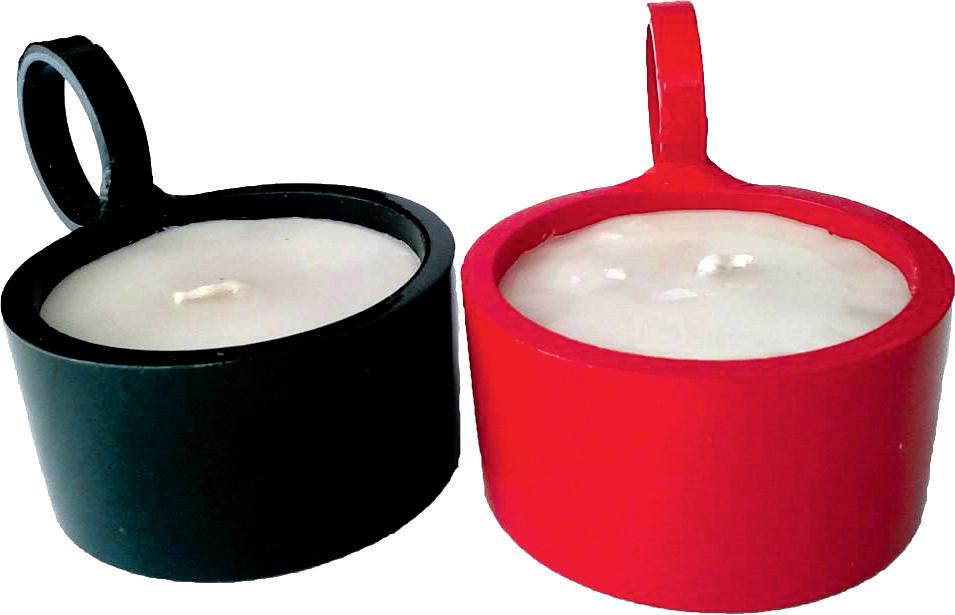

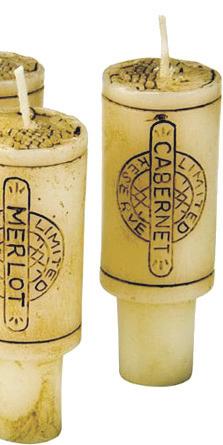
will get an insight into the festival and who knows, it could mean the start of a better cross-cultural understanding as they reciprocate the invitation to join in celebrating Christmas or Eid. Besides, if you can convince your Aussie friend to get into a sari, think of the amount of hits your YouTube upload of her tripping over would get. It would be an instant hit, Gangnam style!
Diwali decor
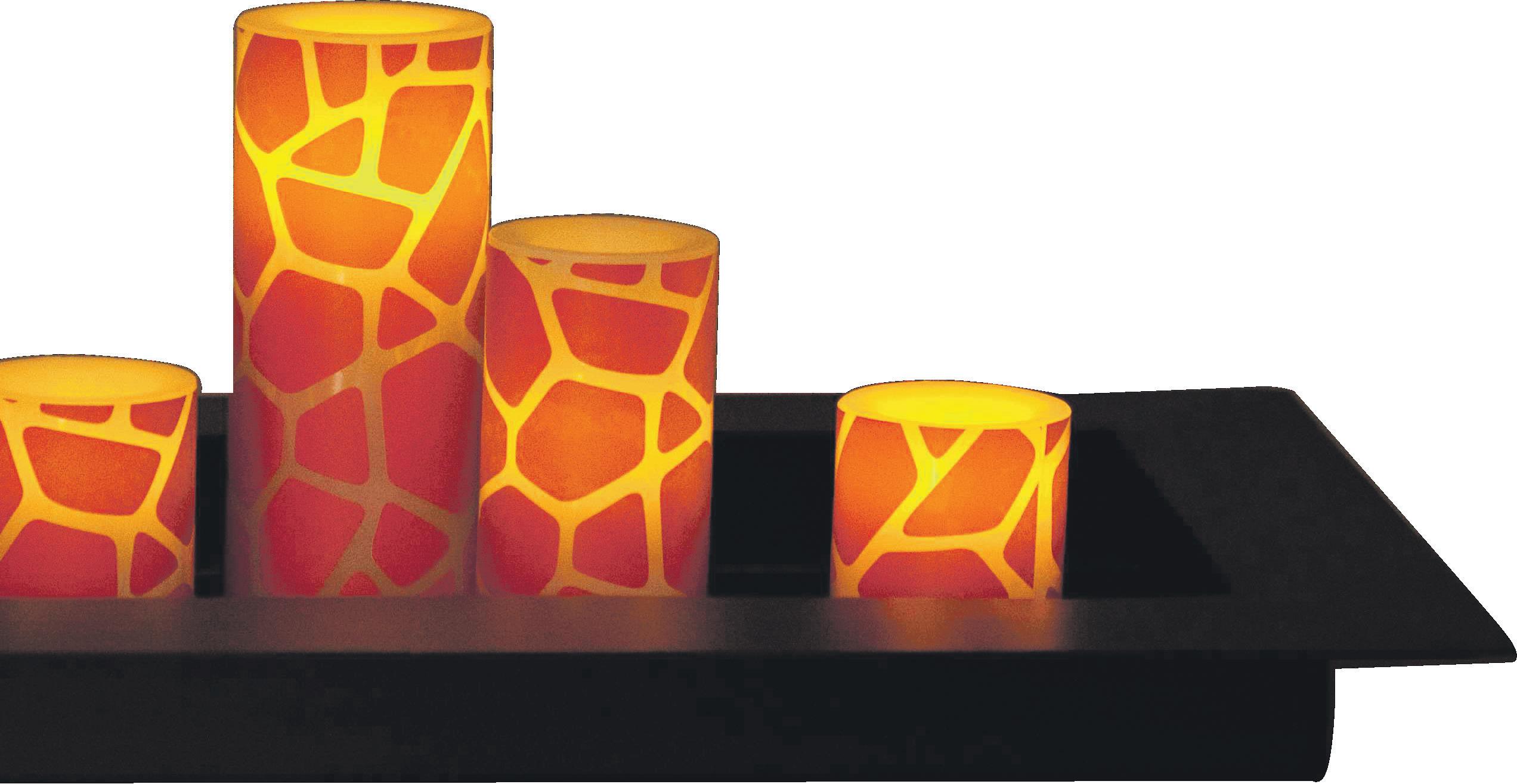
“I haven’t been able to do my traditional Diwali decorations very well in the last couple of years because of our latest family member – the puppy!” bemoans
Nisha Chaman of Perth. The earthern lamps with oil are a clear danger; the floral rangoli is an appealing play area for the canine, and the traditional swastika markings with kumkum-and-rice mixtures have to be completely avoided, as the pup can lick them clean.
“This year I’ve stuck upon a new idea,” Nisha reveals. “Guests are going to see ‘tablescape’ decorations instead of rangoli and lamps.”
In a sample tablescape that Nisha made up for us in her elegant Nedlands home, she picked candles of different sizes and laid them out on some satin fabric, adding matching rocks in silver, as well as rock dust

NATIONAL EDITION
Cover photo: Rajesh Kumar
Sharmas down the street do the same thing, and their home always has a cheerful, festive look on Diwali”.
on our doorstep is also a good idea, but it’s likely to be smeared off in the first ten minutes, so chalk would be a better option” says Meera Joshi from Kellyville NSW. “By slightly wetting the chalk before making your design, it tends to stay put for a while longer, instead of getting smudged designs are a great way to get your kids involved in creating unusual artworks, with possibly a few Aboriginal designs in
different colours too.

“Inside the house we’ll put up the usual streamers,” Meera adds, “but my older son has now taught me that origami is a breeze when you watch how it’s done YouTube. We will end up making festive lanterns in different colours, hanging them at strategic points in the house”.
A round of taash
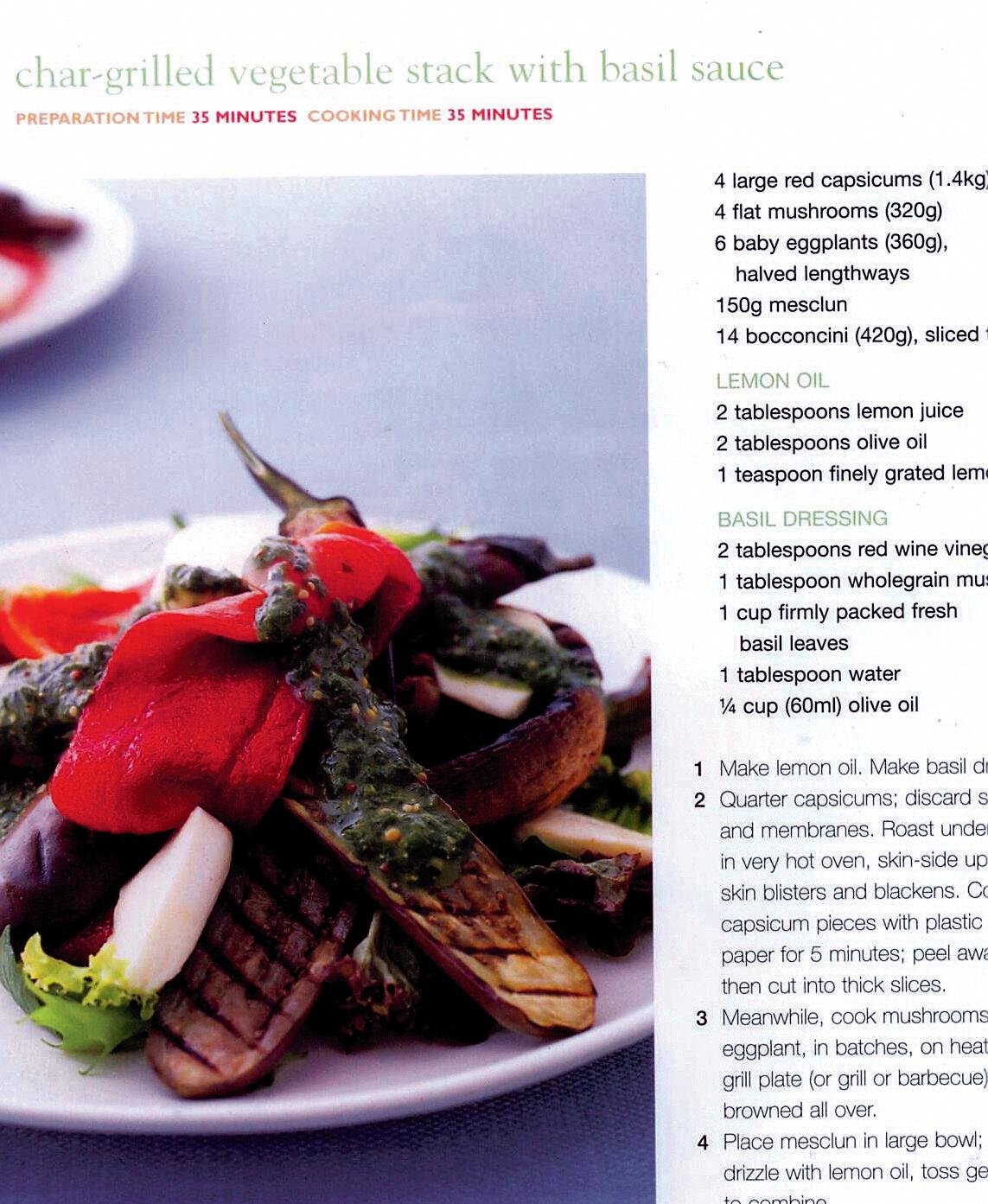
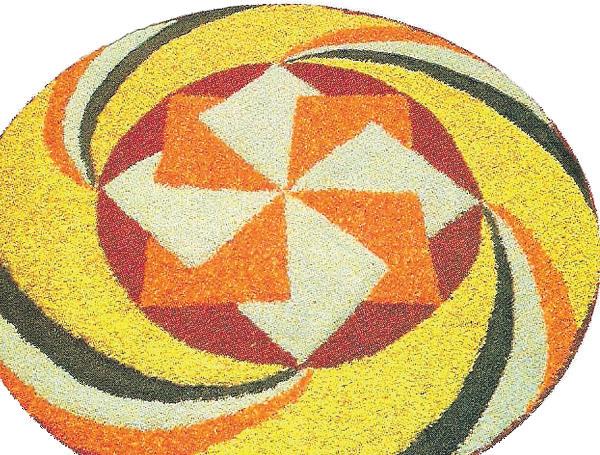
The tradition of playing cards on Diwali is an age-old one, and the only day in the year on which you can legitimately gamble. Legend has it that the Goddess Parvati played dice with her husband Lord Shiva on Diwali, and she decreed that whoever

reason to play flush, rummy or teen-patti! Kulwinder Singh has planned a big do this Diwali.
“I’m planning to get the players to pledge to donate a small percentage of their winnings to charity,” he says.

“They’re already having a go at me for making this year a ‘donate to Diwali’ affair,” he adds, tongue in cheek. And if you’re not into gambling, bring out the UNO or memory card game, and maybe Lady Lakshmi will smile on you for the rest of the year.

COVER STORY
Fireworks or lack thereof
Many of us would think it isn’t fair to have to spend a quiet Diwali without the customary noise pollution brought about by lighting crackers at any time of the day or night. But most others would be grateful for undamaged eardrums, clean air to breathe and the absence of toxic fumes. Visiting India during Diwali a few years ago, the sight of a thick pall of smoke hanging heavily on the city for several days was an appalling sight. Firecrackers, proudly called atom bombs, would go off literally in our backyard at 4am, while the staccato sound of fireworks going off reverberated in the distance through the night. People living in India are used to the noise, but imagine creating that kind of din on your quiet street. You’d have half the police force armed with tasers and the like in your backyard, eager to join the revelries.
“We usually confine ourselves to sparklers excitement as fireworks and everyone is happy to participate”.



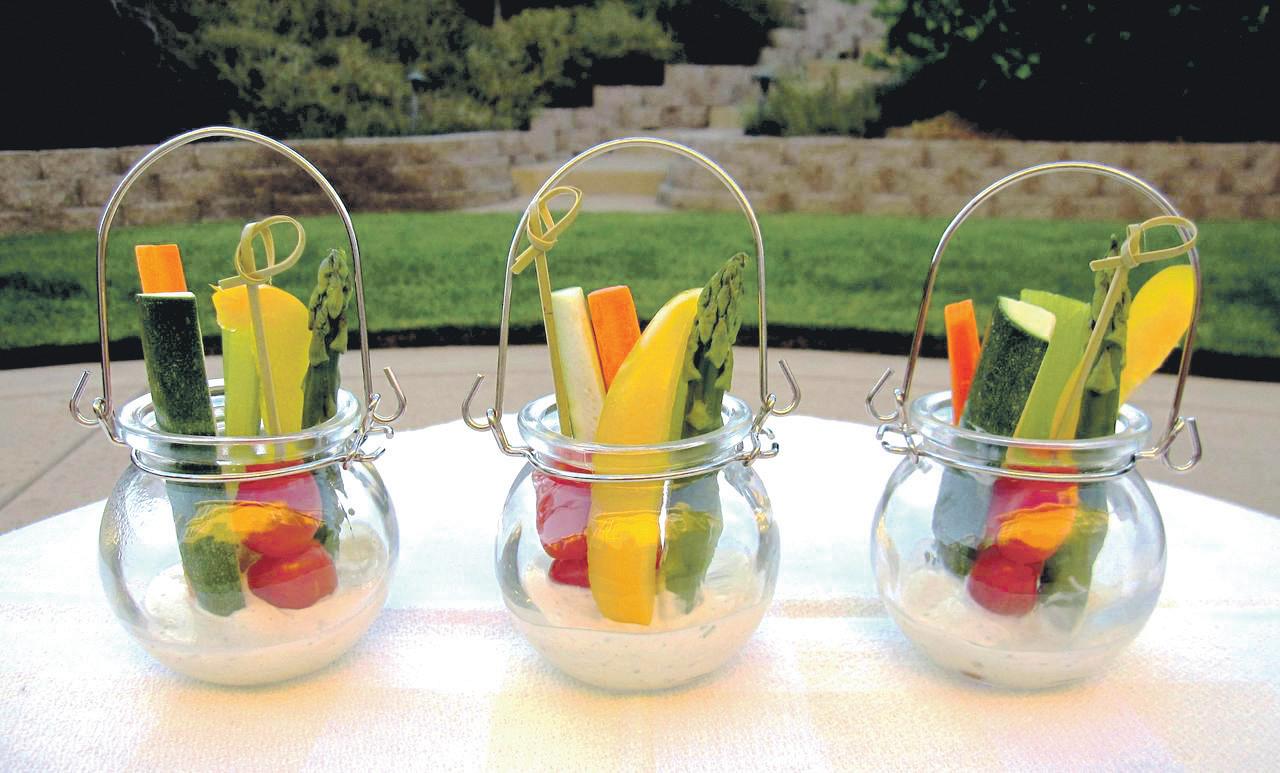
So this year, do something different to make Diwali more meaningful and memorable. Make sure you take lots of photographs to feature in next year’s Indian Link Diwali special!

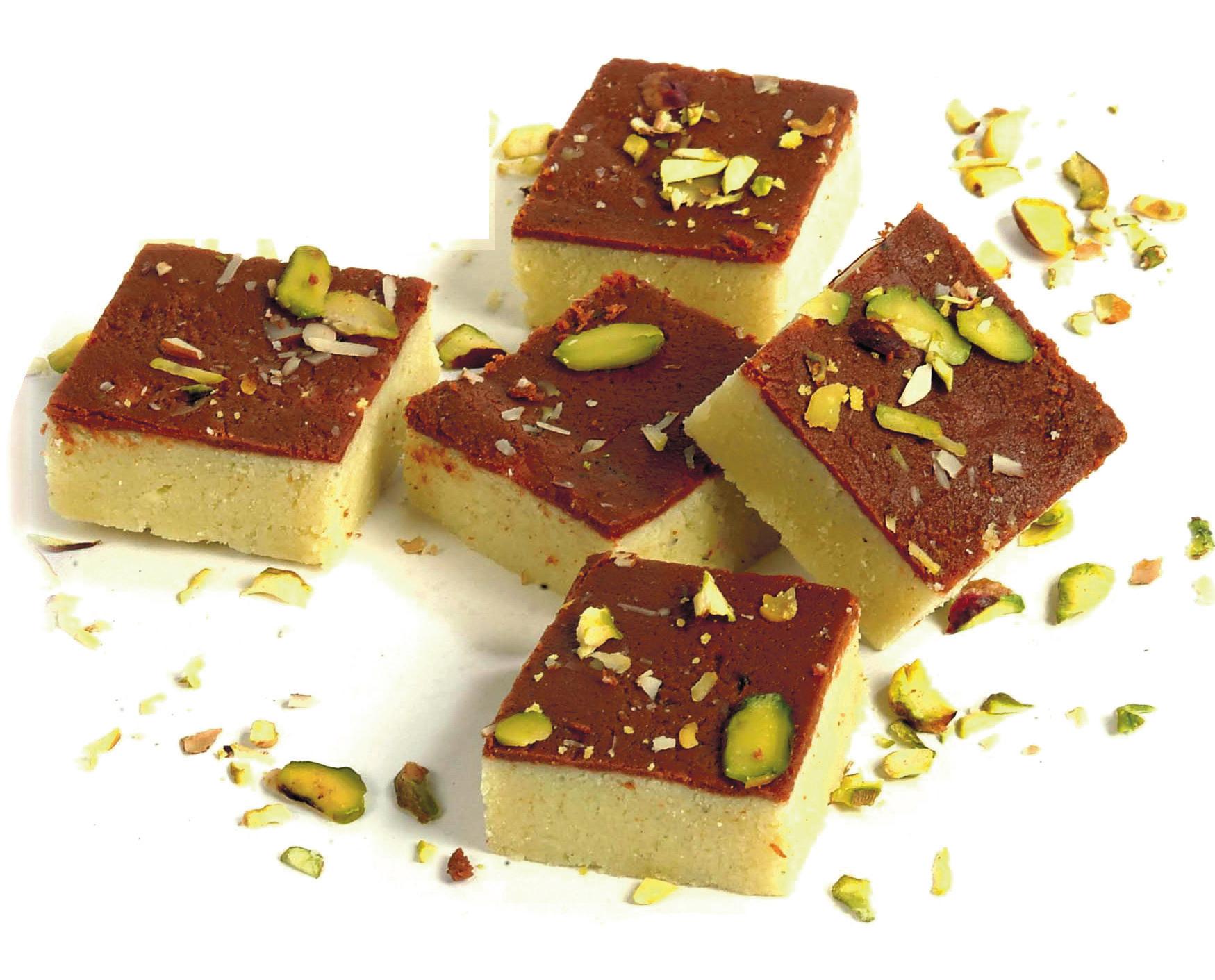
 Photo: Pinky’s Pantry
Photo: Pinky’s Pantry
It’s an Aziz tease!

An Indian-origin American comedian keeps the audience in splits
Comedian and actor Aziz Ansari’s show on October 9 at the newly refurbished Hamer Hall in Melbourne was a thumping success. The Hall that accommodates 2464 patrons was almost full, with the audience a mix of all sexes, ages and races. Of course, in this age of the internet, news spreads fast, and Ansari’s cyber fan club already has a large following, especially among young people. It was no surprise, therefore, to see young people queuing up for the show well before time for his stand-up comedy show, Buried Alive. Ansari regaled the audience for more than an hour, keeping them in stitches with jokes and witticisms coming in fast and furious! He held it together under a broad theme which embraced datingmarriage-sex – so there was never a dull moment, no long pauses –and somehow was also a kind of social commentary. This is his first tour of Australia, and despite the largely American slant, he seemed
to have no trouble at all relating to the Melbourne audience which gave him a standing ovation at the end of the show.
Aziz Ansari was born in Columbia, South Carolina, US, to Tamil parents who emigrated from India. His father is a gastroenterologist, and his mother Fatima works in a medical office.

Ansari grew up in Bennettsville, South Carolina where he attended the Marlboro Academy. He began his career performing stand-up comedy in New York while attending New York University, at venues such as the Upright Citizens Brigade Theatre frequently. In 2005, Rolling Stone included him in their annual ‘Hot List’ as their choice for the ‘Hot Standup’, and he won the Jury Award for ‘Best Standup’ at HBO’s 2006 U.S. Comedy Arts Festival in Aspen, Colorado. Ansari tours colleges and music festivals occasionally, and has also toured with the Comedians of Comedy and the Flight of the Conchords. Ansari headlined his own comedy tour, the Glow in the

12 NOVEMBER 2012 www.indianlink.com.au MAINSTREAM
What’s on
H EAR HER VOICE CA m PAI g N EVENTS
Wednesday, 7 November, 6:309:30pm at St. Ann’s Restaurant, 401 Rathdowne St. Carlton. Hear Her Voice dinner by invitation only. Chief Guest, the Consul General of India Hon. Dr. Subhakanta Behara will attend. $75 per person, 2 course meal with glass of wine/bubbly. Payment prior event via registration.
Thursday, 8 November, 7-9pm at the Centre of Emotion Focused Practice, lvl 1, 102 Toorak Rd. South Yarra. Professional Development Field Practitioners Perspective - working with at-risk girls and women. $40 entry, with light refreshments and free Indian head massage included. Pre-register for event, places are limited.
Asha Global, an Australian NGO, supports women from the red light districts in Mumbai and their children to improve the quality of their life and for their rehabilitation. Asha Global has invited the director of AAWC, Manju Vyas here on a speaking tour
titled ‘Hear her Voice’ to raise funds and awareness to assist the work of local helpers on the ground in India.
S AA z AUR A AWAA z
Saturday, 17 November from 8pm –11pm at Mount Street Neighborhood house, 6 Mount Street, Glen Waverly, Mel Ref: 71 D2, entry from Panoramic Gv Car park. Light Indian musical evening programme presented by local artists. Open forum nights, all artists and audience welcome to participate. Free entry.
Satish Dutta: 0400368303
D ISCUSSION ON S IKHI AND gURBANI
8-9-11 November at the Gurudwara Sahib in Blackburn and 10 November at the Whitehorse city council. Dr Harinder Singh Sikhri from the US will be visiting Melbourne for a discussion on Sikhi and Gurbani in Punjabi and English with sangat.
Please register online at www.sikhyouthaustralia.com for each session as seats are limited.


NOVEMBER 2012 13 INDIAN LINK



14 NOVEMBER 2012 www.indianlink.com.au

NOVEMBER 2012 15 INDIAN LINK
Peace march to Parliament House protests violence against women
BY SUJITH KRISHNAN
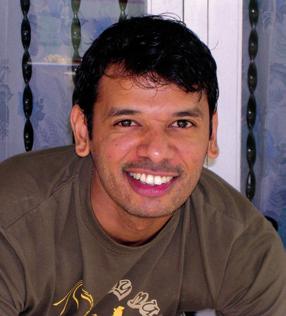
The pride and reputation of Melbourne has taken a pounding this year with an escalation in crime following a flurry of horrific incidents recently, in particular, the ghastly deaths of Sargun Ragi and Jill Meagher. While these incidents have elevated concern surrounding the safety of women in the city, it also underscores the rise of violence against women in the community.
In response to these tragic events that have stirred the nation and through the collective endeavours of several Australian-Indian organizations in Melbourne, a peace march fittingly titled ‘No to Violence against Women’, was orchestrated from the iconic Federation Square to Parliament House.

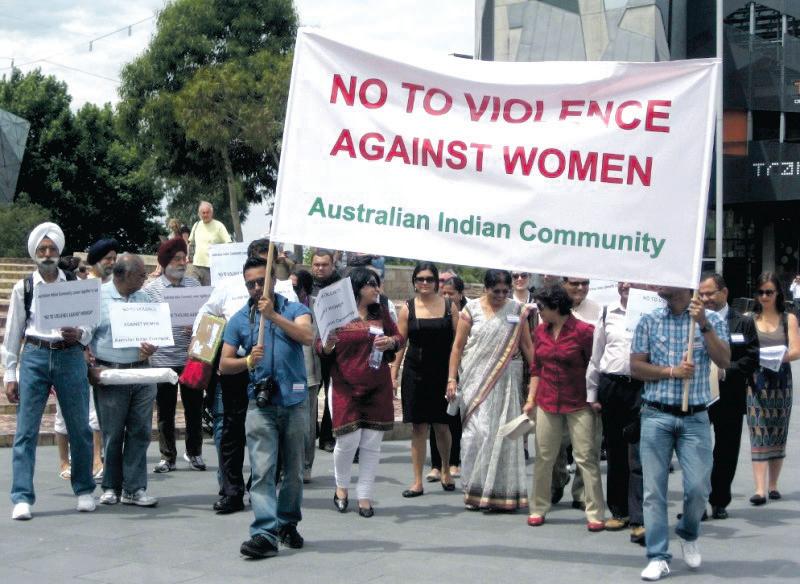
While a small group of people
set the march in motion at the peak lunch hour in the CBD, numbers swelled as people noticed this noble gesture, and some joined in the march to offer solidarity. The competent duo of Deepa and Reeta handled the microphone with élan, articulating the prime motive behind the march, drawing the public’s attention. It was heartening to see people showing their approval by offering the thumbs up sign and words of encouragement as the march progressed. As we reached Parliament House, there was a sense of achievement and delight in the air as a pledge was taken against violence towards women, followed by a minute’s silence and prayer.
On the reason why Parliament House was chosen as the final destination, Deepa said, “The community deserves a lot more assistance from the government to combat violence against women in the form of funding, support and counselling services. We are here on the steps of this institution to remind them that they need to step up and take action against this ongoing crisis facing society.”
Without a shadow of doubt, the peace march has succeeded in creating awareness on the issue of violence against women. However, the root cause of all violence stems from evil minds, and what needs an overhaul is the mindset of those people who blatantly indulge in aggressive behaviour.
Walk for women minister inaugurates

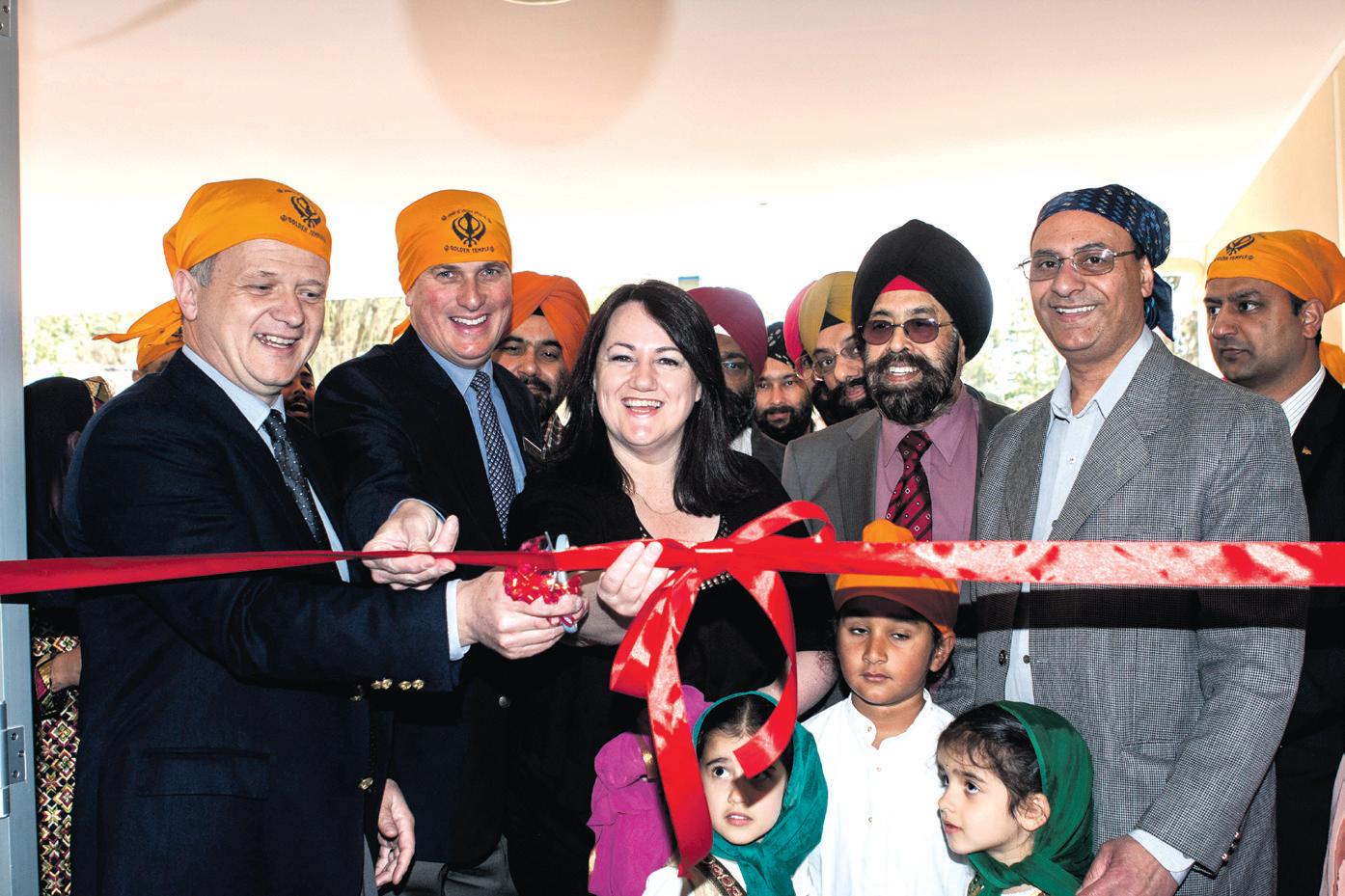
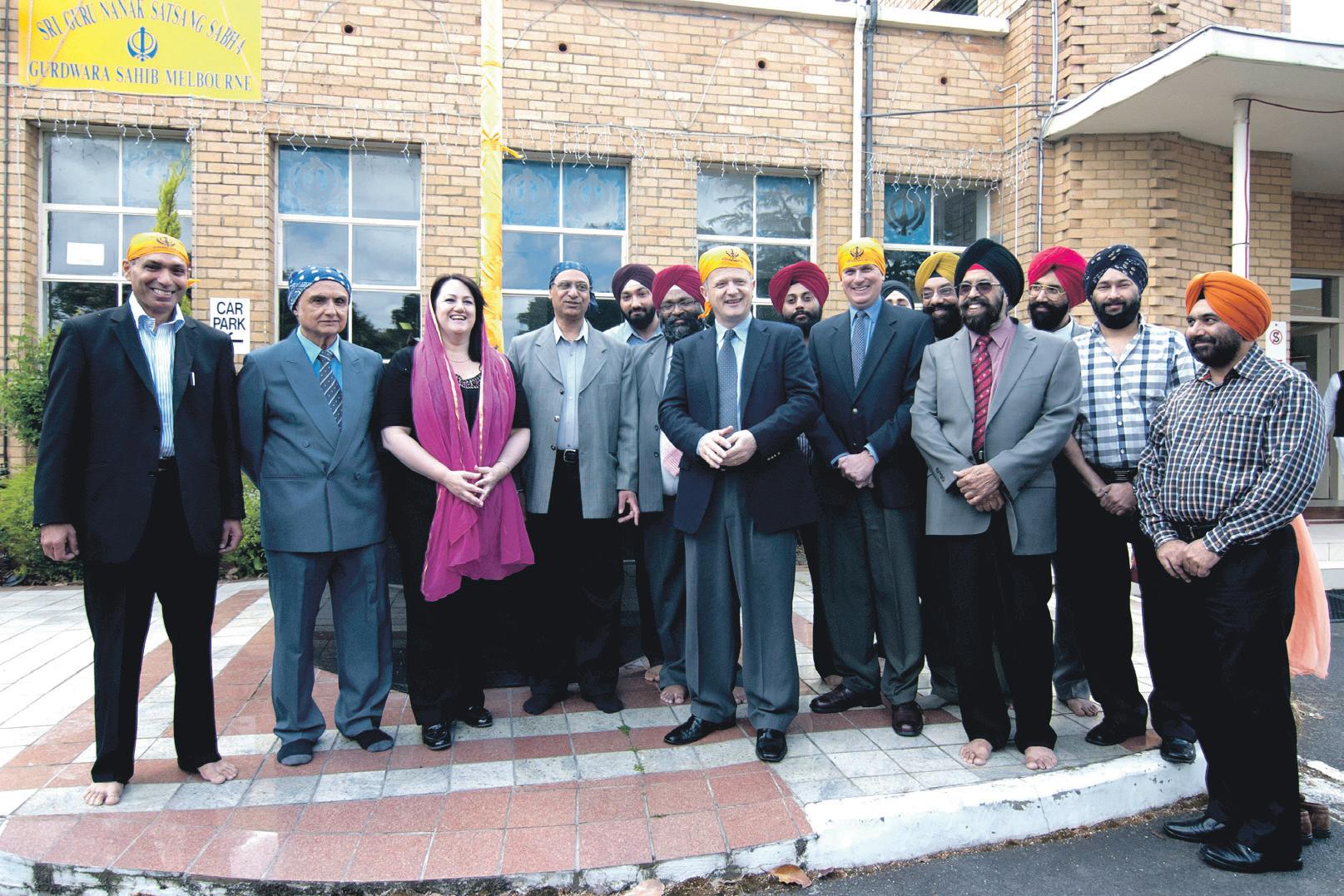
Khalsa Punjabi School building
www.indianlink.com.au COMMUNITYSCENE
Nicholas Kotsiras MP, Minister for Multicultural Affairs & Citizenship recently inaugurated the Khalsa Punjabi School Building at Sri Guru Satsang Sabha Temple in Blackburn. The Victorian Government provided $200,000 towards the school from the South Asian Building Fund.




NOVEMBER 2012 17 INDIAN LINK FREE CALL AUSTRALIA WIDE 1800 070 921 SYDNEY * MELBOURNE * BRISBANE * ADELAIDE * PERTH We Wish all a Very Happy and Prosperous Diwali
The truth about colon cancer
For its October 2012 meet, Indian Senior Citizens Association (ISCA) arranged a rather useful discourse for seniors of all ages, on colonoscopy, which was expertly presented through a powerpoint presentation by Dr Brindi Rasaratnam, Gastroenterologist and Hepatologist. About 130 seniors attended the event.
Without making it sound sinister, Dr Brindi began by detailing symptoms of the disease: abdominal pain, change in bowel movement practices, anaemia, blood in faeces, etc., which we ourselves need to observe. The moment we even suspect the presence of any of these symptoms, Brindi recommended, kiScA
we must report to our GP so that proper treatment is adopted without delay.
“Since these rather uncomplicated procedures are conducted when one is unconscious, the patient undergoes no discomfort at all,” assured Brindi, showing slides of fiber-optic cameras that are used to detect the disease and record probable inconsistencies on computers. The slides showed images of polyps of various sizes and shapes in the large bowel which, if not discovered and attended to promptly, may result in cancer of the colon. The slides also showed how polyps are incised with the help of a steel wire-ring, and removed to be sent for analysis. If the biopsy returns positive,
immediate remedial steps to fight the diagnosed ailment are put into operation.
“The chances of surviving colon cancer are fair, unless it has reached its fourth stage. Therefore, early detection is the name of the game,” said Brindi.
Although colon cancer is a relatively unheard of disease in India and Sri Lanka, it is becoming fairly common now, especially in the Punjabi population. The cheapest procedure to detect the symptoms is early FOBT (Faecal Occult Blood Test). In this test, faeces are tested three days in a row to detect the probable presence of blood.
Questions were taken: no, this is not strictly a disease for
Dr Brindi Rasaratnam
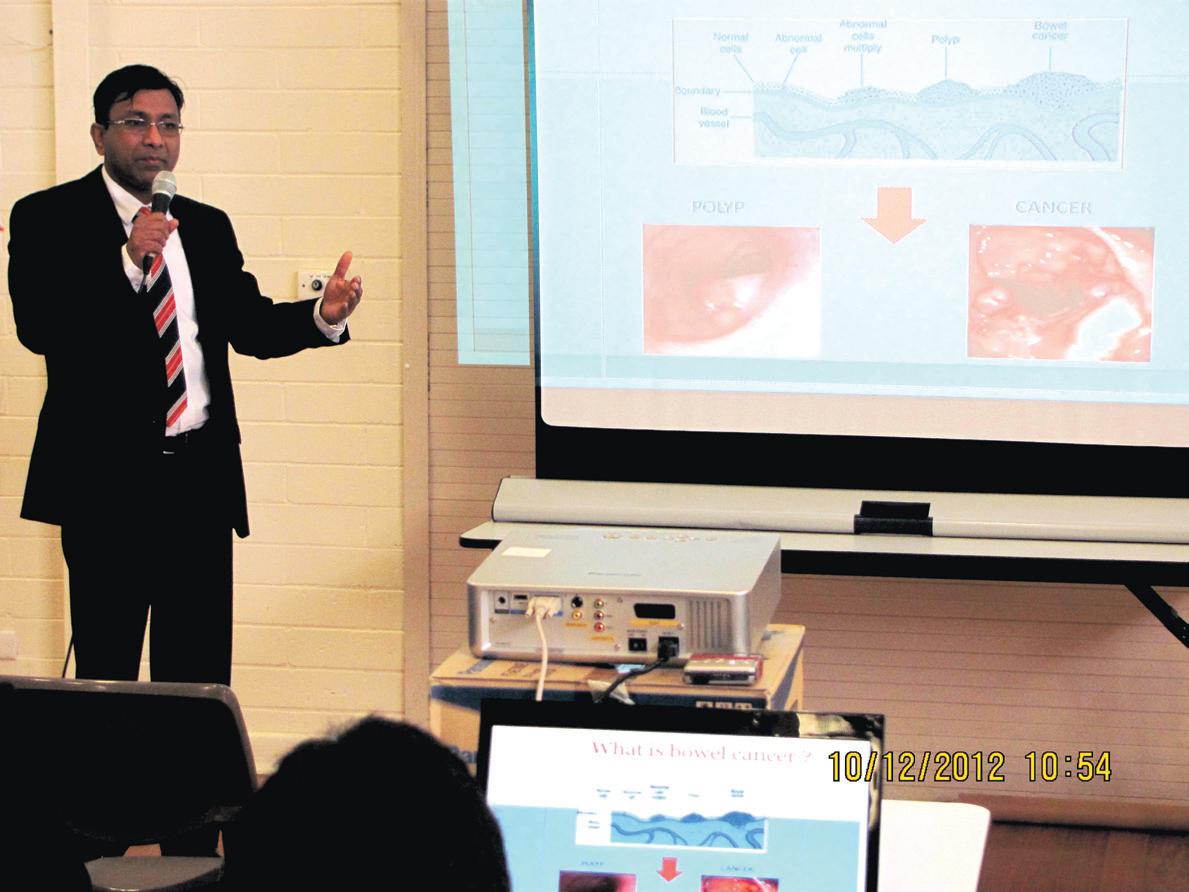
men; research has yet to prove if a vegetarian diet can prevent colon cancer; yes, all those over 50 must have the test done. If polyps are discovered, your doctor will chart out a programme under which future tests will be repeated periodically.
The disease is termed ‘Colon Cancer’, explained Brindi, because it occurs only in the colon, that is, the large intestine.
A rather apt topic that was
handled expertly and delivered in just the right number of words.
ISCA meets next on November 10 to celebrate Deepawali, with dances, sing-song sessions and indulgence in sweets to highlights the day. ISCA meets on the second Saturday of the month. For further information, please contact President Prem Phakey on 9560 9607.
george Thakur
Yet another award for Krishna Arora
mrs Krishna Arora is a rather well known entity of the Melbourne Indian community. It is said about her, she cane be found any and everywhere she feels that the community may need her advice or services. Krishna has been in the media spotlight when demonstrating Indian cookery to multicultural Melbourne. The books she has written on the intricacies of Indian cuisine are in wide demand. The longest serving president of the Indian Senior Citizens Association
Outand about
Sunday, 21st October, 2012, Kingston Indian Seniors Citizens members visited a park in Mornington Peninsula to enjoy a day out on a picnic. The bus departed from the Marcus Road Meeting Hall in Dingley Village right at 10.30 am, no delays this time. It was pleasing to see that despite some last minute cancellations, keen and supportive members made up the numbers that filled the bus. The weather so typically Melbourne, our adequately rugged-up members selected a spot in the park to settle down, walked around the Pacific Ocean-facing park, identified chirping birds separately, wished others who enjoyed themselves, and then shared varying homecooked dishes each one brought along.
Member Simon Charan, our enthusiastic volunteer-driver for the day and the youngest in the KISCA flock, did wonders behind the wheel. Jai, Simon’s friend, acting as our tour guide, kept members entertained with his jovial commentary, which made the day a pleasant one. As the Mornington Park was secluded and rather chilly, we decided to drive further to Sorrento, where the day was relatively warmer, and members enjoyed strolling around Sorrento Park. On our way back, member Sandra invited us for ice cream at MacDonalds, a gesture members deeply appreciated. We returned at Marcus Road by 4:30 pm. An enjoyable day out. KISCA meets every third Sunday. For more information, please call President Mona Raju on 03 9782 8973.
(ISCA), Krishna’s name is on the prestigious Shilling Wall where only those women with proven and continued service to society are embellished. She has won various other awards for services to her community.
Krishna was among the staff that pioneered the Institute of Hotel Management in New Delhi in 1963, obtaining the envious position of the Principal of the Institute from 1982 to 1984. She moved to Australia in 1992 and immediately involved herself in doing what she does best: serving
the community.
Recently when an astonishingly mobile Krishna - now in her eighties - visited India, the International Institute of Culinary Arts (IICA) in New Delhi surprised her by inviting her to a dinner one evening. The organisation is renowned for training Indian chefs in international cuisine, with their expertise and competency examined by employers from Europe. (The cuisine to be examined this night - French, prepared by the Indian chefs -
Krishna described as ‘out of this world’).
At the event, Virendra Dutta, Director, IICA, who had been monitoring Krishna’s endeavours in Australia, and who uses Krishna’s books as text books in classrooms, invited Krishna to the stage and presented her with an award for lifelong service to the discipline. A wonderful and well-deserved surprise indeed.
The community congratulates Krishna Arora on this coveted award bequeathed to her by India.
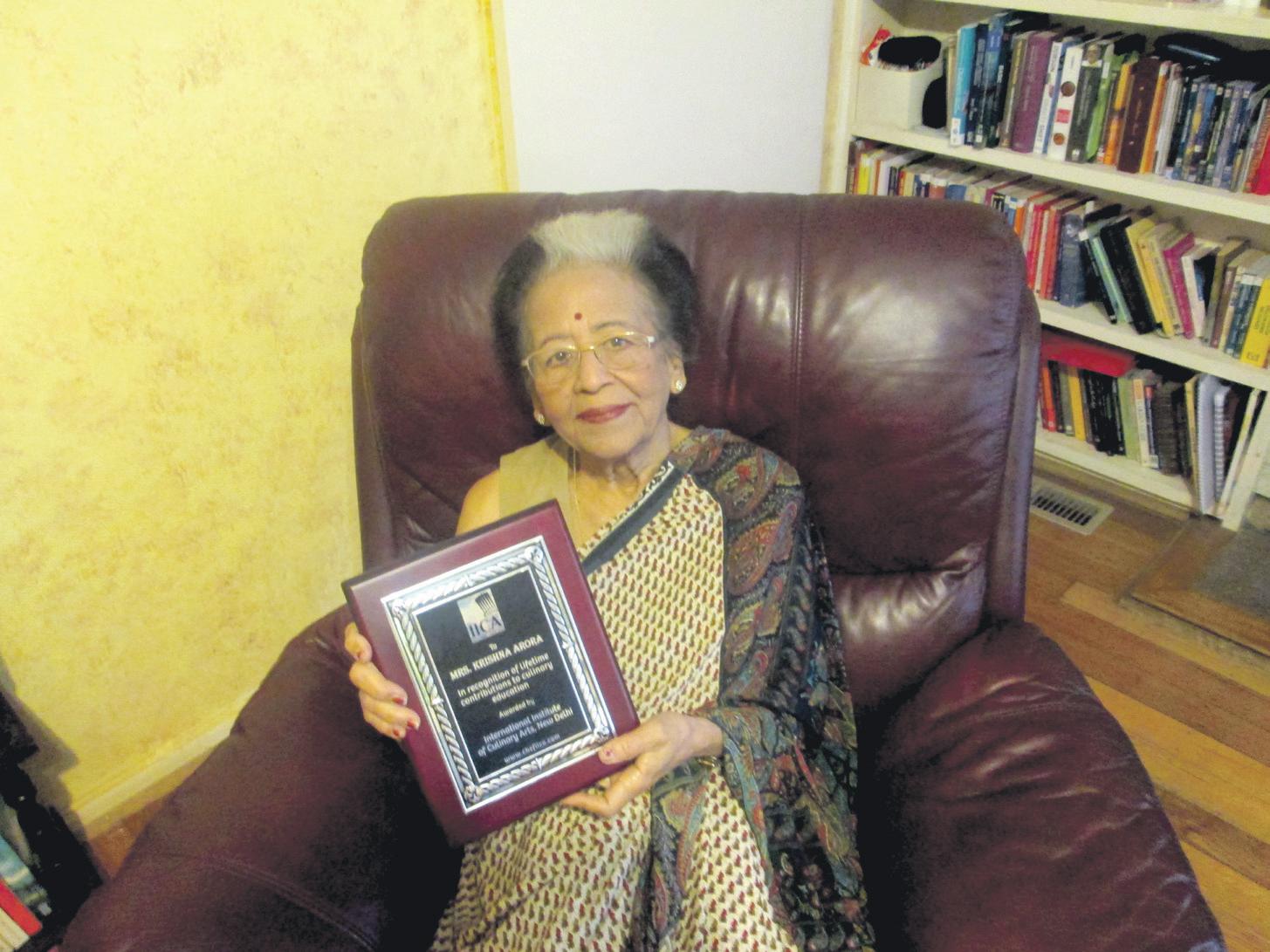
iScA
Members of Indian Seniors Association West travelled to Bendigo by the Murray river to escape the relentless Melbourne cold. They carried home-cooked
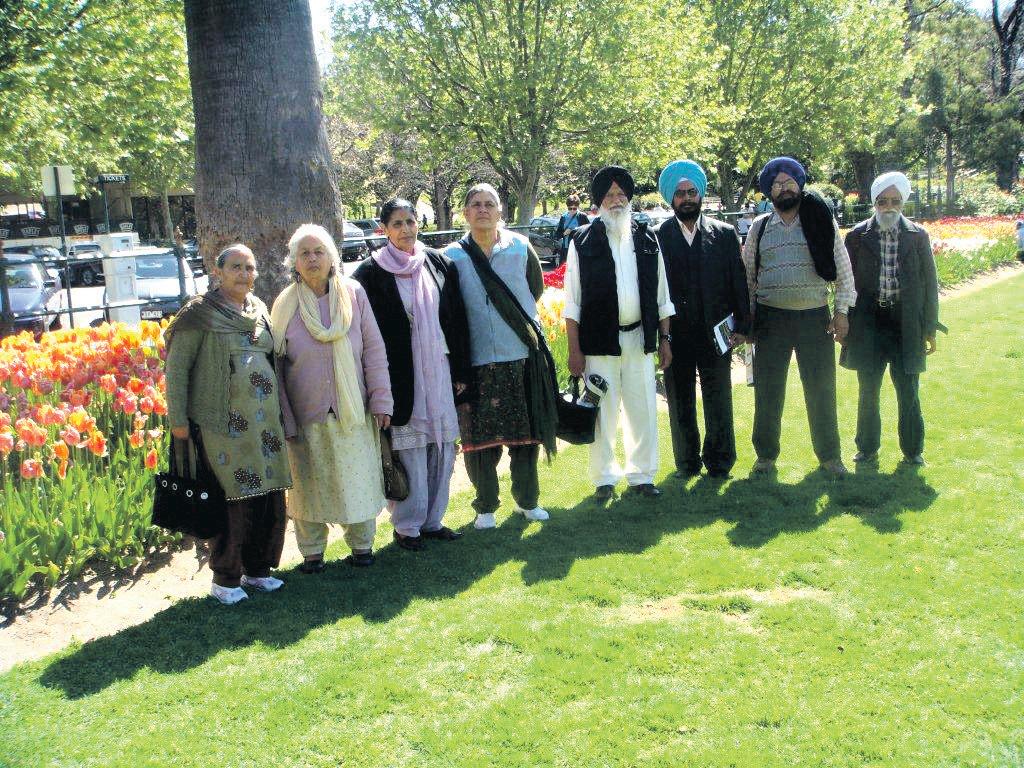
meals and drinks along with them, which they happily shared amongst themselves. They took the V-Line train that leaves the Southern Cross Railway Station at the convenient time of
8:30 am, to returning by 6 pm. For more information on ISAW activities, please contact ISAW President Arjan Dev Tulli on 03 9390 2818.
18 NOVEMBER 2012 www.indianlink.com.au
SENIORS

NOVEMBER 2012 19 INDIAN LINK
Celestial fashion show Aumsai Dussehra
Tradition, dance, and drama
With a build up similar to Christmas, businesses and individuals have started gearing up for the Indian festival season in Melbourne. With each year the scale of celebration seems to increase in direct proportion to the influx of new migrants. The Indian festival calendar has never looked as busy as this year with every organisation worth its salt, celebrating the festivals of Navratri, Dussehra and Diwali in Melbourne.
Prominent among them was the Dussehra 2012 and Shirdi Sai Punyathithi celebrations by Aumsai (Australian Mission of Sai) held at Kingston Town Hall in Moorabin. The event attracted a large audience of dignitaries, devotees and community members. It was the first major event organized by Aumsai Sansthan since their inception in September 2010. In a short period of time the organisation has gathered tremendous support from Sai devotees in their mission to build a traditional Shirdi Sai temple in Melbourne.
The Dussehra 2012 and Shirdi
at
Aumsai Dussehra
Sai Punyatithi event was held in association with Planet Insurance and Financial Planning and supported by the Department of Premier and Cabinet, Office of Multicultural Affairs and Citizenship. A long list of sponsors also supported the event. Spirits ‘n’ Spices was the official caterer for the event. The Ajax Band provided a lively orchestra performance throughout the evening.
Melbourne’s best talent was on display with excellent performances in Kuchipudi, Bharatanatyam and Kathak styles of classical Indian dances. A children’s fashion show choreographed by Smt Girija Kolanukonda proved very popular, so did the medley of Bollywood performances by Natya Bollywood Team.
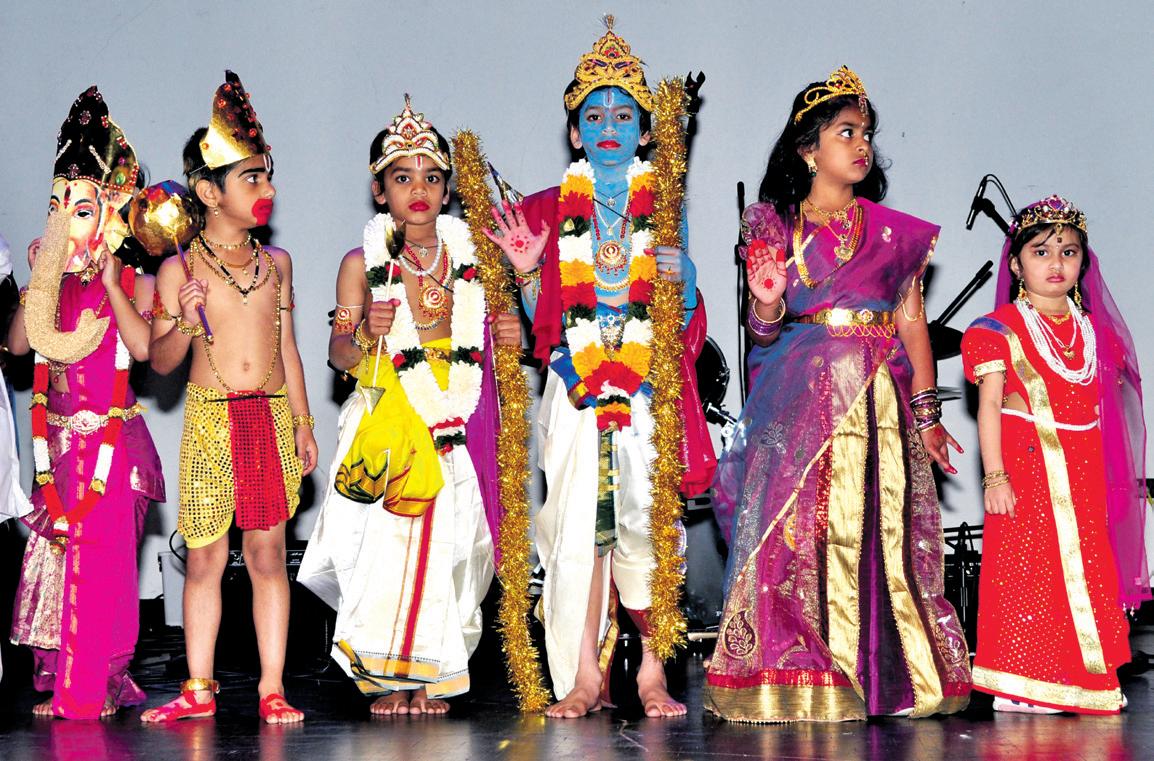
The guests got into the spirit of the festivities and shook a leg or two much to the delight of those present. Chief among the impressive list of dignitaries who graced the occasion were Mr Ted Baillieu MLA, Premier of Victoria; Dr Subhakanta Behera, Consul General of India; Ms Elizabeth Miller, MP Bentleigh; Mr Grahame Leonard AM, VMC South Metro
Region Commissioner; Ms. Inga Peulich MLC Member for South Metro region, Parliamentary Secretary for Education; Mayor Mr. John Ronke, Kingston Council; and Mayor Mr. Jamie Hyams, Glen Eira Council. The Premier was offered a traditional welcome complete with the recitation of mantras, music from the nadaswaram instrument and vermillion on his forehead. He offered his best wishes to all and appreciated the efforts of Aumsai committee members, trustees and volunteers in organizing this wonderful event. The evening continued to offer entertainment in the form of solo songs, mimicry and Telugu Tiyyandanaalu a tribute to those who enriched the Telugu language and music. Community Service Awards were presented to Mr Arun Sharma and Mrs Jaya Sharma of Celebrate India, Mr Saseendra Chowdary Amarneni of Aumsai, Mr Yogen Lakshman and Mr Babu Akula of AIII for their invaluable and continuous support to community for more than a decade.
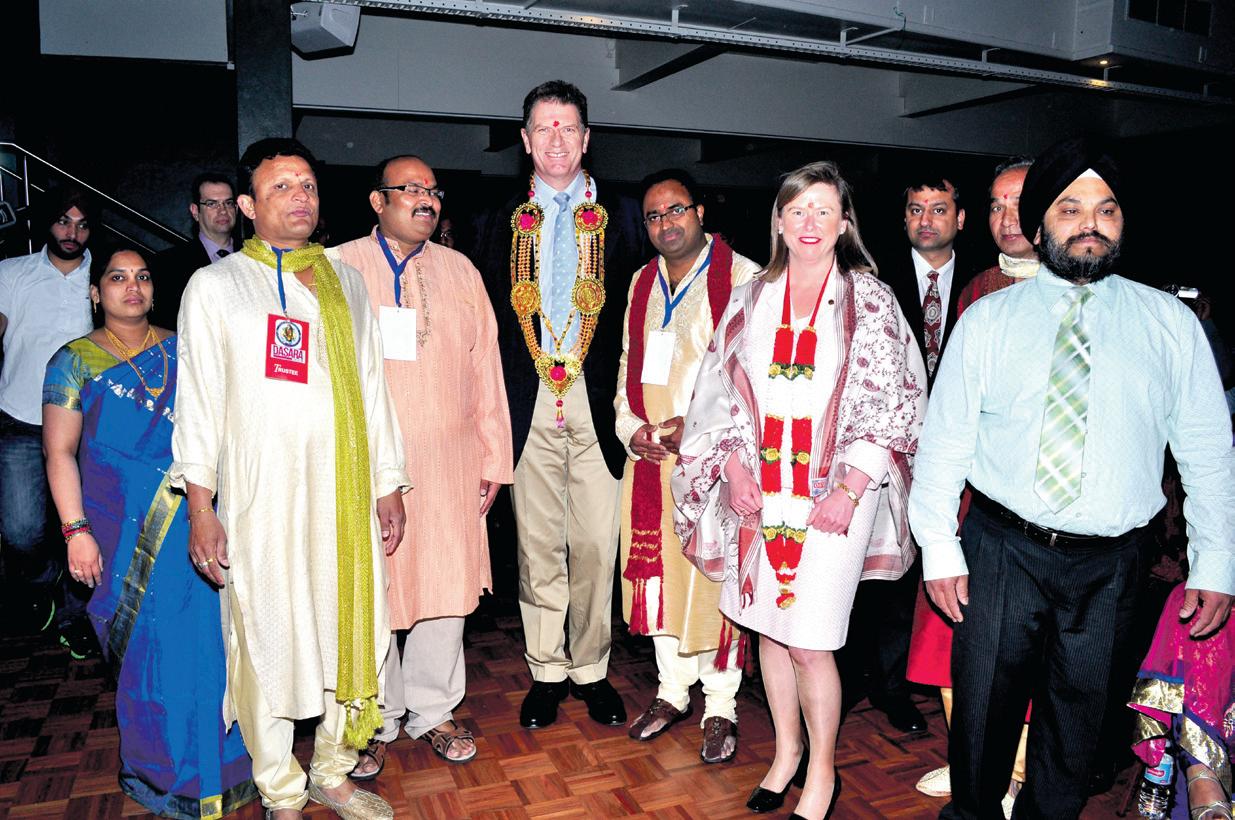
Thanking the participants and sponsors, Mr Rampal Reddy
Muthyala, Member of South Metropolitan Regional Advisory Council, Victoria, Trustee Member of Aumsai and proprietor of Aarya Supermarket said, “The success of this event has definitely boosted the morale of all our members and we shall continue to organise programmes to support
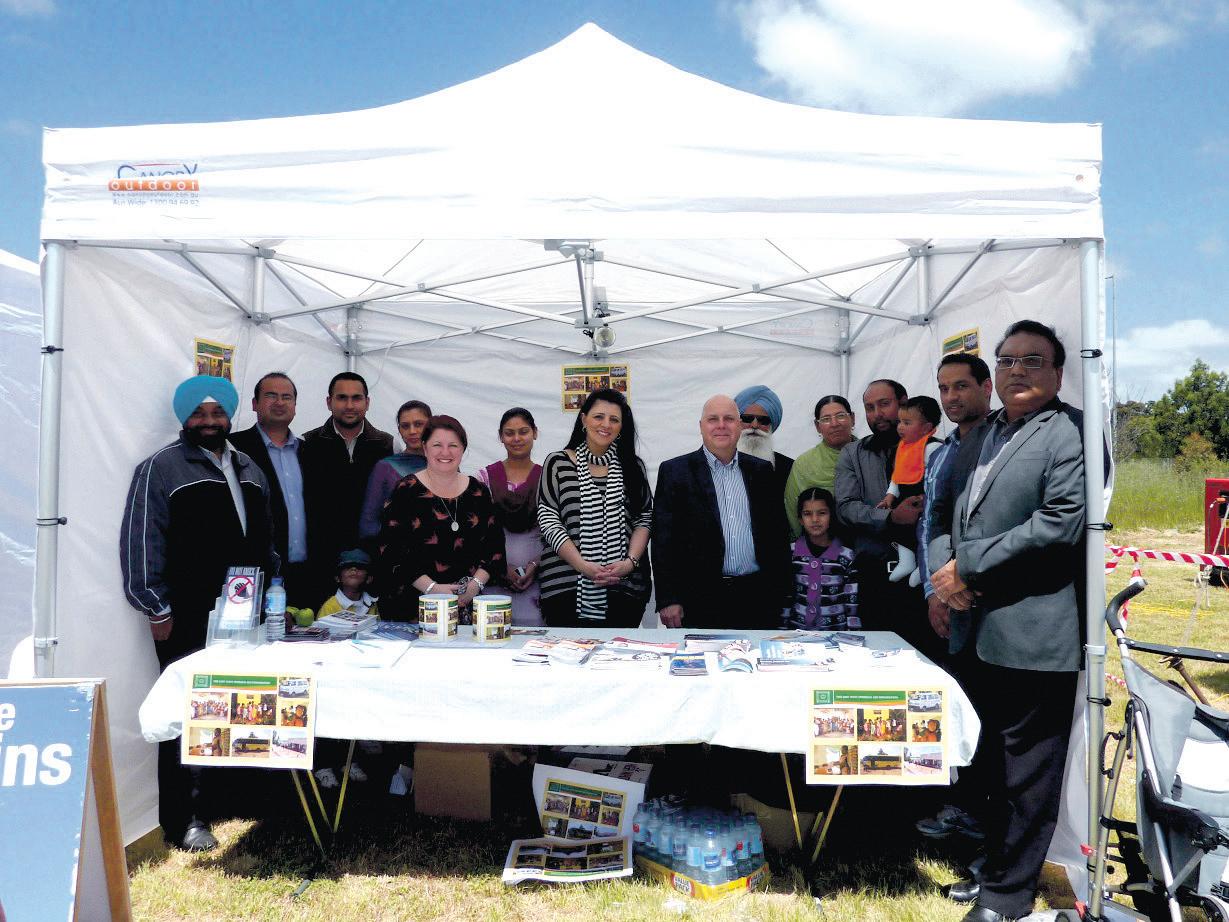
and strengthen our community, and shall build a harmonious society with the support of people. We shall continue to perform our best to ensure that our community leads the way in promoting unity, understanding and harmony among Melbourne’s diverse cultures.”
Local mPs Ghazal concert marks 10th anniversary
ghazal concert performed by renowned musicians Mr Chandan Dass and Dr Roshan Bharti marked the tenth anniversary of South Asia newspaper in Melbourne. The event was held at the Thornbury Theatre in High Street Thornbury recently, and was attended by guests and well-wishers of the editor, Mr Neeraj Nanda. The guests comprised of representatives from diverse multicultural communities, Indian media, SAT advertisers
and community leaders. The ghazal concert also paid homage to the artform’s most popular names, the late Mehdi Hasan and Jagjit Singh.
Natalie Hutchins, Member for Keilor, Marlene Kairouz, Member for Kororoit and Tim Pallas, Member for Tarneit attended the Dussehra festival at the Rockbank Temple recently, one of the largest festival events in the Indian calendar. “It was excellent to see the success of such a vibrant cultural event,” said Ms Hutchins.
“The Dussehra Festival was a great chance to learn more about Indian culture and meet the local Indian community,” said Mr Pallas.
The Members participated in fundraising for the East-West Overseas Aid Foundation (EWOAF), organised by Jasvinder Sidhu of the Australia India Society of Victoria (AISV). The foundation focuses on development programmes that cover health care, relief for children at risk, education, community development and environmental sustainability. Rockbank Temple President, Kulwant Joshi thanked MPs and fundraisers for their participation.
The event was attended by several dignitaries including Mr Shubhakanta Behera, Consul General of India in Melbourne; Mr Rakesh Kawra, Vice Consul of India in Melbourne; Mr Craig Ondarchie, MP (representing the Premier of Victoria Hon. Ted Baillieu); Hon. Daniel Andrews, Leader of Opposition in Victoria; Mr Jude Perera, MP; Mr Luke Donnellan, MP; Ms Maria Vamvakinou, MP (Federal); Mr Michalls Michael, MP; Mr Bruce Atkintson, MP; Ms Laura Smith, MP (Federal); Mr Brian Tee, MLC; and Mr L Dambroslo, MP. The common thread between the all their speeches was the celebration of multiculturalism in Australia.
In his address to the audience Mr Nanda South Asia , his experiences and the challenges ahead. Mr Nanda has over 30 years of experience in journalism and during his career he has worked in both India and Australia with print, radio and TV media. He is currently the President of South Asian Journalists Association of Australia and executive member of the Australian Indian Innovations Inc (AIII). We wish him
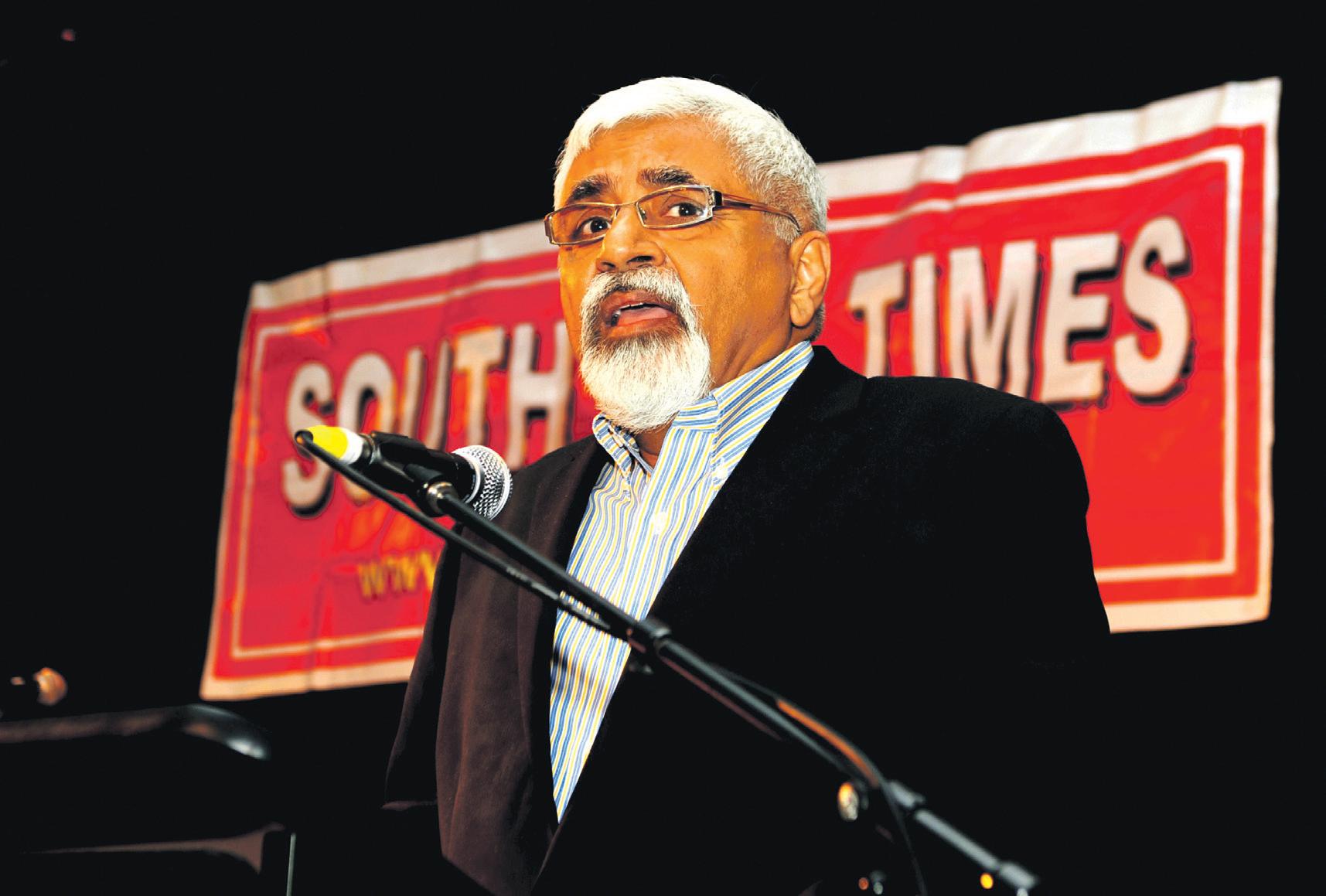
20 NOVEMBER 2012 www.indianlink.com.au COMMUNITYSCENE


NOVEMBER 2012 21 INDIAN LINK
A dancer with promise
Young Shakkthi shows an accomplishment much advanced for her age
By SHALINIKA PERERA
Through the lobby of Monash University’s Robert Blackwood Hall on October 20, an intermittent play of colour lingered as guests took their places in the auditorium, quite literally adorned in tradition. Eagerly awaiting their arrival was 10-year-old Shakkthi Kannan, a young Bharatnatyam artiste ready to take centrestage and make her official public debut.
Shakkthi’s arangetram has been highly anticipated. Her Guru, Srimathi Narmatha Ravichandhira, as the artistic director of the Bharatha Choodamani School of Indian Dance, has nurtured Shakkthi’s inquisitive disposition and yearning to pursue a love for the classical dance form. With the encouragement of her parents, Shakkthi commenced formal training at the age of just 3½. A multitude of performances and acclaim followed through the subsequent years, a testament to the youngster’s rapidly increasing awareness and physical
dexterity. The two combined as Shakkthi’s arangetram heralded a performance that transcended her age. Paying homage to the Lord of Dance, Shakkthi graced the stage with Bharathanjali. Her extensive repertoire began under the auspices of Vinayagar Sthuthi , a reverent item honouring Lord Ganesha, casting benevolence on the night’s performance. Thri Shakthi Varnam was a formidable piece central to the arangetram, tailored magnificently to Shakkthi’s aptitude in expressive mime and elaborate footwork. Later in the evening, her innate sense of rhythmic motion gave way to the conceptualisation and portrayal of animals. A splendidly crafted retractable fan of peacock feathers adorned Shakkthi’s diminutive frame in Murugan Keerthanam, as she manoeuvred the stage with lilting movements. Later, her flexile frame formed the foundation of the serpentine dance, Aadinaye Kanna, where a complex series of sweeping acrobatics and staccato-like poses emphasised the palpable versatility of the young dancer.
Lord Siva’s Nadanam in praise of Lord Siva was a vehicle piece for Shakkthi’s linear propensity in
adavu execution. This was further exemplified by an elaborate Thillana centred in pure dance devoid of the natya element, whilst the final item Thirupugal saw abhinaya and footwork coalesce to the rhythmic syllables of a song in devotion to Muruga.
Chief guest for the night was Sangeet Natak Academi Awardee Kalai Mamani Srimathi Indra Rajan, a revered member of the Bharatnatyam family and a highly skilled Nattuvanar.
Srimathi Sujatha Menon, a disciple of Padmabhushan Dr. Padma Subramanyam, was also in attendance, expressing her undivided acclaim for Shakkthi in her address to the audience.
The dulcet tones of the orchestra were of exceptional standard, formed by eminent members of the Carnatic circle including Mridangist and fellow mentor to Shakkthi, Sri Ravi M. Ravichandhira OAM, Vocalist Sri Hariprasad Kaniyal, Violinist Sri AGA Gnanasundaram, Flutist Sri Ramani Thiagarajan, Morsingist Hari Raveendran and backing Mridagam and Kanchira players Sai-Nivaeithan Ravichandhira and Sai-Sarangan Ravichandhira. Shakkthi’s astute demeanour and prodigious awareness of
Flawless debut
Grace, precision and impeccable dancing were the highlights of Vaashini’s debut
Vaashini Murugadasan’s arangetram was held at the George Wood Performing Arts Centre on September 29. She is a student of Nritakshetra, and Smt Shanthy Rajendran’s 57th arangetram graduate.
Vaashini made a striking entrance with the Mallari – a traditional processional temple dance set to lilting music, choreographed aptly by Smt Shanthy Rajendran to evoke a temple atmosphere. This was followed by a dance to Lord Ganesha composed by Oothakadu in gambira naattai: Sri Vignarajam bhaje. Vaashini’s dance captured the gait and movements of Lord Ganapathy and vocalist Ahilan set the right mood with his rendition of the joyous music and libretto. Two Subramanya
Bharatiyar compositions were performed that evening: one Shakthi Koothu in sivasakthi ragam, and the other asaimugam marandu poche
A keertanam, Vadavarayai maththaakki, a verse from the ancient SangamTamil literary work Silappadikaram by Ilango Adigal, set to ragamalika and made popular by the late M S Subbulakshmi, on the avatars of Vishnu, was a refreshing new item choreographed by Smt Rajendran. The sancharis included portrayal of Matsya and Vamana avatars, episodes from Lord Krishna’s early life, Gitopadesam and the like.
For the pivotal piece, the varnam, Vaashini chose the very popular ‘Swami naan undan adimai’ in nattakurinji ragam. This ode to Lord Shiva gave her ample scope
to demonstrate the difficult adavus she has mastered, her stamina, and her natya. She danced effortlessly through this long and complex varnam alternating between storytelling and teermanams in an epic 50 minutes. Vaashini concluded with a tillana in revati, a Lagudi Jayaraman composition, performing it with grace and precision, the hallmark of the evening’s recital. It was a flawless arangetram and Vaashini acquitted herself extremely well.
Smt Shanthy Rajendran (nattuvangam), Sivanandan Ahilan (vocal), Ravichandhira on mrudangam , Suresh Babu on the violin and Thiagarajan Ramani on the flute made up the excellent orchestra and contributed to a wonderful and enjoyable evening of dance and music.
Chitra Sudarshan

the intricacies of Bharatnatyam were to her credit as was her relentless pursuit to continually exceed the expectations of those who witnessed her dancing. As humble as she is talented, Shakkthi’s thirst for knowledge continues as she eagerly anticipates

the future. A palpable certainty is that amidst an expansive stage, the tinkering of bells on those little feet are just the beginning for a child whose name quite literally means power – and for Shakkthi Kannan, it is without doubt, her power to dance.
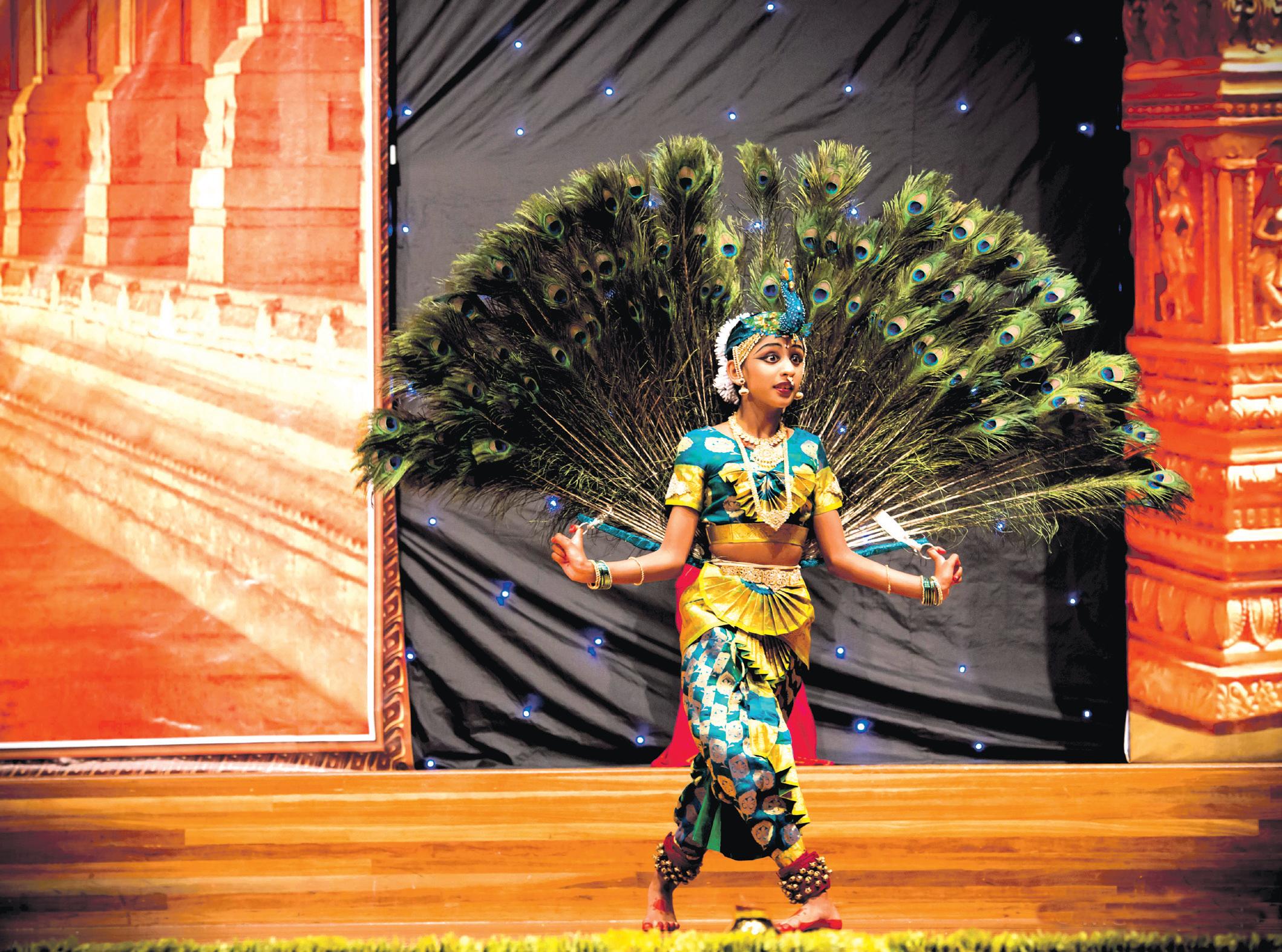
22 NOVEMBER 2012 STAGE


NOVEMBER 2012 23 INDIAN LINK


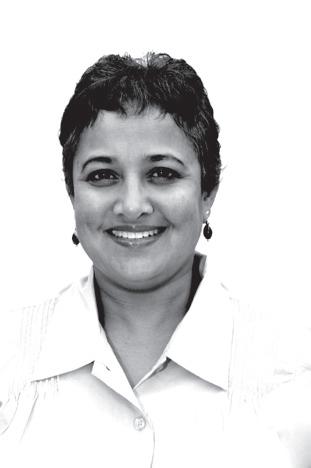




24 NOVEMBER 2012 www.indianlink.com.au • Reliable Service and Privacy Guaranteed • Over 25 lenders to choose from • Commercial finance Health check for existing Home Loan “I used to think that all mortgage brokers are the same.... until I met Swati” – Komal Over 18 years of experience in finance industry. Talk to a qualified professional. Dandenong and Springvale Call Swati Palsule on 0411 78 28 18 Authorised Credit Representative 400349 of BLSAA Pty. Ltd. (Australian Credit Licence No.391237) Talk to a specialist for all your Home Loan needs There is no subs T i T u T e for experience. swati@buyerschoice.com.au PART y S u PPLIES W E dd IN g S u PPLIES diwali balloons Telephone: (03) 97828491 www.temptationcorner.com.au Factory 2/700 Frankston-dandenong Rd Carrum downs, Vic 3201 For personalised service call Rafia or anwaR on 03 9436 4922 Mobile: 0414 786 889 fax : 0394 364 933 2 Golden Gr, Mill Park, ViC 3082 its a one stoP shoP Please call us if you are looking for VeRY CoMPetitiVe aiRfaRes • tRaVeL insURanCe • tRaVeLLeRs CheQUes / Cash PassPoRt • MoneY tRansfeR / BUs tiCKets • inteRnationaL / DoMestiC toUR PaCKaGes TRAVEL



NOVEMBER 2012 25 INDIAN LINK
A new vision for India
Kiran Bedi’s drive against corruption is applauded by Melbournians, reports PREETI JABBAL

As I strived to unscramble the torrent of words unleashed by social activist Kiran Bedi recently, this quote from her seemed at odds with the unconventional and often tough path that she has treaded since becoming the first Indian woman to join the Indian Police Service in 1972. Even after she retired from service in 2007, Ms Bedi continued to live a celebrated, yet controversial existence. Alongside her community work she has become an author, radio anchor, TV show guest and a columnist with leading media outlets in India. She is sought after for her inspirational speeches especially on the topic of highlevel corruption amongst Indian politicians.
Ms Bedi dwelt further on the topic: India’s Political System, the Way Forward in a special address held recently at the Carillo Gartner Theatre in Parkville. Her presentation was part of a three day conference organised by the Australia India Institute (AII) in Melbourne entitled, The Argumentative Indian: Critical Debates in the World’s Largest Democracy & Perspectives from Australia The conference received input from a variety of perspectives – economic, social, political and cultural. According to Prof Amitabh Mattoo, Director of AII, the conference was organised with the expectation of facilitating fearless independent thinkers to debate the ideas that will shape tomorrow’s India in this IndoPacific century.
During her impassioned speech Kiran Bedi outlined the current state of affairs in Indian politics where according to her, democracy is funded by corruption. She alleged that there is a lack of mechanism in selecting a political candidate, and there is no leadership training or grooming necessary to become a politician in India. Often it is an emotional selection based on dynasties, branding, caste, faith and inheritance. It could also be due to lack of a credible choice. “In India many people become politicians by default; not by design nor by suitability,” Ms Bedi said.
“Investing in politics is the best investment in India,” she added, providing newspaper clippings as evidence. MLA’s are known
to be 42 times richer during their five-year tenure, according to a researched article. This is because no questions are asked, no explanations are provided and politicians get away with everything. A 2011 poll suggests that every third politician in India is a crorepati (millionaire). “From the amount of money we lose to corruption, if we get even some of it back then India will become the richest country in the world,” said Ms Bedi to tremendous applause from the packed audience.
The way forward, according to Ms Bedi, is to demand an independent ombudsman who can hold politicians to account.
“We as a country have forgotten to do our homework in the past 64 years since our Independence, but we have woken up thanks to movements like Anna Hazare’s,” she concurred. “We need to exercise our right to reject. We as voters should demand honesty from our politicians or refuse to vote for them. We need to have civil and public debates and
take up causes in public forums, we need to redefine power in India and power must mean authentic service. We need to develop a collective conscience. Politics should not be about self advancement,” she added with vehemence.
A brief Q&A session followed, chaired by Brian Hayes QC, and in conclusion he praised Ms Bedi for her passionate, powerful and provocative address.
Kiran Bedi’s passion also extends to Navjyoti India Foundation, an organisation that focuses on empowerment of women, skill development and environment, and encouraging good governance in society. In another event held earlier, Ms Bedi urged the audience to donate time, effort and ideas to help raise funds for Navjyoti Business School for the Marginalized. The school is conceptualised to address the large skill gap in India by developing work skills in under-served sections of society to make them self-reliant. Each participant will be trained on
particular skills like hospitality, accounting, stitching and tailoring, teachers training etc., for 240 hours at the Navjoti Business school.
During her visit to Melbourne Kiran Bedi also launched her new book Dare To Do and the first annual Indian Executive Souvenir Top 50 Who’s Who: Melbourne’s Indian Community 2012 at the Princess Court Reception in Mulgrave. She congratulated all those who appeared in the souvenir and advised them to ensure that they keep the remote of life in their own hands. “In order to be successful you need to be self driven. In order to deal with challenges and do better you need to have a ‘hunger’ for work. That is how I have lived my life, even after retirement I still hunger for knowledge, spirituality and fulfilment,” said Ms Bedi. She intends to return every year in order to develop and maintain partnerships with Australia, and to bridge the gap between those who have and those who don’t by seeking support for Navjyoti.
In India many people become politicians by default; not by design nor by suitability
We need to have civil and public debates and take up causes in public forums, we need to redefine power in India and power must mean authentic service
26 NOVEMBER 2012 www.indianlink.com.au
communi TyS c E n E
Life is as complex as you make it, and as simple as you do it.”

NOVEMBER 2012 27 INDIAN LINK


NOVEMBER 2012 29 INDIAN LINK

30 NOVEMBER 2012 www.indianlink.com.au
India $950* Colombo $1050* uSA $1250*
dhaka $1050* Pakistan $1050* Kathmandu $890*
(*incl. taxes, 30kg luggage)
CHEAPEST AIRFARES TO INDIA, PAKISTAN, SRI LANKA, BANGLADESH, NEPAL, AFGHANISTAN.
Abdullah: 0430 553246

Ph: (03) 9793 0095
Mob: 0412 302 306
Fax: (03) 9793 0092
Send Money To India, Pakistan, Srilanka, Bangladesh, Afghanistan. Guaranteed

abdullah@bookandfly.com.au
ADD: 20 Clow Street, Dandenong. VIC 3175

NOVEMBER 2012 31 INDIAN LINK
Best
Rates* *Conditions Apply
PM deals new ministerial
pack, 17 new faces on board, major portfolios reshuffled
Prime Minister Manmohan Singh sought to shake off the perception of an inert government with a major revamp of his council of ministers, inducting 17 new faces and elevating five to cabinet rank, in what is possibly the last rejig before the 2014 elections. The new portfolios were announced on October 28.
Congress general secretary Rahul Gandhi did not join the government - leaving the field open for him to play a larger role in the party.
Several key portfolios changed hands, some new faces were introduced, some elevated to cabinet rank and at least one old face - Shashi Tharoor - was back in an exercise that jettisoned tainted ministers like Subodh Kant Sahay and roped veterans like Ambika Soni and SM Krishna back into the party organisation to gear up for the 2014 electoral battle.

“It is a combination of youth and experience,” Manmohan Singh said after the ceremony at the Rashtrapati Bhavan where President Pranab Mukherjee administered the oath of office.
“The road ahead is full of challenges,” he said, expressing hope that this was the last such exercise before his UPA-II government heads for elections.
Of the seven new ministers sworn in with cabinet rank, two are debutants - former
Rajya Sabha deputy chairperson K Rahman Khan and Congress MP Chandresh Kumari Katoch. The other five - Ajay Maken, MM Pallam Raju, Dinsha Patel, Harish Rawat and Ashwini Kumar - have been elevated to cabinet rank.

Fifteen ministers of state were also sworn in.
In the reshuffle of berths, Salman Khurshid, who has been battling allegations of graft, got external affairs. His previous ministry, law, went to Ashwani Kumar. Khurshid had served as junior foreign minister under PV Narasimha Rao in the 1990s.
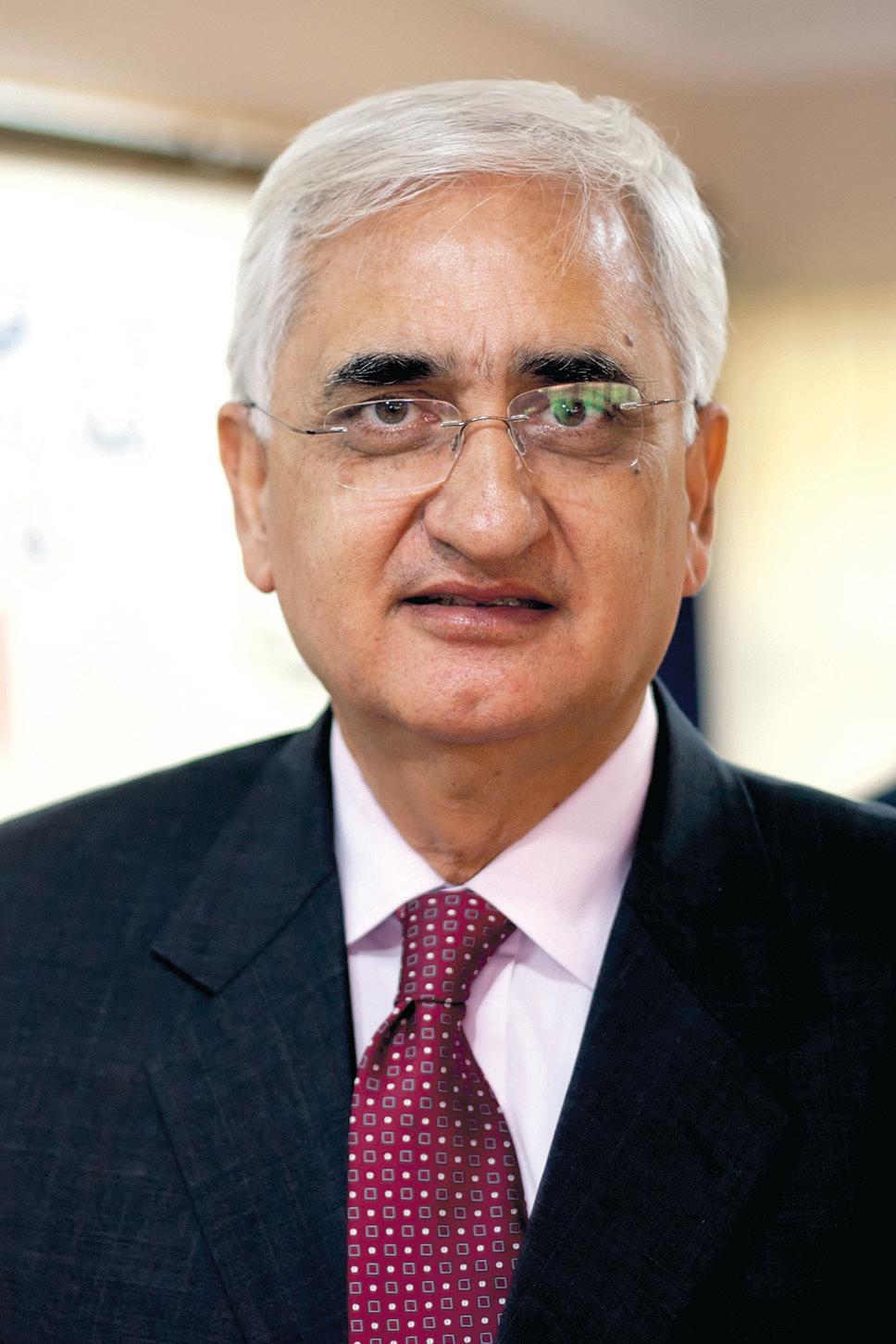
Pallam Raju was made human resource development (HRD) minister in place of Kapil Sibal, who was left only with communication and IT. Pallam Raju’s minister of state in HRD was Tharoor, who had to resign as minister of state for external affairs in 2010 over a controversy regarding his alleged conflict of interests in the affairs of the Kochi IPL cricket team.
The crucial railways ministry, which had long been with one-time ally Trinamool Congress, was given to PK Bansal.
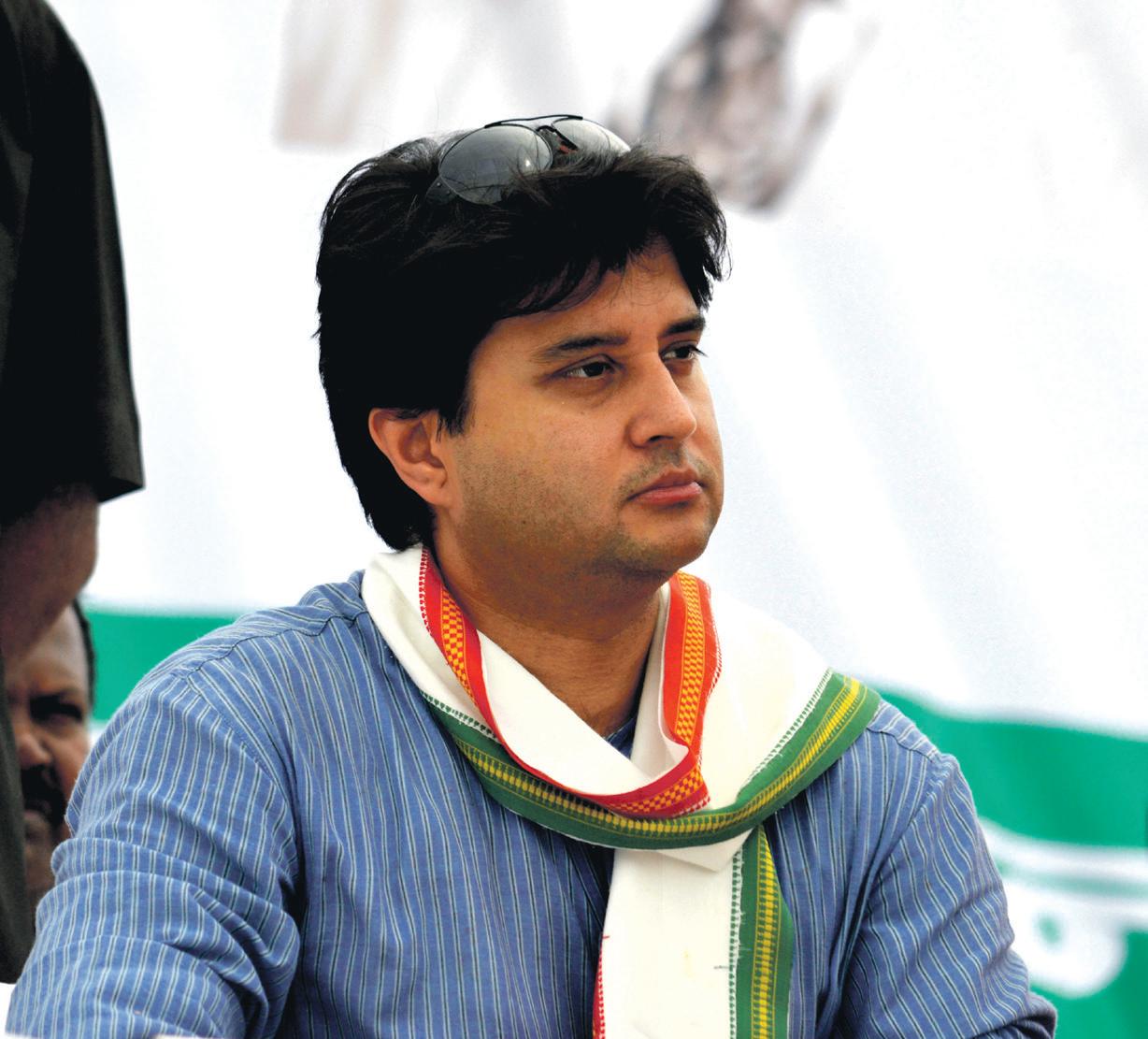
M Veerappa Moily was given petroleum, while his previous responsibilities of corporate affairs and power were splitSachin Pilot was elevated as minister of state with independent charge of corporate affairs and Jyotiraditya Scindia got independent charge of power. These two ministers are known to be close to Rahul Gandhi.
Rawat was made water resources minister and Katoch union culture minister. Maken was elevated as housing and poverty alleviation minister and Dinsha Patel as mines minister.
S. Jaipal Reddy got science and technology and Kamal Nath got additional charge of parliamentary affairs besides urban development.
Amongst the ministers of state sworn in were Congress spokesperson Manish Tewari who got independent charge of information and broadcasting. Earlier with Soni, the ministry has been downgraded.
Telugu actor Chiranjeevi, whose PRP merged with the Congress, got independent charge of the tourism ministry. Tourism is one of the country’s major foreign exchange earners.
Special attention was paid to Andhra Pradesh, where YS Jaganmohan Reddy has been gaining in influence and where Telangana issue has split ranks. It got the maximum representation of six with five new faces and one elevated to the cabinet rank.
Besides Pallam Raju, there was Chiranjeevi, Kotla Jaya Surya Prakash Reddy, Sarve Satyanarayana, Porika Balram Naik and Killi Kruparani.
There were also three new faces from West Bengal - Adhir R. Chowdhury, Deepa Dasmunsi and A.H. Khan Chowdhury, all known to be fiercely opposed to state chief minister Mamata Banerjee, whose Trinamool
Congress broke ranks with the ruling coalition recently to bring about several ministerial vacancies.
Apex industry chamber CII welcomed the reshuffle and said: “India’s young demographics is starting to get reflected in the political leadership of the country, which is only natural.”

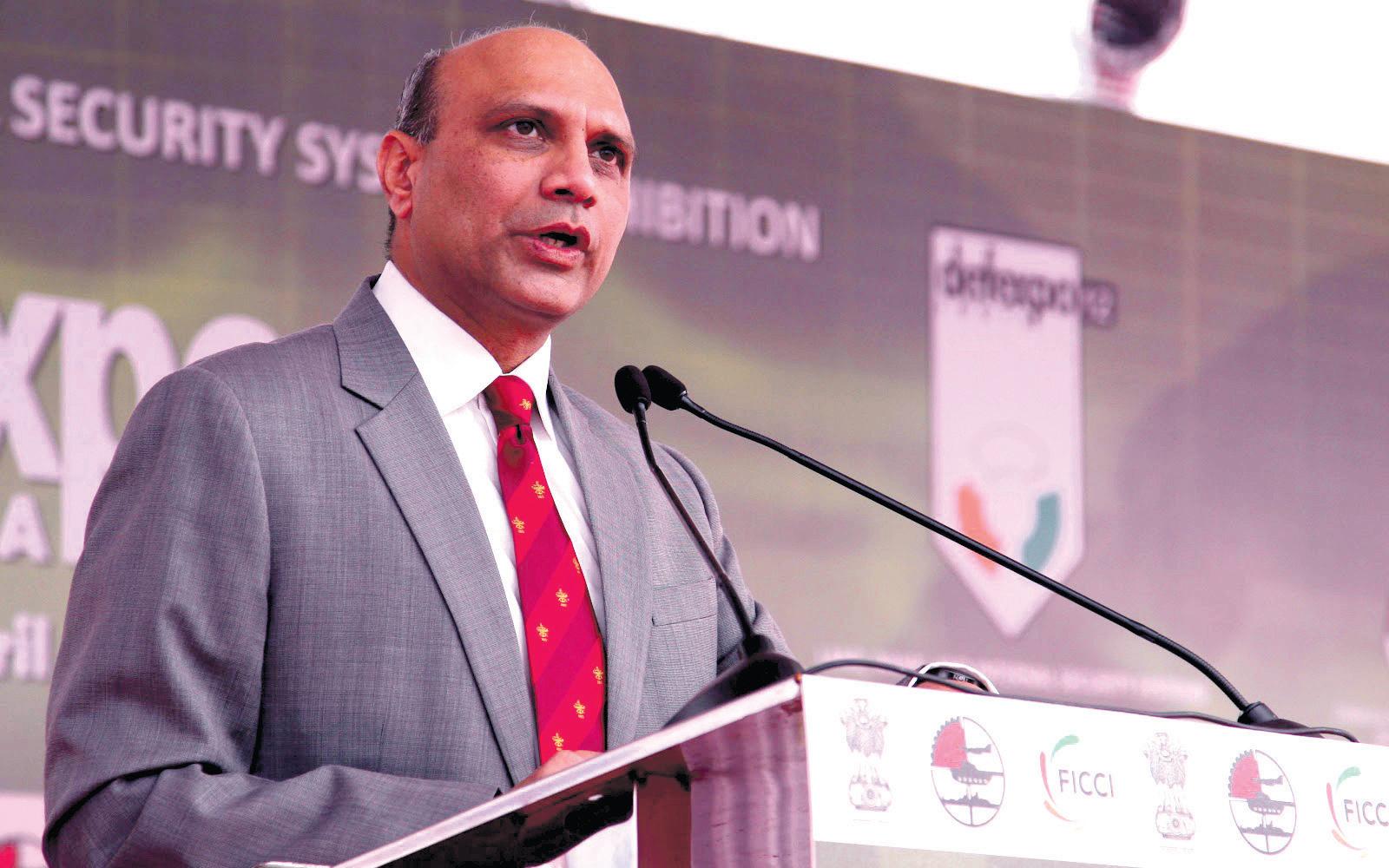
The opposition was not so impressed.
Describing the rejig as a “desperate move”, BJP spokesperson Nirmala Sitharaman said “no major decision was taken and no corrupt minister dropped”.
Activist-politician Arvind Kejriwal, who had earlier this month produced documents of alleged financial bungling by a trust run by Khurshid and his wife, was equally scathing. “Corrupt people are not just protected but also rewarded,” he tweeted.
The Samajwadi Party chief Mulayam Singh Yadav predicting an early Lok Sabha election. There was also intense speculation that S Jaipal Reddy had been eased out of the petroleum ministry due to corporate pressure. But the Congress veteran made it clear that Manmohan Singh had taken him into confidence before moving him to the science and technology ministry. “The prime minister took me into confidence about the change in my portfolio and that was enough for me,” he told the media. “I have never in my life haggled or bargained for portfolios.”
Amid mounting allegations of corruption and poor governance, the Congress is determined to put its house in order in the
32 NOVEMBER 2012 www.indianlink.com.au in D i A n n EWS
(Clockwise from top left): Sachin Pilot, Shashi Tharoor, M Pallum Raju, Jyotiraditya Scindia, Ajay Maken, Salman Khurshid.
run up to the 2014 general election. The reshuffle is widely seen as a move in that direction.
As many as 16 of the newly appointed and elevated ministers joined work on October 29, despite it being a restricted holiday on account of Balmiki Jayanti.
The cabinet ministers who assumed charge included Railway Minister Pawan Kumar Bansal, Law and Justice Minister Ashwani Kumar, Petroleum and Natural Gas Minister M. Veerappa Moily, Minority Affairs Minister K. Rahman Khan and Parliamentary Affairs Minister Kamal Nath. Khurshid assumed office within hours of being sworn-in.
Among the ministers with independent charge, Manish Tewari took charge of information and broadcasting, KH Muniyappa got micro, medium and small enterprises and Bharatsinh Solanki got drinking water and sanitation.
The ministers of state were Kotla Jaya Surya Prakash Reddy and Adhir Ranjan Chowdhury (railways) Jitin Prasada (human resource development), K.C. Venugopal (civil aviation), Kruparani Killi (communications and IT) and Ranee Narah (tribal affairs).
The Congress has taken charge of the railway portfolio after a gap of 17 yearsminus the short spell when CP Joshi of the party held charge of the ministry after the Trinamool Congress quit the government.
Commenting on his new portfolio, new Petroleum Minister Moily said he would not keep things pending. “There is $50 billion worth of foreign investment waiting.”
Tewari said his job was not to regulate the media but to ensure a level playing field for everyone.
Scindia, a young MP from Madhya Pradesh termed power as an “extremely strategic and important” sector.
“It is a daunting challenge, and I look forward to the support and guidance of ministry officials and colleagues in other departments,” the young MP from Madhya Pradesh told reporters.
India’s central bank eases money supply to push growth
The Reserve Bank of India on Oct 30 cut a key policy rate by 25 basis points to release some Rs.175 billion into the system for commercial lending with the hope that it will keep inflation under check, while also pushing growth.
The cash reserve ratio, or the money against deposits which commercial banks have to retain in the form of liquid assets such as cash, has been cut to 4.25 percent from 4.5 percent.
These changes were effected during the second quarter review of the monetary policy for this fiscal conducted by RBI Governor D. Subbarao at the central bank’s headquarters at Mint Street in downtown Mumbai.
“The reduction in the cash reserve ration is intended to pre-empt a prospective tightening of liquidity conditions, thereby keeping liquidity comfortable to support growth,” Subbarao said, explaining the rationale of the policy action.
All the other policy rates and reserve ratios were kept unchanged.
Boeing’s Chinook set to win Indian heavy-lift chopper tender
US Boeing’s Chinook CH 47F helicopter is
set to win the Indian Air Force’s helicopter tender, defeating the Russian Mi-26 in the open international tender by a decent margin.
The tender was opened recently in the presence of representatives of both the companies, and according to reliable sources, the quote by the US company was “surprisingly much lower” in both the initial and lifecycle costs.
Russia - and the erstwhile Soviet Unionhas been the biggest supplier of aircraft and defence equipment to India, but all these so far have been acquired on the basis of government-to-government agreements.
With the loss of the heavy-lift tender, Russia has lost both the competitive tenders in India in which it participated, the other being that of combat helicopters. In that, Russia withdrew its Mi-28, and Boeing’s Apache AH 64D won on both technical and financial merit. Earlier, the Russian Mig 35 lost against the French Rafale in the sixcorner combat jet competition on technical grounds for 126 combat jets for the IAF.
The IAF had issued tenders, officially called request for proposals (RfPs), after evaluating globally available machines for 22 combat and 15 heavy-lift helicopters.
The result for the combat helicopters was announced earlier, and for the heavy-lift, it should be officially announced within a few days. But the sources confirmed that the Chinook is L-1, or the lowest in acquisition and maintenance costs in the official jargon.
Notably, the IAF has been using the Mi-26 for a quarter century now, and there appeared to be a leaning towards this machine because of familiarity and the fact that it can carry more weight than the Chinook. But Russia does not make this helicopter any more, and even with refurbished machines perhaps, its projected costs are higher.
The Chinook is a much more versatile machine, and the only helicopter in the world that can also float on water for launching and recovering inflatable boats with commandoes. In terms of operational capability, while the Mi-26 can carry more weight, it is nowhere near the American machine.
In fact, in the Himalayan heights, the Mi-26 has sometimes had problems in taking off and small runways had to be built to give it some lift.
According to Lt.Gen. (retd.) B.S. Pawar, an expert on rotorcraft, the newer version of the Chinook, which India will get from the US, is a proven machine and perhaps the best in comparison to other helicopters. “It is versatile and has proved as a great workhorse both in Afghan and Iraq operations in heavy logistic roles.”
“Chinook will be useful not only in ferrying under-slung artillery guns and jeeps but also be useful for integrated day and night commando operations for which it is well-equipped,” Lt. Gen. Pawar observed.
Despite dip in turnout, Indian GP a smashing success
The Formula One Indian Grand Prix might have seen a steep fall in spectator turnout, but it had all the makings of a Bollywood masala flick, and that thrilled the 65,000 fans who did not mind commuting almost three to four hours to watch the show.
There was drama, high octane action, romance and plenty of star power.
The circuit might have been far from any inhabitable area, but the organisers
did everything in their power to make it comfortable for the fans driving in.
Like last year there was a shuttle service which was provided from the car park to all ticket holders, making it a bit easier for them to reach the circuit.
Vodafone, who are one of the sponsors of the McLaren team, paid off the day’s toll tax so that the traffic could flow smoothly on the DND flyway.
A random survey showed that a lot of youngsters, who were there at the inaugural race last year, were there this time, too. At least five out of ten youngsters IANS talked to in the Main Grand Stand, said they were coming a second time for the race.
It was seven-time world champion Michael Schumacher’s last race in India and it had all the emotions packed in it. Alas, the great man failed to complete the race and there was no farewell befitting his stature.
Indian cricketer Harbhajan Singh came as a guest of the Ferrari team and was seen with Bollywood actor Geeta Basra, said to be his girlfriend.
Among others spotted were Bollywood actors Neha Dhupia, Gul Panag, Dino Morea, Sonali Bendre with her husband Goldie Behl, Mandira Bedi and Bengali actress Locket Chatterjee.
Olympians too turned out in numbers. Sushil Kumar (silver medallist in London), Vijay Kumar (silver medallist), Gagan Narang (bronze medallist), Deepika Kumari and Vijender Singh were all there. Narang also had the honour of waving the chequered flag with Hrithik Roshan excusing himself at the last moment.
F1 management and Jaypee Group, promoters of the Indian GP, remained unfazed about the 30,000-dip in the number of spectators for the second year of the race at the Buddh International Circuit (BIC) after a massive 95,000 packed the circuit for the inaugural race last year.
The BIC capacity stands at over a 100,000. A top Jaypee official told IANS that only 3,000 complimentary passes were distributed.
Those who came got to see history being written as Red Bull’s Sebastian Vettel recorded his fourth consecutive victory. The German driver, currently the championship leader, became the first person since the legendary Brazilian driver Ayrton Senna in 1989 to have led every lap for three races in a row.
It was Ferrari’s Fernando Alonso, however, who took the cake as the crowd favourite. During the drivers’ parade before the race, the crowds went bonkers to get a glimpse of the two-time former World Champion.
When the Spaniard, who started in third position, overtook Vettel’s teammate Mark Webber on the back straight for second place, the crowd went into a frenzy, clapping and cheering for him and waving the Ferrari flag.
Last year the Circuit courted controversy. This time around it was devoid of any such incidents and was managed very well. That sends out a clear message that the Indian GP is here to stay.
Has F1 helped Indian motor sports?
After two successful editions of the Indian Grand Prix, it is probably the best time to raise the question: Has the arrival of Formula One helped the country’s motor sports?
The glitz, glamour and the adrenaline rush associated with F1 has surely grabbed the attention of sports fans in this cricketcrazy nation. But has it done enough to produce another Narain Karthikeyan and improve the domestic circuit?
All that seems to be work in progress. Federation of Motorsports Clubs of India (FMSCI) president Vicky Chandhok told IANS that the race has been a boon for the country but he doesn’t see another Indian F1 driver on the grid anytime soon.
“Since the first race in 2011, we have seen a 30 percent growth in the number of events including all categories. So, that has been a big positive. But if you ask me about the next F1 driver from India, I don’t see that happening for the next eight years. How are you going to get the money to get there,” Chandhok told IANS.
A Formula One aspiring driver needs around $10 million to land himself a seat for a full season in small teams like HRT. Karthikeyan and Chandhok’s son Karun are the two Indians who have driven for F1 teams. But for them success was hard to come by.
Three-time F1 world champion Jackie Stewart, during the inaugural Indian GP, had stressed on the importance of good tracks in India.
But the growth in the domestic circuit has been sluggish.
Talks are on for hosting a round of the JK Tyre National Championship, premier domestic series, at the Buddh International Circuit (BIC). The championship so far has been confined to Chennai and Coimbatore, the two hubs of motorsports in the country. Karting, considered a breeding ground for a future Formula One car driver, takes place only in Hyderabad, Kolhapur and Coimbatore.
The scene is no better in biking as well. The machines used in the existing series also don’t give the budding talent a platform to get noticed, forcing them look towards Europe.
“Hosting a Formula One race can’t do much in improving the grassroots. F1 is only the cream at the top. You need to have enough race tracks especially in a big country like India. You got to give the youngsters a decent car to drive. Like the way you have in Europe.”
“You start with karting, compete in Formula Renault or F3 for a couple of seasons before thinking about F1,” Gary Anderson, former racing car designer and currently a F1 expert for BBC, told IANS.
From the drivers’ point of view, Karthikeyan says there is still a long way for Indian motor sports.
“Nothing happens overnight. It is good that F1 has come to India. It has helped in getting the corporate interest in the sport. But still the major chunk of the sponsors are still inclined towards cricket. I have been rather lucky to get TATA’s support. It would take another 5-8 years India before makes its presence felt on the world stage,” Karthikeyan had said ahead of the Indian Grand Prix.
Karthikeyan feels the only competitive Formula car series in the country is the MRF Formula 2000, which was run as a support race in the Indian Grand Prix.
It would be fair to say that getting a Formula One race has little to do with the progress of the sport in a region.
IANS
NOVEMBER 2012 33 INDIAN LINK in D i A n n EWS

34 NOVEMBER 2012 www.indianlink.com.au





NOVEMBER 2012 35 INDIAN LINK Full Time / Part Time for busy Take away / Restaurant Sponsorship available Chef Required Pl. call on 0434 041 322
India is a country with many, many facets in which a single picture speaks in thousands of words. Enjoy these moments captured during the festival season as people celebrate their faith in a medley of colour, tradition and spirituality.
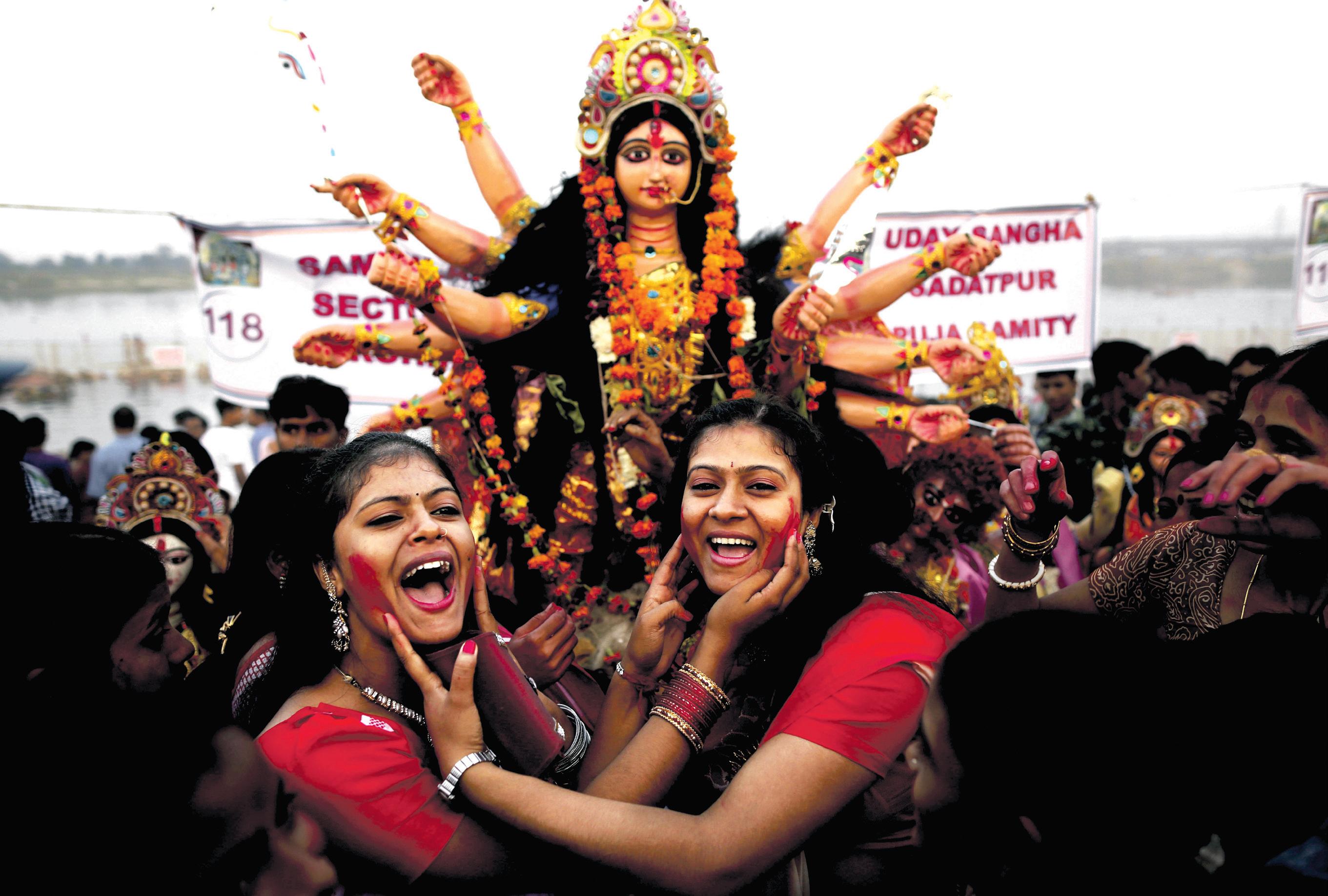


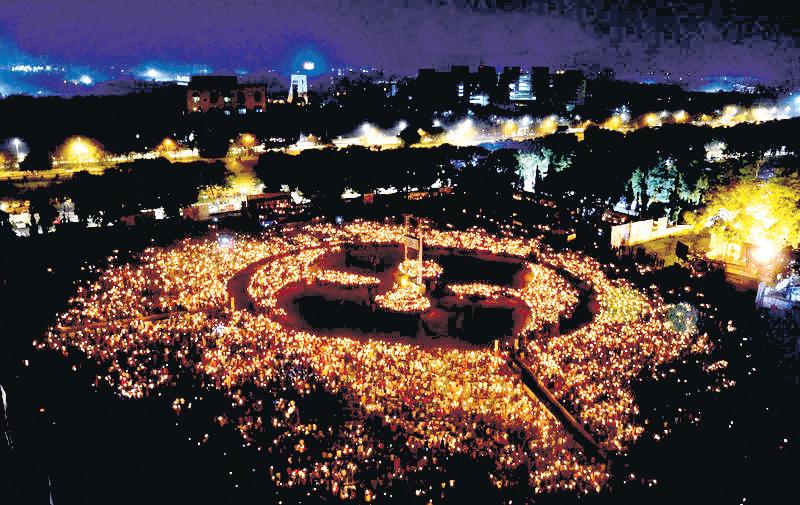 Main Picture: Thousands of Hindu devotees hold earthen lamps as they participate in the Maha Aarti ritual on the eighth night of Navratri festival in Gandhinagar, Oct. 22. Photo: AP
Clockwise from bottom left: 1 Hindu devotees apply vermilion on each other in front of a large idol of Goddess Durga as they prepare to immerse it in the River Yamuna during Durga Puja festivities in New Delhi, Oct. 24.The festival commemorates the slaying of a demon king by the lion-riding, ten-armed goddess Durga, marking the triumph of good over evil.
Photo: AP
2 A student at Udaipur’s Guru Nanak Girls College performs the ritual garba dance of the Navratri season
3 An effigy of demon king Raavan burns to denote the end of all evil, at the end of the Navratri period.
4 A Muslim boy rests as elders offer prayers during Eid al-Adha in New Delhi, Oct. 27. Eid al-Adha is a religious festival celebrated by Muslims worldwide to commemorate the willingness of Prophet Ibrahim to sacrifice his son as an act of obedience to God.
Photo: AP
5 Ushaben Dave, 65, wears a framed costume decorated with dozens of oil lamps during celebrations for the Festival of Nine Nights, Navratri, in Ahmadabad, Oct. 21. Photo: AP
Main Picture: Thousands of Hindu devotees hold earthen lamps as they participate in the Maha Aarti ritual on the eighth night of Navratri festival in Gandhinagar, Oct. 22. Photo: AP
Clockwise from bottom left: 1 Hindu devotees apply vermilion on each other in front of a large idol of Goddess Durga as they prepare to immerse it in the River Yamuna during Durga Puja festivities in New Delhi, Oct. 24.The festival commemorates the slaying of a demon king by the lion-riding, ten-armed goddess Durga, marking the triumph of good over evil.
Photo: AP
2 A student at Udaipur’s Guru Nanak Girls College performs the ritual garba dance of the Navratri season
3 An effigy of demon king Raavan burns to denote the end of all evil, at the end of the Navratri period.
4 A Muslim boy rests as elders offer prayers during Eid al-Adha in New Delhi, Oct. 27. Eid al-Adha is a religious festival celebrated by Muslims worldwide to commemorate the willingness of Prophet Ibrahim to sacrifice his son as an act of obedience to God.
Photo: AP
5 Ushaben Dave, 65, wears a framed costume decorated with dozens of oil lamps during celebrations for the Festival of Nine Nights, Navratri, in Ahmadabad, Oct. 21. Photo: AP


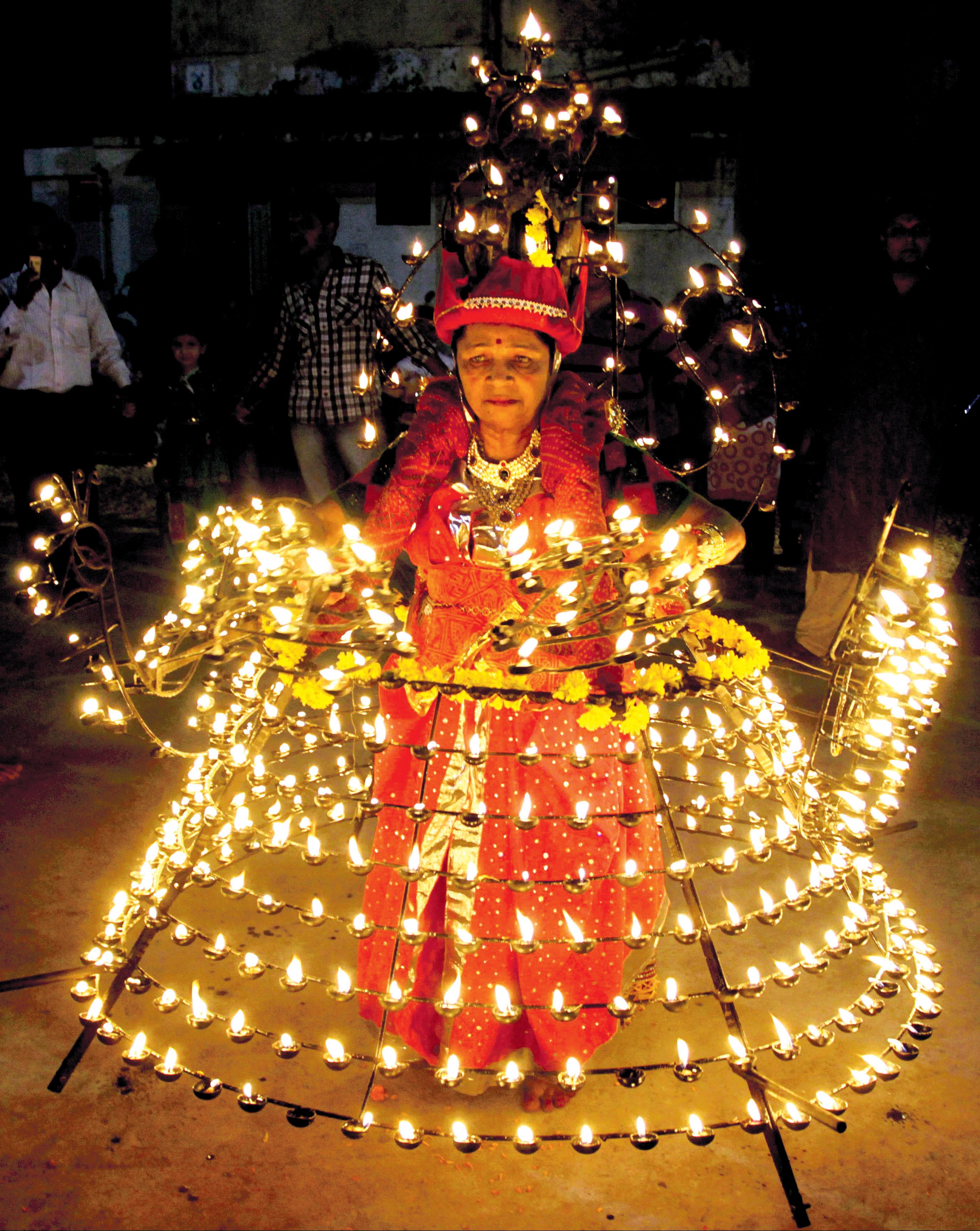
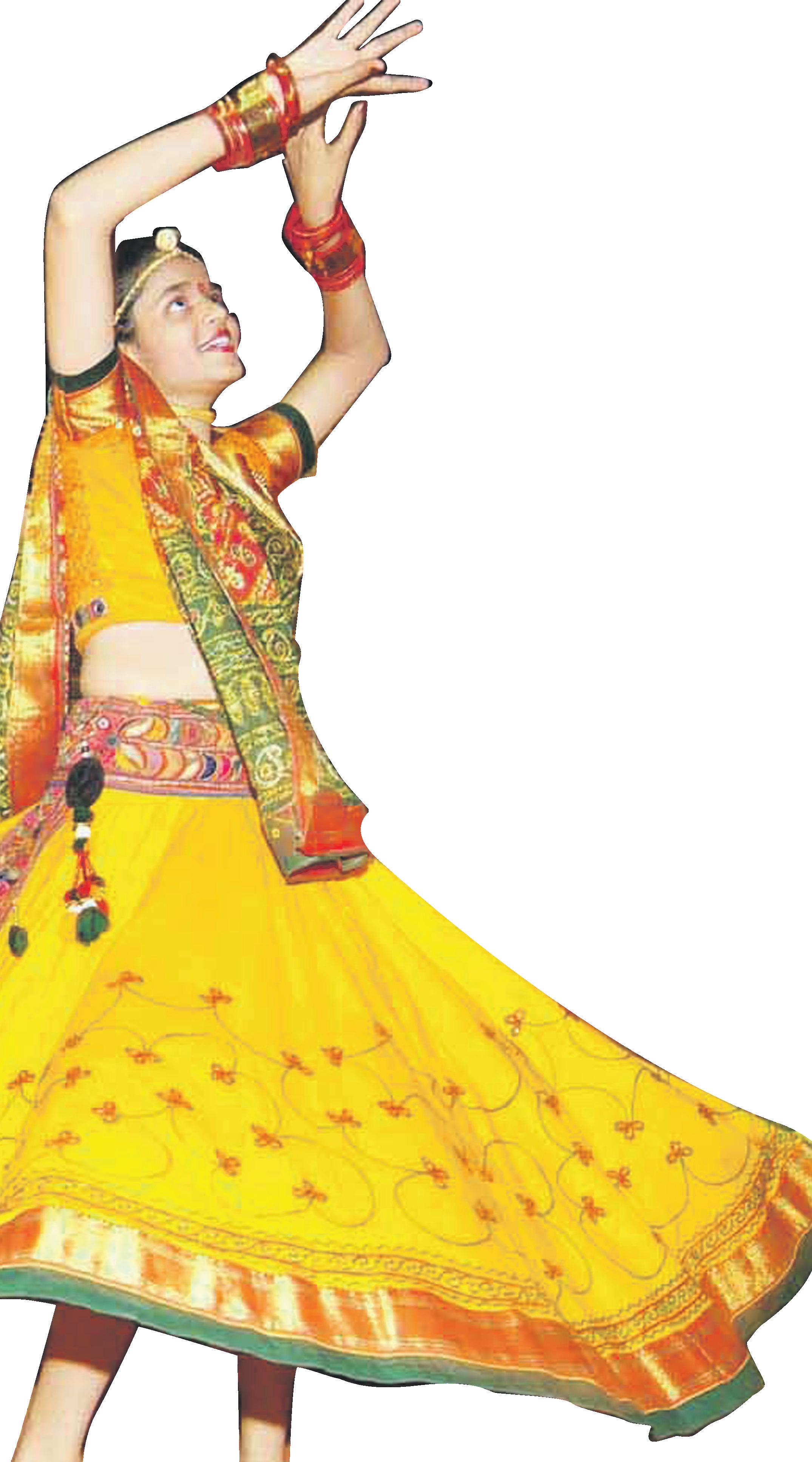

Masala murders from Mumbaistan
New authors play to India’s mass market with racy thrillers
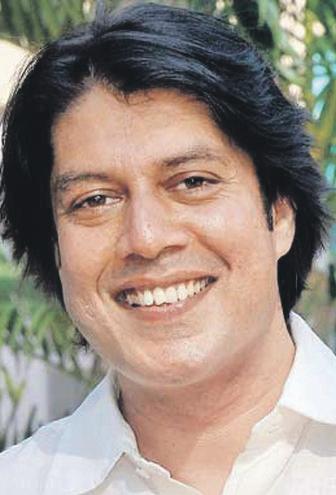 By CHITRA SudARSHAN
By CHITRA SudARSHAN
Move over fine writing, thrillers are spurring creativity among new Indian authors. Critics say thrillers with Indian twists are fetching mega bucks in the booming mass fiction market.
The trend is primarily western, prompted by the glut in imported thrillers by the mega retail chains to keep the market alive in the face of the downturn.
Thrillers set in an Indian milieu are long overdue, says writer Anita Nair.
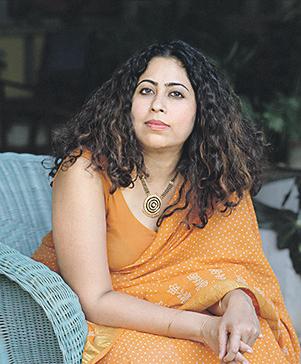
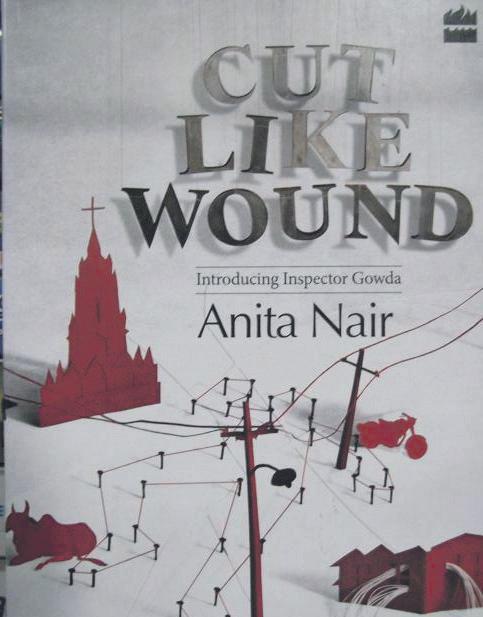
“Perhaps, why they haven’t taken off is because thrillers demand a great deal of research and precision. Information gathering is not easy in our country. Also, as Indian literature in English is still shaping itself into a canon of writing, most writers are perhaps unwilling to be branded by the tar brush of commercial writing,” says Nair, who switched from poetry and literary writing to plotting a thriller this year.
Nair’s thriller, Cut Like a Wound (Harper Collins-India) published in September, is modelled on the classic Euro-American style with private investigator Borei Gowda stumbling across the murder of a male prostitute at Shivaji Nagar in the heart of Bangalore. Gowda is beyond his prime and battles his mid-life blues with an extra-marital affair.
The trail leads Gowda to a psychopath, a serial killer....
The book occurred to Nair during an e-book tour in Rome in 2010. “In fact, it is only when I started work on my novel that friends began recommending writers I ought to read - Ian Rankin, Michael Robotham, Mark Billingham and Daniel Pennac. However, inspector Gowda has little to do with the noir heroes of western literature,” Nair says.
Entrepreneur-turned thriller writer Aroon Raman projects a fantastic hypothesis in his book, The Shadow Throne. A shadowy group - a collection of individuals from Indian intelligence and security agencies - plans an audacious nuclear strike by smuggling a Pakistani ballistic missile into Afghanistan and firing it into India from the Durand Line, the Af-Pak frontier, in the
hope of igniting a sub-continental Armageddon. Just two men and a woman - an Indian journalist, a police officer and a college lecturer - stand between them. Do they succeed?
Raman, who has been inspired by pioneers of the genre like Sir Arthur Conan Doyle, says it was his intent to place The Shadow Throne (Pan Macmillan) “against the backdrop that mirrors the current underlying reality - especially as it applies to India’s political predicament and its impact on our geopolitical security - and the uncertainties in Pakistan”.

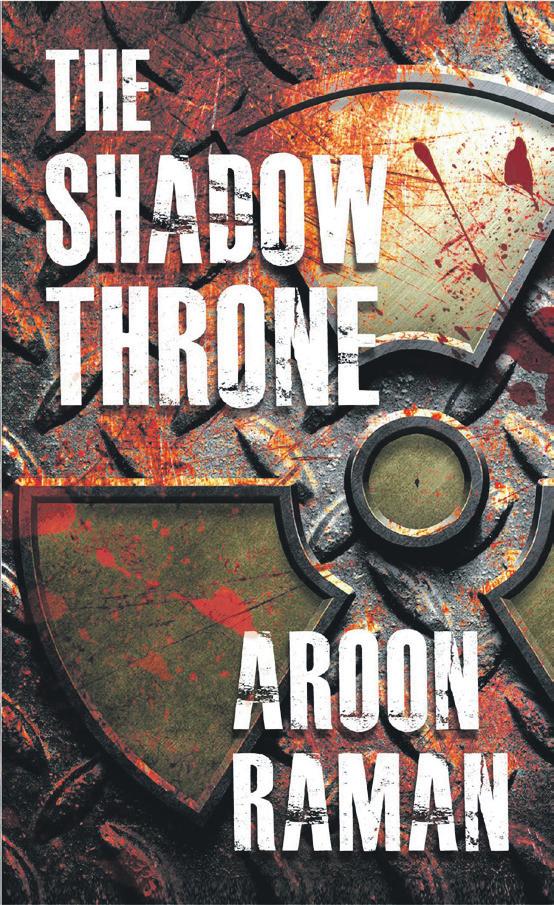
Known for its impressive lineup of foreign titles in the thriller category, Pan Macmillan says the “Indian mass market is ready for thrillers created indigenously”.
This month, it added Madhumita Bhattacharya’s The Masala Murder to its fledgling coffer of homegrown mystery stories.


The Masala Murder, a serial thriller, is about a woman private eye, who manages a private investigation agency - a la Alexander McCall Smith’s The Ladies Detective Agency Series.
Written in first person, the writer, a detective-turned-food-critic and baker, returns to snooping by default when she is entangled in the murder of a gourmet importer.
In a recent interview, Bhattacharya said to get a first novel published in a challenging environment, she needed to write “something that fits into
a genre of some sort - that a publisher could see it working commercially”.
“The one closest to my heart is mystery... It works for me,” Bhattacharya notes.
First-time crime thriller writer and filmmaker Piyush Jha believes that “it takes an extraordinary mind to write a thriller”. Jha, who published his first crime thriller, Mumbaistan (Rupa & Co) - an anthology of three novellas about the underbelly of Mumbai - says “thriller as a genre is yet to show its mettle in India unlike in the west where writers of crime thrillers come with a lot of background”.

“All those who write thrillers in the west have a lot of background, depth and a lot of life. In India, one has to explore the surroundings to come up with credible stories,” says Jha.
The list of writers is growing with early trend-setters like Mukul Deva and Ashwin Sanghi making way for new names like Juggi Bhasin, Abhisar Sharma, Shantanu Dhar, Hemant Kumar, Abhay Narayan Sapru, Saad Shafqat and several more. A thriller has to factor in the reality around us.
“A thriller, I discovered, is a reality check every writer has to undergo to know how grounded we are in the world we inhabit,” Nair said.
And India sure is weaving its fair share of mysteries in its crowded cities and dark alleys.
Madhusree Chatterjee
Thrillers haven’t taken off (in India so far) because they demand a great deal of research and precision. Information gathering is not easy in our country. Also, as Indian literature in English is still shaping itself into a canon of writing, most writers are perhaps unwilling to be branded by the tar brush of commercial writing:
Anita Nair
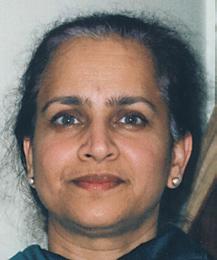
38 NOVEMBER 2012 www.indianlink.com.au B oo KS
Anita Nair
Piyush JHA
Anita Nair
Aroon Raman
Piyush JHA
Co-operative co-existence
Shashi Tharoor’s latest offering urges India to wield her soft power – but is this a glorified, yet impractical role?
By CHITRA SudARSHAN
Speaking on the occasion of his book release on September 9 at the Australia India Institute (AII), University of Melbourne, former diplomat and peace keeper, current Member of Parliament and author Shashi Tharoor clarified the use of the term ‘Pax Indica’. By that he did not imply Indian world domination or an empire like Pax Romana, but a ‘peace system’ of cooperative relationships in which India would play an important role in developing a contemporary set of rules that will help ‘promote and maintain a period of cooperative co-existence’. He cited the example of the world wide web - a world in which countries are connected to each other, and through which they will pursue their interests in a cooperative way. Until recently, India was a ‘rule-taker’; today however, India contributes more to rule making, and will be a key rule maker in the 21st century.
India already represents and exemplifies it: it is, on the one hand, a member of the Non Aligned Movement; a member of the community of democracies which includes Imperial powers against which it had fought; it is at the same time a member of G77 (group of developing countries) as well as G20 (a consort of the biggest economies of the world); a part of SAARC, a member of RIC; BRICS – representing South-South cooperation. Tharoor believes that India is a lynchpin of this diverse international cooperative endeavour. This is what he celebrates and promotes in Pax Indica
In order to play a greater role in the world, India needs a robust foreign policy, which in turn requires more foreign services officials. He examines the role of the Ministry of External Affairs (MEA), Parliament and public opinion on the shaping of policy, and outlines his new grand strategy for the nation, arguing that India must move beyond non-alignment to multi-alignment. The MEA is grossly unequipped for this role – being under-staffed and under-resourced. India, with a population of over 1.2 billion
Parag Khanna rightly pointed out that India has neither the capability nor the ‘strategic appetite’ yet, to be a world or even a regional power
has around 900 foreign services officials across the world -the same size as Singapore and New Zealand. That is less than Brazil‘s which has over 1200 career diplomats; and China’s, which has around 4200 foreign service officials, and the US 42,000. There is an urgent need to expand India’s foreign service, argued Tharoor.
Tharoor believes that India’s external orientation has been downplayed, largely because of the belief that foreign policy has little impact on rural voters in India – who may constitute the bulk of most MPs’ constituencies.
Tharoor opines this is a misconception: foreign policy affects everyone in a globalised world. Economic liberalisation has made India a more globalised country than ever before; much of her growth has come about as a result of her international connectedness. The younger generation in India is growing up working with foreigners, travelling abroad on work or holiday, and such like. The purpose of India’s
foreign policy must be to promote and facilitate the domestic transformation of India. There are individual chapters in Tharoor’s book on Pakistan, China, US, South Asia; one on India’s ‘soft power’; a chapter on the domestic underpinnings of Indian Foreign Policy, especially on the MEA. Tharoor also evoked the concept of ‘Soft Power’ (first coined and elaborated by the Political Scientist Joseph Nye) during his book launch– that is, a country’s ability to influence its region or the world – not through military power, but through ideas, culture, institutions, and a web of cooperative endeavours. He believes India has considerable ‘soft power’ that it can rely on and invoke, which is a source of strength.

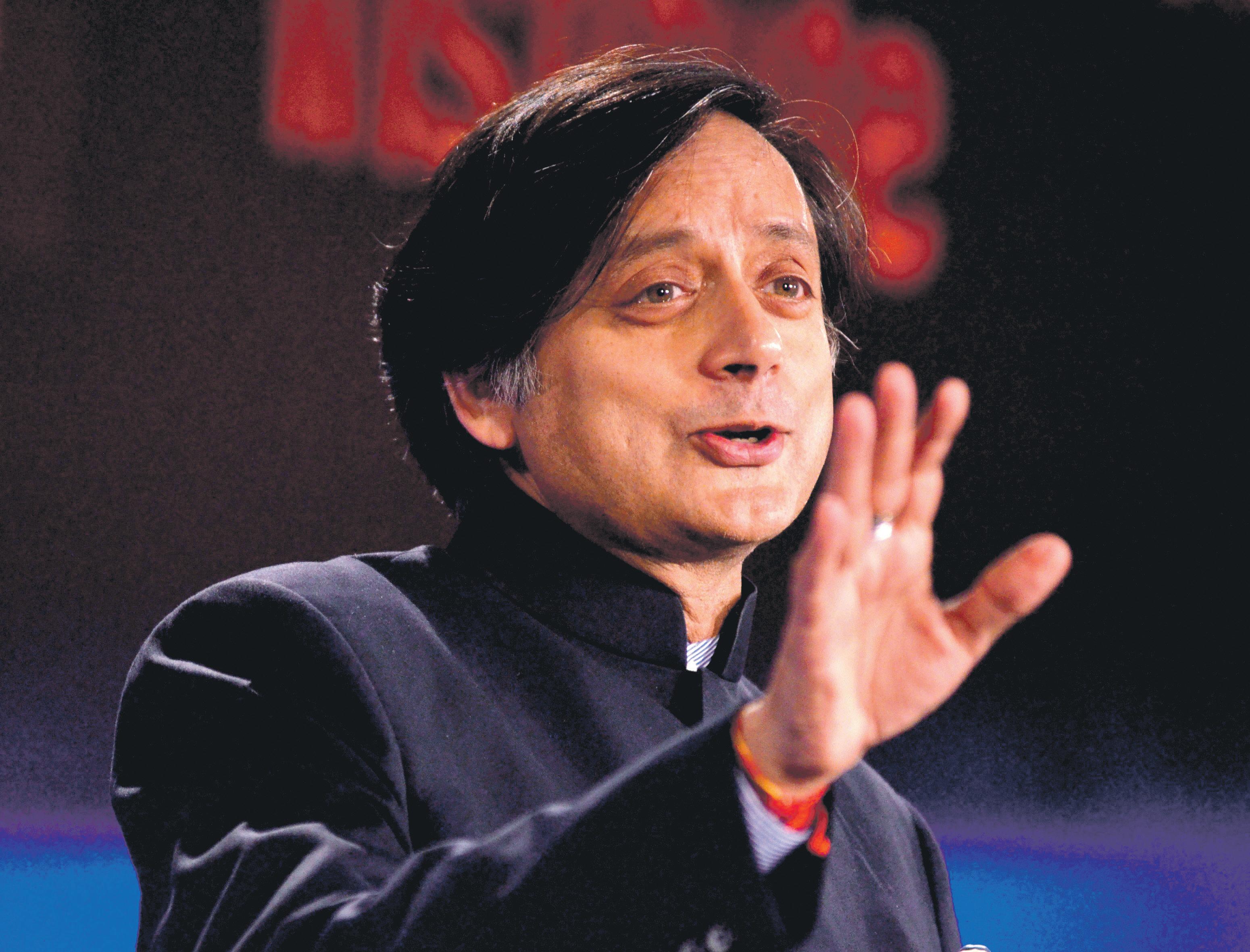
Tharoor’s talk on the occasion of his book launch was impressive, persuasive and engaging. The book too is a serious attempt to articulate a vision for India in the near future: God knows there are too few thinking politicians in India
Shashi Tharoor
Economic liberalisation has made India a more globalised country than ever before; much of her growth has come about as a result of her international connectedness
today. Some of the chapters are fairly in-depth and address some really serious issues that need to be confronted. This book must be read by anyone interested in India’s foreign policy. However, it is this reviewer’s opinion that those reading Tharoor must also make it a point to also go though Ramachandra Guha’s “Ten Reasons why India will not – and must not – become a superpower”, if only to get a sense of perspective.
Far too many books have come out in the last 10 years harping on the rise of China and India, that the Indian middle classes have come to believe that their country is an ‘Emergent power’, a ‘Rising superpower’, a ‘Reluctant superpower’ and other epithets, and it is there for the asking.
Parag Khanna rightly pointed out that India has neither the capability nor the ‘strategic
appetite’ yet, to be a world or even a regional power. When travelling in India, one often wonders whether the Indian upper middle class which flits from mall to air-conditioned offices to gated communities – is aware of the stark inequalities, the appallingly inadequate infrastructure and power shortages – when it stakes such a claim for India. At any rate, why can’t they – and Tharoor – wish for an India that is different: one that is more ethical, concerned about the welfare of the less fortunate, more interested in ideas and ready to lead by example? That would indeed be showing real leadership – and doing justice to our long and hoary past.
Shashi Tharoor’s Pax Indica: India and the World of the 21st Century is published by Penguin.

NOVEMBER 2012 39 INDIAN LINK
B oo KS
Now AP GuRuSWAmy captures beautiful moments in Melbourne’s Indian community!
In his 40-year career experience as a professional photographer in India Guruswamy covered news, corporate events, large scale events and celebrities.
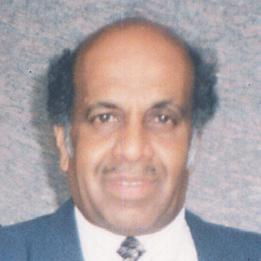
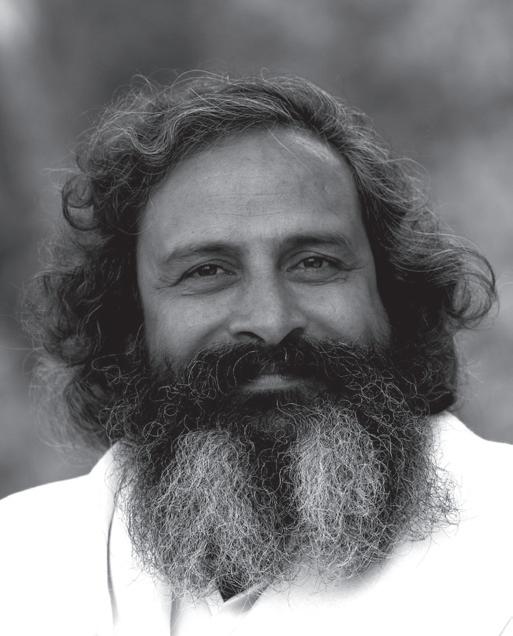
For stunning images of your next big event, call Guruswamy on 0406 820 413.


good for some, but not for all
Mineral concessions
By NoEL g dE SouZA
When public decisions are made often under great pressure from one or more interested parties, the outcome may not be favourable for all the affected parties. Some may be favoured by the decision, whilst others could be adversely affected.
Reduction of interest rates
A very good example is the lowering of the interest rate by 0.25% to 3.25% on October 2 by the Reserve Bank of Australia (RBA). This reduction was not expected by either economists or currency traders. There had been much pressure on the RBA to stimulate the economy by the real estate sector, in particular. The housing sector wanted an even greater cut, but the RBA had several other important considerations to take into account.
The move undoubtedly favoured home buyers because an average home loan mortgage of $300,000, if reduced by 0.25%, would save around $50 a month. But at the other end of the economic spectrum, pensioners and others who depend on their savings can expect banks to simultaneously reduce rates on term deposits. This means that pensioners are going to earn less, and this in turn puts pressure on the government to increase part pensions to retirees.
High interest rates have kept the Australian dollar high and this has adversely affected Australia’s manufacturing industries which cannot compete with cheaper imported products. Even Australia’s agricultural sector, once its economic backbone, has become, as a result, uncompetitive in the world market. The reduction in interest rates led to an immediate fall of 0.7cents against the US dollar, which is possibly a desirable outcome to the RBA.
Price of iron ore and coal
were
Mineral concessions can make the owners megarich, often resulting in litigation. The granting of mineral concessions in Australia can depend very much on decisions in the hands of the state governments, state mining ministers and at times, with the federal government.
The situation is similar in India where there are currently on-going battles regarding the grants of mining leases. Governments on both sides of the political fence have been made to answer questions regarding the granting or cancelling of mineral concessions.
A good example is the mineral-rich small state of Goa. There were so many issues involved that a royal commission, led by Justice Shah, was instituted to probe into the matter. There were allegations of improperly granted concessions, of illegal mining in places where there were no concessions at all, and finally of royalties not being paid. Not paying government tax dues meant the people of the state are being denied revenue.

To add to the above illegalities, there were questions of environmental spoilage, damage to agriculture, dust pollution and traffic congestion, and of dangerously driven ore carrying trucks.
The Supreme Court, in October 2012, suddenly clamped down on this sorry state of affairs by banning all mining in Goa. This abrupt event has had varying reactions from different groups in the state, depending on their interest in the mining sector. The miners themselves have reacted with disbelief as they had counted on the State Government to save them. Besides the miners themselves, the affected people include mining contractors, truck owners and barge operators who employ thousands of people. Barge owners alone are said to employ 6000 people. All these groups create indirect employment for a great number of people.
of improperly granted concessions, of illegal mining in places where there were no concessions at all, and finally of royalties not being paid.
Following the nowunravelling new Global Financial Crisis (GFC) in European economies, the price of coal and iron ore has fallen. This has resulted in mineral assets being sold in Australia at reduced prices. The buyers who want to grab such bargains come mainly from Asia, principally from China and India.
Coal is a prized asset as coal-fired electricity plants are the norm in India and China, despite the growth of alternative energy sources. Coal generates half of Asia’s energy needs. Besides, high quality coal is used to produce steel. These mining deals total a sizeable $47 billion which prevents the Australian dollar from declining too rapidly.
Constructing a mega highway
There was recently astounding news for residents in Western Sydney: the highway to Parramatta is proposed to be dug up and replaced by an eight-lane motorway, using a new technique of “cut-and-cover” which would entail ripping up parts of the existing road and building a new road underneath. One can imagine the panic of residents and businesses along the proposed route as it could take years to build.
The cost of this amazing proposal is an astronomical $10-15billion! For a figure this high, there are certainly going to be tolls, possibly to attract private entrepreneurs so as to make the venture a private-public partnership.
40 NOVEMBER 2012 www.indianlink.com.au
He captured the magic of Aishwarya Rai when she got back home after winning the Miss World crown in 1994.
o P inion
No matter what the solution may be to a problem, there will always be some winners and losers
There
allegations
COMPLETE MIGRATION SERVICES
(ABN- 91 761 820 052)
WORK, STUDY, LIVE IN AUSTRALIA, N EW Z EALAND, C ANADA
For queries on July’12 changes, Skill Select and Expression of interest call now at 0433 986 780 0421
119 628
Free consultation for 15 minutes or via email
i) Advice on Migration pathways
ii) General Skilled Migrationspecialist
iii) Student Visas( new and extension)
iv) State Sponsored Visas / ENS / RSMS / 457
v) Business Migration
vi) Partner and Family Migration specialist

vii) Admission in Australian Colleges and Universities
• MRT Review procedures in Australia
• OCI / POI / Indian Passport Application / Renewal
We also specialize in Home / Commercial Loans (MFAA Certified) specialist
Contact:
Sonal Agrawal Syed Mohiuddin (JP) Ex-Visa officer MARN:1169617, MMIA:5385 MARN:1171248, MMIA: 1021, MFAA:54385

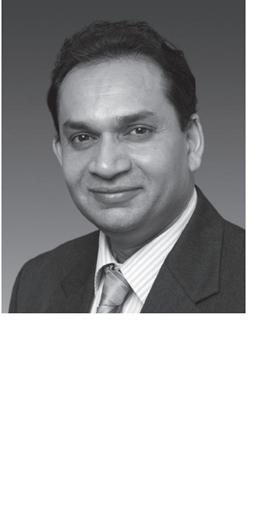
Level 2, Suite 8A, 48 Macquarie Street, Parramatta, Australia 2150 PH (02) 86775161, FAX: (02) 98916314

Email: contactus@completemigrationservices.com.au

(We Speak English, Hindi, Marathi, Urdu, Telugu) For quick visa assessment fill the online visa assessment form on www.completemigrationservices.com.au
We help you achieve a better life and pursue your dreams
NOW OPEN IN
NOVEMBER 2012 41 INDIAN LINK
Migration Agents Registration Number www.mara.gov.au 1169617
So you have a passion for writing…. Indian Link Newspaper is seeking reporters in your city, to cover Indian community events, as well as India-related events in the mainstream.
Having been successfully operating in Sydney for the past 20 and Melbourne for the past 12 years, Indian Link has now established a presence in Brisbane, Adelaide and Perth.
We would like YOU to be part of our exciting growth! Appropriate remunerations paid.
info@indianlink.com.au

Are you looking for a career in Family Day Care?
Come along to “Aussom Family Day Care ”
Aussom Family Day Care opened its doors in Jan 2008 and has offices in both Melbourne and Sydney, to provide quality early childhood education and care to children.
Aussom’s mission is to support women who want to build a satisfying career in early childhood. To be a part of Aussom is to be valued and nurtured as a contributing member of society with skills and attributes that can be used to nurture the health, safety and well-being of children. We will support you to gain the skills and knowledge required to become an early childhood educator by providing one on one advice, support visits and training.
• We offer flexible contracts to genuine people interested in caring for and educating children aged between infants to 12years old in their own home,
• We would love to engage a diverse range of educators from many different cultures,
• A commitment to enrol into Certificate 3 in Children’s Services and other criteria apply,
• We have a team of dedicated professionals waiting to help you kick start your career
• We offer comprehensive support and guidanceall you need to do is pick up the phone and make an appointment. We also have vacancies for care for children with our other educators. If you are studying, looking for work or are working and want care for your child\children please call as we have educators across Melbourne.

Aussom Family Day Care

49 Hopkins Street Footscray 3011
Footscray 3011
Opening hours
Mon - Fri 9am to 5pm
email: info@aussom.com.au
May the Joyous Spirit of Diwali be with you From the Team at Indian Link
journalists Contact
www.indianlink.com.au 42 NOVEMBER 2012
Casual
Cool casual, or too casual?
Is it just the clothes or a state of mind that define your attitude to the world?
By AMIT duTT

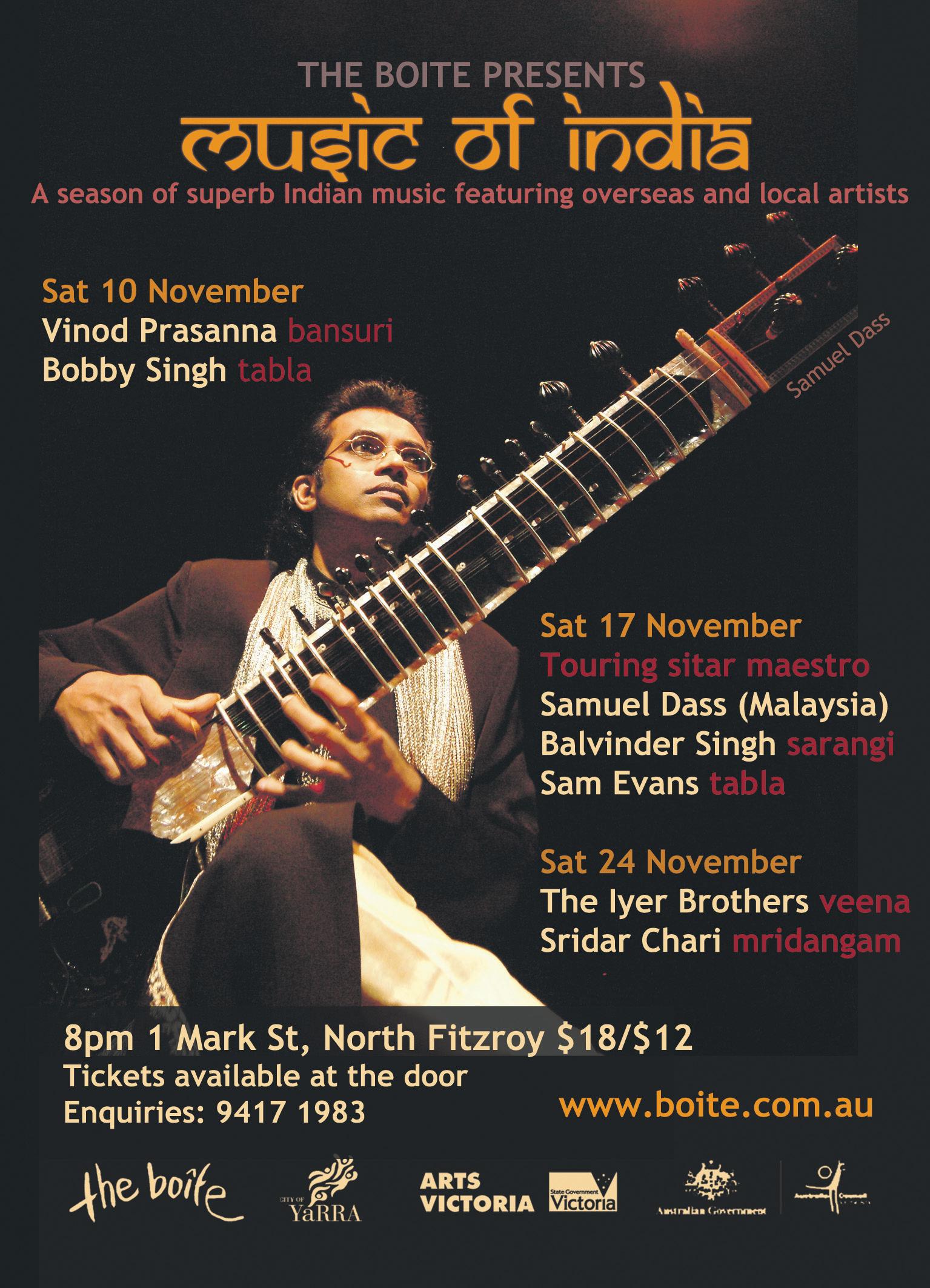
Afew days ago, my wife and I were invited to casually dine at a friend’s place.
“Come over,” she said. “Nothing too formal, we will just have a lazy Saturday night.”
On the dot, defying the IST, we arrived at her place with a nice bottle of red in hand. Her husband opened the door, welcoming us. “We didn’t want to make it too formal, so we invited no one else,” he said, making sure we knew there was no one else for company.
As we entered the living area, there sat his wife in lazy, crumpled pyjamas, plastic slippers, and a singlet. “Just wanted to make it a casual evening,” she said, justifying her appearance. Looking at her I certainly did feel overdressed in my jeans and t-shirt. The evening went well. Takeaway, a few drinks and the local gossip. Casual, it was. In fact, it dropped to the nadir of casualness.
Sitting there started an interesting thought process in my mind. Have we become too casual, and when is casualness too casual? And has this casualness crept into all spheres of our lives? Casual food, friendship, sex, affair, drink, smoke and the list goes on… Have we taken the very word ‘casually’ too seriously?
I am by no means a connoisseur of fashion and dressing up. But I do strongly believe that what you wear reflects your state of mind in general. A pair of jeans may scream casualness, pyjamas and singlets don’t.
In the last few years, there has been a concerted effort to make the workplace casual. Hence the emergence of workplaces like Google or some leading IT companies. Taking a cue from them we have ‘casual Fridays’ at many workplaces. However, it seems in the present day, our culture
has become so relaxed that casual at the workplace to many, means what you would wear around the house on a Sunday morning. In the last 16 years of working in big corporations and small businesses, I’ve seen my co-workers dressed in torn trackies and socks, singlets with an open view of cleavage and stomach, to the extent of intimate garments and athletic wear suitable for a gym. While at some places the trend has been corrected, at others, the risk to rectify it has been too great in the name of political correctness.
As the workplace is a major part of our life today, our attitude there flows freely to our weekend life too. The ‘casual’ attitude is no different from the ‘use and throw’ attitude we have developed. When it’s cheaper to replace, why bother repairing or fixing. Electronics, computers, lawn mowers or relationships, the mindset is, it’s easy to get a new one, why fix the old one. Casualness driven to the extent today screams, I don’t give a damn in any sphere of my life. And walking down the street, it shows.

Don’t get me wrong. I am, by all means, for making our lives easy and relaxed. In fact after wearing suits for 16 years of my corporate life, I am thoroughly enjoying the jeans and polo t-shirt I now wear to work. The issue is more than clothesdeep. Clothing is the only visible sign of our attitude. It is what has contributed to our thoughts and the way we want to get away without making any effort in our daily lives.
It’s that old “Chalta hai” attitude all over again: ‘anything goes!’ There is no difference in the two. They both say loud and clear to the world that we just can’t be bothered, and it infuses in us the very same feeling.
The whole purpose of casualness is open communications and an unconstrained outlook. And that is only possible when we know where to draw a line. When we can make an honest distinction between what we wear and how we think, and not let either one of them overpower the other.
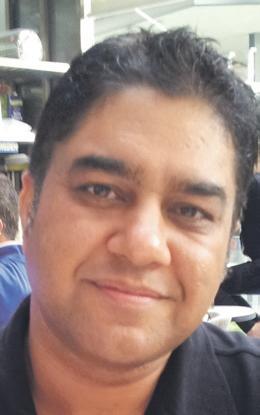
NOVEMBER 2012 43 INDIAN LINK
o P inion
I strongly believe that what you wear reflects your state of mind.
Casualness driven to the extent today screams, I don’t give a damn in any sphere of my life
India: Land of the free?

So it’s that time of the year again when we ask the eternal question: can 1.2 billion people be trusted with lots of explosives?
I love Diwali, not just for the festivities and tradition, but for what it represents. Which other nation would have so much gunpowder detonated in the space of a week, and still be intact at the end of it? Moreover, which functioning nation would actually allow its citizens access to so much low-grade explosive material?

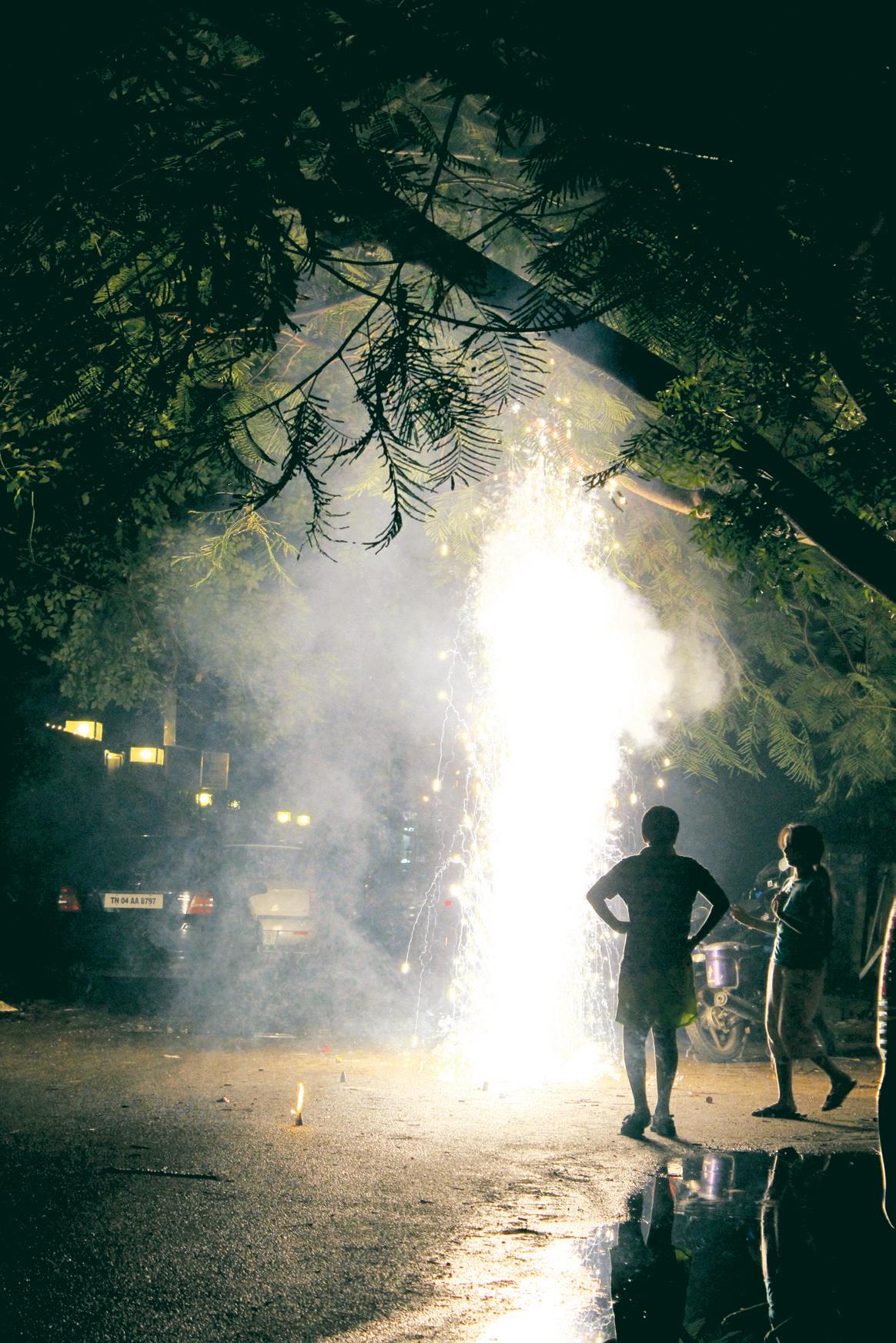
An American ambassador to India, John Kenneth Galbraith, famously once described India as a ‘functioning anarchy’, and if you strip the word ‘anarchy’ of its stigmatic connotations, then that’s probably about right. Large swathes of the country operate with little or no interference from the central government, and often those areas aren’t tribal backwaters. Many Indian citizens appear to do whatever they want – from reversing up motorways to take a missed exit to ignoring whatever law exists to maximize monetary profit; from taking justice into their own hands to the aforementioned annual party of fireworks. In some respects, it could be said that Indians are the freest people in the world.

But how free is free? Freedom from restrictive laws is just one face of a multi-sided issue.
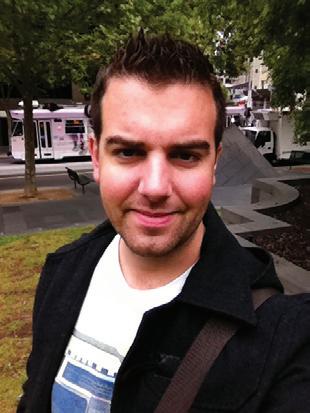
Aamir Khan’s issues-based show Satyamev Jayate interviewed a number of people who don’t have the freedom to access basic rights, nor the freedom to fight for them. Caste informally restricts millions from accessing dignified employment, gender roles informally deny both women and men from the freedom of choosing their lifestyle, and a lack of civic works combined with disability restrict many from accessing government services such as clinics (which sometimes feature steps at their entries). Economic freedom is often a less obvious, although no less malignant shortcoming of the weak Indian state. As Manmohan Singh, Mamata Banerjee and sundry go to war over the impact of Foreign Direct Investment (FDI) in retail, everyone seems
to be missing the point. The Left worry that FDI will do small business out of employment, while the Right say that the street vendors are doing better than ever, despite the reforms of the 1990s. Regardless of who is correct regarding FDI, have either side done much to lift the poor out of poverty? Has West Bengal’s socialism turned Banerjee’s home state into a bastion of equality? And has the past 20 years of liberal economics in Delhi helped get beggars off street corners nationwide?
The contrast is particularly glaring in the big cities, particularly in the north. The recently opened, state-of-theart Yamuna Expressway from Greater Noida to Agra passes countless impoverished villages. The road is largely empty, thanks to the up to $10 price tag at the tollbooths. Nevertheless, the road is being touted as an example for other motorway projects to follow: Delhi to Lucknow, Ahmedabad to Vadodara, Chennai to Bengaluru. But who is benefiting from all of this? While driving along the Yamuna Expressway, I felt childlike in my freedom – speeding along, elevated above the surrounding plains, sights like the Buddh International Formula One circuit passing me by. And then I noticed the road was lined by barbed wire fences. Apart from the obvious comment to be made about safety (can you imagine the consequences of crashing into a barbed wire fence?), who was the barbed wire was intended for, I wondered. Is it there to keep out roaming cows, nilgais and other animals? Or is it to discourage local villagers from trying to cross the road? Either way, the symbolism is clear – on one side of the fence is the flawless new tarmac, hosting those who can afford her tolls, the ‘civilised’.
On the other side stands the wild, animals and people who live near them, who can’t afford the expressway tolls, much less a car to drive. The ‘uncivilised’ are literally as well as metaphorically held back by three seemingly endless lengths of barbed wire; the scene was something akin to that of a prison. Meanwhile, earlier this year, the Asian Development Bank reported that India’s middle class could equal the current national population of 1.2 billion by 2032. The question is, what will the overall population be by 2032, and in what condition will they be living?
Which other nation would have so much gunpowder detonated in the space of a week, and still be intact at the end of it?
The Asian Development Bank reported that India’s middle class could equal the current national population of 1.2 billion by 2032
Diwali in some ways is a leveller, a chance for those less fortunate to at least try to celebrate. Young street children stand mesmerised by fireworks, older children join in, and their parents watch as they smile and laugh. Others are in a more giving mood, and charities register a bump in donations during each November. Of course, this is no solution, but at least they can forget for a while the freedom that they live without. For a short time, India’s anarchic freedom extends to just a few more of the population. I wish you all a very blessed and free Diwali, Eid, Navratri, Guru Nanak Jayanti or whatever else you may be celebrating this month.
44 NOVEMBER 2012 www.indianlink.com.au
An Au SS i E Boy in c h E nn A i
y TIM BLIgHT
The concept of freedom works for the few who take it much too literally, solely for their convenience
Buddh International Circuit, seen from the new Yamuna Expressway
Delhi’s clean, clear streets
Happy Diwali from Chennai!


NOVEMBER 2012 45 INDIAN LINK
A reflection on Navarātri
Goddess, divine energy and womanhood epitomise the festival of Navarātri, going deeper than its entertaining exterior
 By MAHESH RAdHAKRISHNAN
By MAHESH RAdHAKRISHNAN
This year, we were not able to make it back to Sydney to spend Navarātri with my parents. But the festival, as always, is a good opportunity to reflect on the concept of Shakti or the Goddess that is manifest as nature, the flow of energy in the cosmos, and womanhood.
The philosophical elements of Shakti are relevant and transcend the confines of religion and doctrine, so I invite readerswhatever your faiths and gender - to journey with me on this reflection on a Hindu tradition.
Navarātri, the nine nights of the Goddess, celebrates the various aspects of Shakti, including the forms of Lakshmi - abundance; Durga - destruction (which always entails regeneration), and Saraswati - creativity and knowledge. The idea is that these concepts of flowing abundance, flowing destruction, and flowing creativity are female forms of divinity. Through worship we express our gratitude to them, and recognise that their embodiment on earth is in womanhood.
While some Hindus may wax lyrical about the place of women in philosophy and ancient practice, current conservative Hinduism still largely maintains women to have secondary status. I cannot say how long it has been this way, but the fact that continuing practices such as the dowry system, restrictions placed on widows and menstrual ‘impurity’ are entrenched (not to mention the more extreme institution of
be an issue grounded in secular life - and I think this is largely a good thing - there are some contributions to be made by the Hindu philosophical tradition and the way people approach it. The abstraction of energy, nature, (positive) destruction, abundance, creativity and knowledge as forms of feminine divinity is one useful aspect.
However, these spiritual ideals can conflict when we come to certain rituals, for example, rituals where women pray for the long lives of their husbands (one of these is called kāradaya nōmbu). It is reprehensible that the onus is on women to pray for the long lives of their husbands. One solution is to abandon such prayers. The other approach is to adapt the tradition as an opportunity for both partners to pray for one another’s long life. We are constantly adapting our traditions to contemporary life and this should not just be limited to practicalities (such as shorter ceremonies due to
time constraints or the use of lamps instead of fire), but social progress.
Subramanya Bharati, the great Tamil poet and Indian freedom fighter kept alive the connection between devotion and gender justice through his devotion to the Goddess in Kāli and Shakti, as well as his dedication to the emancipation of women through access to education and social participation beyond the traditional role of motherhood.
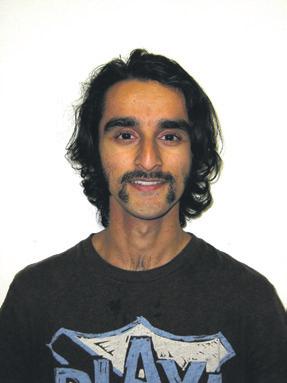
In his poem and song Om Shakti Om, which I learnt from my first singing guru Lakshmi Raman, he sings the praise of the Goddess as manifest in all forms of divinity - both male and female. The final verse praises Lakshmi described as ‘Thirumahal’, or ‘the auspicious one’. The Tamil word ‘mahal’ means ‘daughter’. While I have not delved into the origins of the name ‘Thirumahal’ for Lakshmi, there are certainly strong connotations of womanhood. In
Bharati’s verse, he suggests that “by meditating on Thirumahal, we will have abundance and our inner light will take flight”. An added layer of interpretation is that by meditating on the auspiciousness of womanhood (and not just dominant ideas of what an ideal woman should be) we make our lives worthwhile.
The spiritual dimensions of Navarātri carry with them a beautiful message. And while many of us may absorb ourselves in the colour of traditional practices such as garba, temple festivities and golu, it’s worth seeing how the philosophy of revering womanhood and femininity can be applied in everyday social life. And though the division of male and female is based on biological reality, there is diversity in the ways that they manifest in people, another layer in the quest for gender justice between and beyond the genders.

46 NOVEMBER 2012 www.indianlink.com.au
TRAD i T ion S
while many of us may absorb ourselves in the colour of traditional practices such as garba, temple festivities and golu, it’s worth seeing how the philosophy of revering womanhood and femininity can be applied in everyday social life.


NOVEMBER 2012 47 INDIAN LINK
By FRANKEy gERARd FERNANdES
Hundreds of Goanorigin Christians in Australia came out to welcome an ancient relic which was brought here this month from Rome.
The relic of St Francis Xavier – an arm – has been venerated at the Church of Gesu in Rome since it was detached from the body of the saint in 1614. Auxiliary Bishop of Sydney, Peter Comensoli, who coordinated the Australian leg of the tour of the relic, was quoted as saying in The Southern Cross that is “very rare” for the relic of the arm to leave Rome. It is the one with which
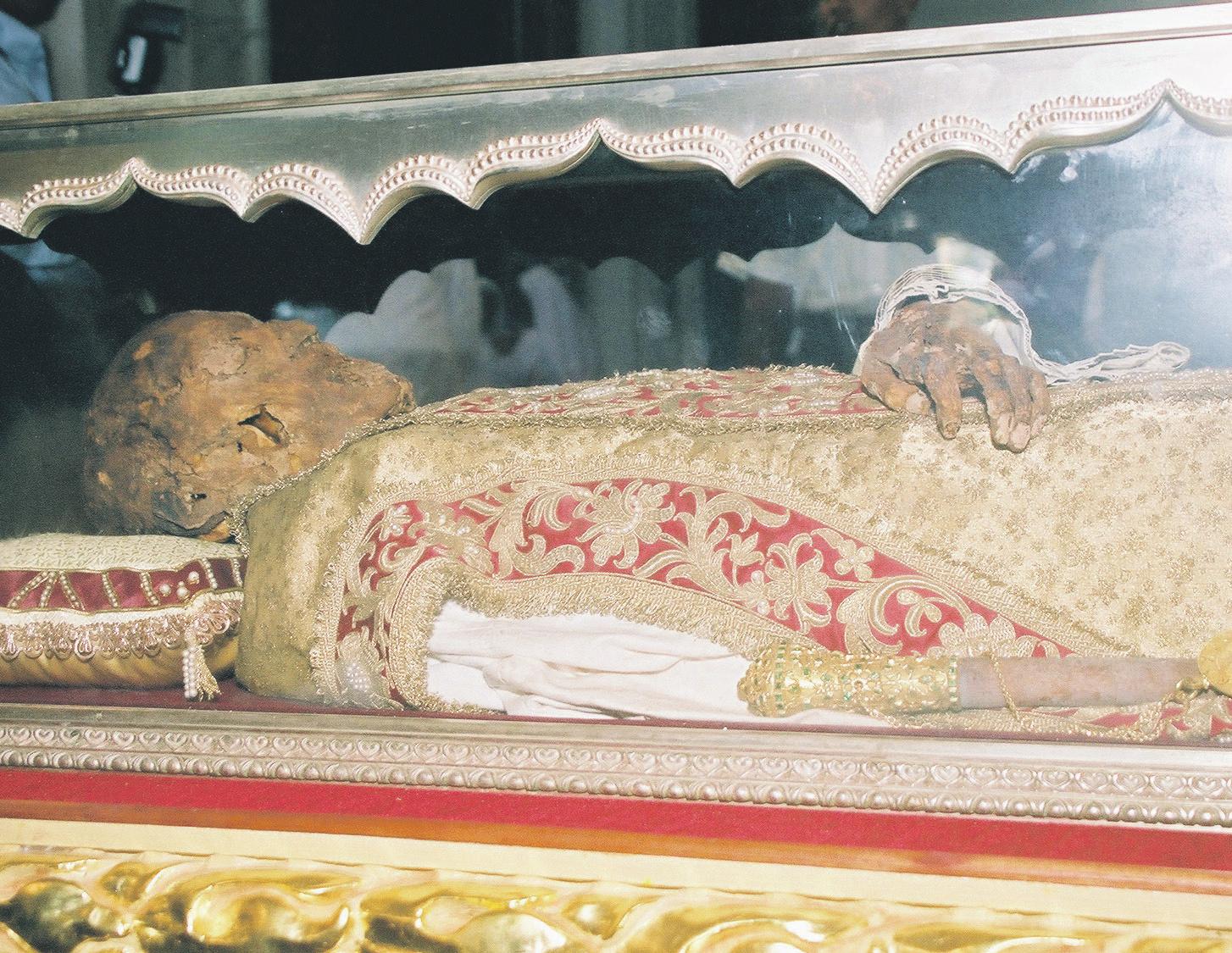


St. Francis Xavier baptised many thousands of people.
St. Francis Xavier, despite spending only a few years of his missionary life in Goa, had great love for the land and its people.

After his death his body was brought to Goa to honour his wish to be buried in this land. Since then, Goans have reciprocated that love in abundance and his holy relics have been preserved in the mausoleum at the Bom Jesus Basilica at Old Goa. For the Catholic community of Goa, the Basilica has become a place of pilgrimage with a visit to the holy relics at Old Goa at least once a year, a must.
The Relic in Adelaide Christians in Adelaide rejoiced as they celebrated having the relic of St. Francis Xavier amidst them, at the Saint Francis Xavier Cathedral.
The relic of the famed Jesuit
missionary was in Adelaide from October 14-19, and to mark the event, the Catholic, Goan and wider Indian community marked the occasion through a special Eucharistic celebration followed by a get together. The holy mass was organized by the Indian community with Fr Antony Adimai as the main celebrant, along with five con-celebrants, and was attended by around 700 people.
The homily spoke of the life of Saint Francis Xavier, the patron saint of Goa and Australia. Fr Antony’s sermon was a powerful talk on the five steps involved in the Christian journey of faith, drawing analogies from St. Francis’ life whilst on his missionary services across the globe.
The five steps in the Christian faith cycle are: Faith Received, Faith Personalised, Faith
Witnessed, Faith Celebrated and Faith Proclaimed. And it was this faith that brought together people from all over Australia to pay homage to this special saint. Every person involved benefitted from knowing that they had contributed towards the making of a wonderful celebration – from the altar servers, readers, ushers, musicians and offertory bearers to every volunteer who gave freely of their time.
Families attended the service from far and wide, travelling to venerate the sacred relic of the blessing arm of Saint Francis Xavier.
People lined up in sombre reverence to touch the casket which housed the relic, seeking the Saint’s blessings and intercession. At the end of the service, the community congregated at the Cathedral Hall to partake
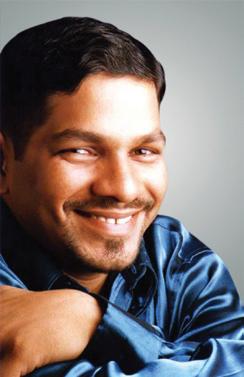
in a Goan meal and witness a presentation on the life of the Jesuit saint, covering his history and spirituality. Children presented a drama based on the Saint’s lifeportrayed through Goan culture. The Goan community was particularly instrumental in raising awareness of the relic in Adelaide. Bryan Fernandez of Goan origin who coordinated the event stated, “In this year of faith, may we come together as a united family in Christ and support each other through the cycle of our Christian faith, just like Saint Francis Xavier did all those years ago.”
Blaise Fernandes said, “The event is a reminder of St Francis’ life and how he left name, fame and wealth simply to serve the Lord.”
The relic next travelled to the Port Pirie Diocese in South Australia, as part of its Australia tour.


48 NOVEMBER 2012 www.indianlink.com.au S PE ci A l R EP o RT
The Bom Jesus Basilica at Old Goa; the holy arm which is preserved at Rome; the mausoleum where St Francis is preserved; the revered remains of the Saint.
St. Francis leaves Goa and arrives at Adelaide
Goencho Saib’s relic in Australia
The holy arm of Saint Francis Xavier is venerated by hundreds with piety, prayer and reverence
The Relic in Melbourne
The relic of St Francis Xavier was welcomed with great honour by the Konkanni Cultural Heritage Inc. Victoria, a Goan community along with the other communities at the Chapel of Monash University, Clayton, Victoria, Australia on Sunday 7th October 2012.
The Relic was moved from the hearse to the altar with great honour by the organisers. It was greeted by the people with lit candles and a hymn played on saxophone by Derek Stuart as the procession moved to the altar.
The Mass was celebrated by five priests, Fr. Anthony, Fr. James, Fr. Eugene, Fr. Rolio and Fr. Robin being the main celebrant, whilst the eight-member choir was organised by musician Joe Fernandes.
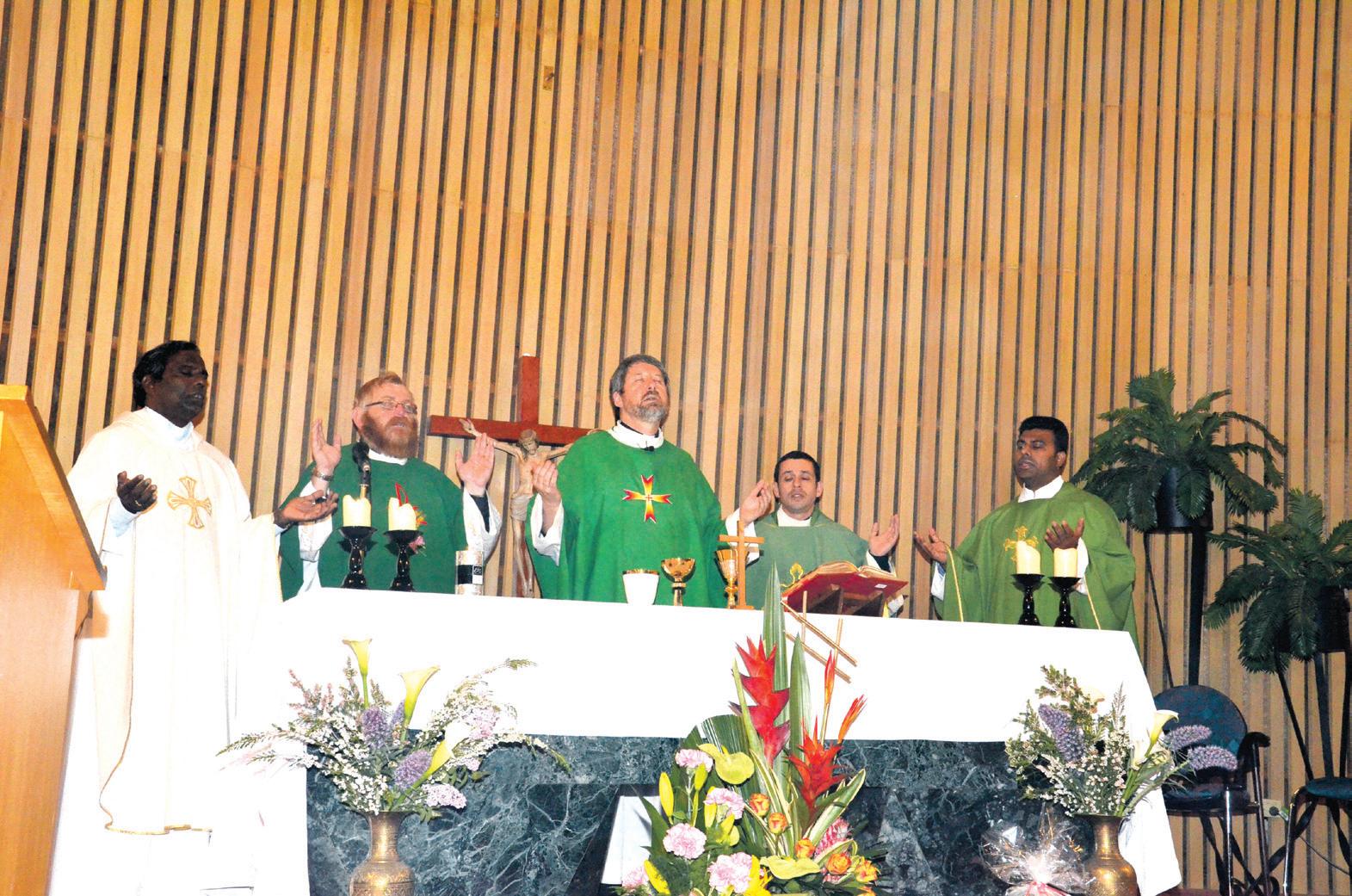
Fr. Robin celebrated a welcoming liturgy and gave a beautiful sharing about the Relic and the life of St Francis Xavier thereby linking the Saint to our times and this Year of the
Grace. 700 people of different communities including members of Goan associations attended this Eucharistic celebration which was followed by veneration of the Relic.
Generally the feeling was one of gratitude for the presence of the Relic and the work involved in bringing the Relic to Australia. One of the attendees noted, “We were grateful to be able to spend time in the presence of the Relic of St. Francis Xavier. The experience enabled us to consider prayerfully the great sacrifice he made to spread the faith and prompted us to consider our role and responsibility in sharing this great gift of God”.
It was rather special for all in the community to be able to view the relic closely and thanked the Konkanni Cultural & Heritage Inc. for making this possible – in particular Mario Carvalho and the organising committee Jude and Saroj Desa, Vernon and Corryne Da Gama, Titus andUrsula Fernandes, Simon and
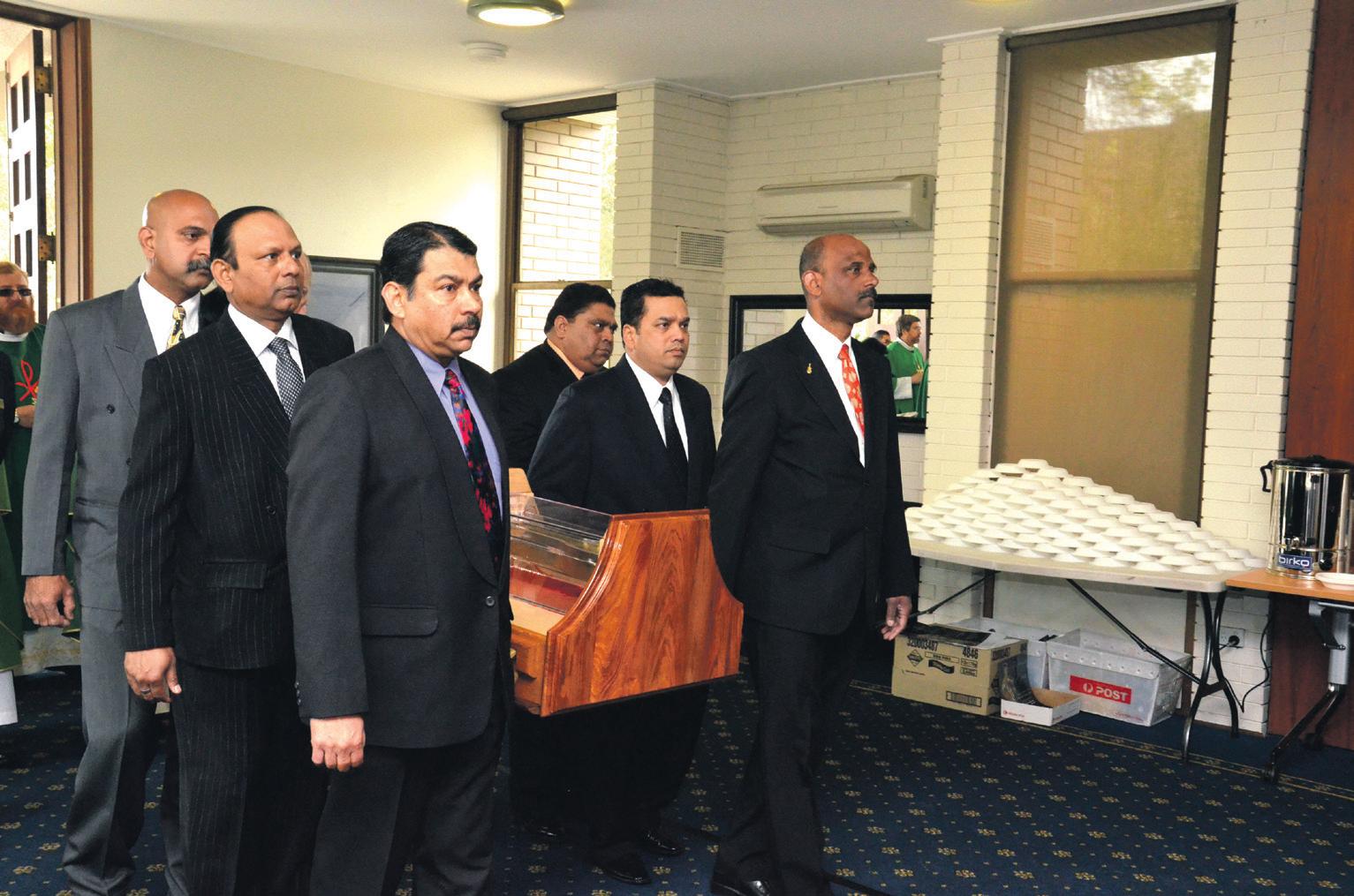
Nancy Mendonce, Royden and Lidia Rodrigues, and Cherylanne Carvalho, who personally thanked the Priests, the choir, Archdiocese of Evangelisation, Richard, Monash University, the sponsors, the ushers and others who helped in this great Eucharistic celebration.
Many people commented afterwards how special the evening was and how they experienced the grace and blessing of Almighty God through the life and ministry of St Francis Xavier.
The Relic had a great reception everywhere in Australia.
History
Centuries ago when Goa was under the Portuguese rule, Sambhaji, the Maratha chieftain from North attacked Goa and was all set to conquer the land. The then Portuguese Governor is chronicled to have visited Old Goa and prayed to St. Francis Xavier in the night, and is also supposed to have opened the coffin and picked up the saint’s sceptre.
The next morning, Sambhaji withdrew from Goa and rushed back to protect his own land which was under attack on its Northern border from the Moghal forces. This change of scenario was attributed to St Francis Xavier’s intervention, and since then he has been considered as the saviour and protector of Goa. Probably that is why he is called ‘Goencho Saib” (The man from Goa)
The novena of the feast of St. Francis Xavier during November and December is indeed a revelation to understand how much Goans venerate this saint. Not only Catholics, but all faiths including Hindus and Muslims visit Old Goa to pay obeisance to the Saint in significant numbers. The irony is that St. Francis Xavier who has been installed as the Patron of the missions, was never the Patron Saint of Goa. However, Goans believe that he is their Patron who looks after them and protects them from all evil.
NOVEMBER 2012 49 INDIAN LINK
People lined up in sombre reverence to touch the casket which housed the relic, seeking the Saint’s blessings and intercession
The irony is that St. Francis Xavier who has been installed as the Patron of the missions, was never the Patron Saint of Goa
The St. Francis Xavier relics at the Chapel of Monash University, Melbourne
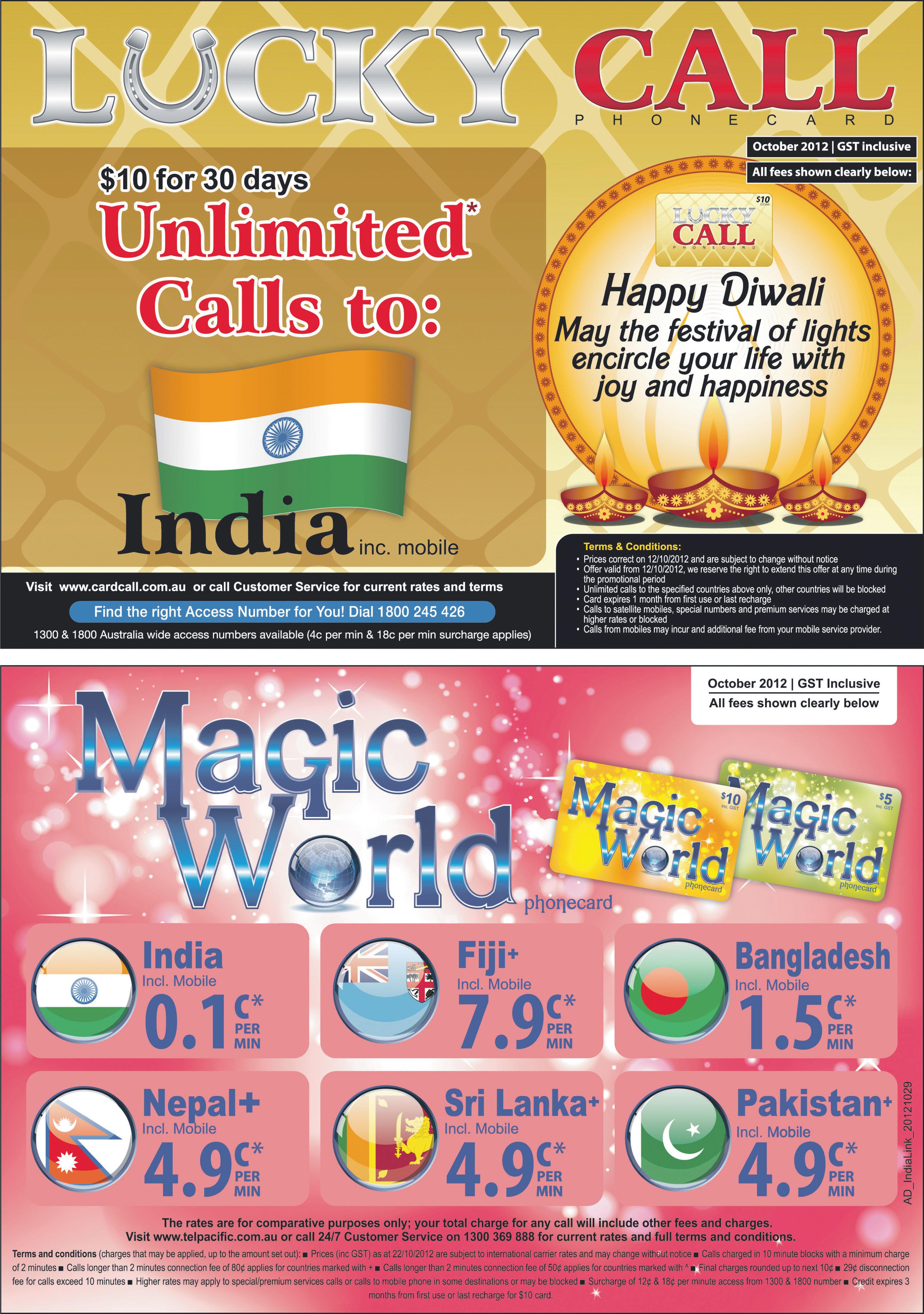
50 NOVEMBER 2012 www.indianlink.com.au


NOVEMBER 2012 51 INDIAN LINK
SEEKING GROOMS

m AT Rimoni A l S SEEKING BRIDES
Seeking suitable match (from Australia, never married) for Hindu girl 34 years, Chartered Accountant (non-veg), living in Australia over 25 years, with eastern and western family values. Please email with all details on ganesh2011v@gmail.com
Punjabi groom sought for beautiful Hindu Punjabi girl, 40 years, 5’4” height, Australian citizen, divorced (no kids) and holding teaching qualifications (taught in Australian and UK schools). Interest invited from qualified boys settled in Australia. Please contact girl’s brother on 0406 948 892. Match required for my sister, 5’2”, 34 years, never married, beautiful, slim, fair complexion, double degree holder, and Aust citizen, working in family business. We are a Punjabi Khatri family, settled in Melb. Caste no bar. Please send bio data and photo to matri@hotmail.co.uk
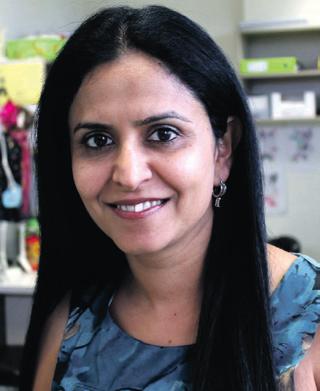
Parents seeking match for Australian-born (1975) good looking Punjabi girl, medical professional working in SA. Prefer Australian citizen or long-settled residents with good profession. Serious proposal only contact mandy_sing@hotmail.com
Well educated Punjabi family seeks professionally qualified well settled match for their Australian citizen daughter, 27 years, 5’ 4”, fair, slim, traditional Indian/Western values, highly educated, Master of Teaching and MBA from Australian universities. Working as project officer in well reputed company. Please email particulars with recent picture to schanderchopra@hotmail. com or call 02 9760 1832 / 0431 289 442.

Parents seeking match for son, Gujarati, Australian citizen, 37, 5’8”, divorced, no children, non-smoker, vegetarian, B.Bus & B.Ec, Accountant.
Contact 0413 813 888 or OS78@live.com.au


Hindu gujjar boy, 32, Australian Permanent Resident, working as Assistant House Keeping manager in Sydney, regular job in 4-star hotel, earning $50,000 per annum, divorced. Reputed family in India. Looking for qualified, smart, sweet natured, down to earth girl.
Contact 0431 326 292.
Seeking tertiary qualified Hindu girl below 25 years, for boy with BA Acc. Hon degree, non smoker, non drinker, stable job with strong values and well settled family in Australia. Preferred height, 5’4” and above with strong values. Please send full details to newrishta@y7mail.com
Seeking tertiary qualified Hindu girl, below 25 years, for boy with BA Acc.Hon degree, non smoker, non drinker, stable job with strong values and well settled family in Australia. Preferred height 5’4” and above, with strong values. Please send full details to newrishta@y7mail.com
Hindu gujjar boy, 32, Australian Permanent Resident, working as Assistant House Keeping manager in Sydney, regular job in 4-star hotel, earning $50,000 per annum, divorced. Reputed family in India. Looking for qualified, smart, sweet natured, down to earth girl.
Contact 0431 326 292 or email baba_ankur@yahoo.com
52 NOVEMBER 2012 www.indianlink.com.au Dr. Ina Takkar Dr. Lutfun Quddus Doctors in Glen Waverley 03 9802 8155 We can consult in Hindi, Punjabi, Persian & Bengali. Open 7 days - Extended hours Dr Ina Takkar MBBS FRACGP consults in Hindi, Punjabi. Dr Lutfun Quddus MBBS, FRACGP & FRNZCGP (consults in Hindi, Punjabi, Persian & Bengali) 370 Blackburn Rd, Glen Waverley, 3150 Pregnancy care • Fertility management Children’s care including vaccinations • Employment assessments & taxi medicals Employment • Family Medicine • Men’s health • Mental health We offer: All patients welcome




NOVEMBER 2012 53 INDIAN LINK Salmat is a leader in customer communication solutions and we are looking for motivated Sales Representatives! 3 Fantastic earning capacity and incentives 3 Any age group, any gender! 3 No prior experience or qualifications required 3 Full product information sessions 3 Flexible work hours – no early mornings! 3 Work in a fun sales environment 3 Immediate start available! Looking for work? Want to make some dollars? To attend an information session please call Aysha Izzet on 0458 430 719 or email ayse.izzet@salmat.com.au salmat
Main meanders
 By gEoRgE THAKuR
By gEoRgE THAKuR
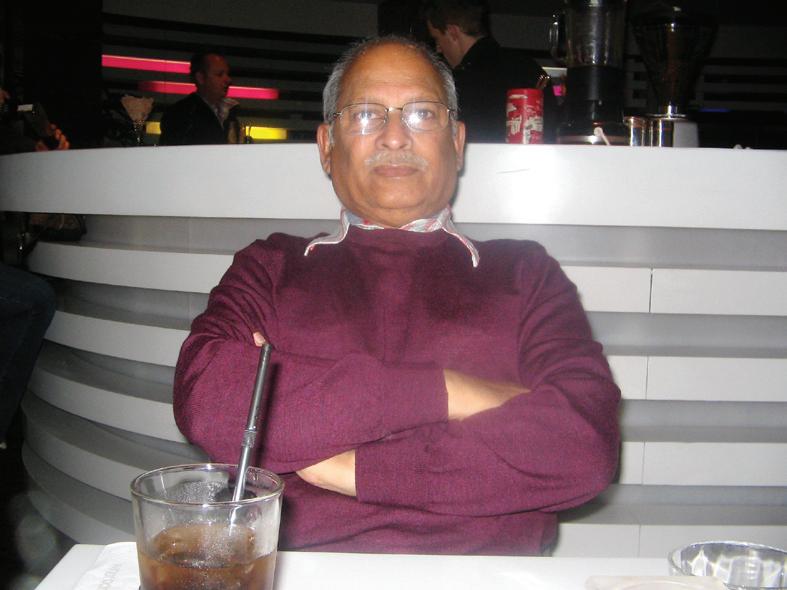
rushed to occupy
presented by a fourth generation glass maker of Würzburg who mesmerised us at the Panorama Bar; while the Brilliant now moved on. Two hours later, the end of the demonstration synchronised with our sailing into Miltenberg, on the ‘left knee’ between the Spessart and Odenwald ranges on the Main riverbed. Inundated with historical statues and architectural intricacies, a comprehensive tour of this tiny city, including souvenir and glass buying, and even tasting black-sugared coffee that Odenwald is famous for, took us two hours. The population is a few hundred thousand and the Miltenberg cathedral is mammoth, fort-like and high-standing. This also happens to be the birthplace of the famed Messerschmitt Aircraft that harassed Allied Forces and bombed London during WWII. In contrast, the extra-amiable population of today goes out of its way to prove to visitors that the infamous War was neither initiated nor perpetuated by them.
On returning for lunch, we sailed toward Wertheim, located on the delta of the Tauber that flows into the River Main. The most northerly town in the state of Baden-Württemberg, its first occupants arrived in the 7th century and settled in Kreutzwertheim, now relatively an insignificant village. In the 12th century, the noble family adopted ‘Wertheim’ as their name.
Back on the Brilliant, Nevena detailed the programme for the next day. After-dinner entertainment was the everpopular Tambola, played to a background of soft music by Karol, and the earnings of which were invested in prizes from the Curios and Dresses shop on board. The cocktail of the evening was Bloody Mary, Bloody Hot Mary, or Bloody Very Hot Mary, and the non-alcoholic was Virgin Pina Colada.
After breakfast the following day, Nora began a talk about the Rhine-Main Danube Canal, a short stretch on which we
were to float. We indulged in a Bavarian ‘Frühshoppen’ brunch of pea soup, a dozen varieties of processed meats, famed German braun brot, German cheeses, cakes, various flavours of ice cream concocted in the kitchen of the Brilliant, and fruit. The City of Bamberg, derived from the House of Babenberg, was yet another example of architectural wonders, cobblestone streets, very few cars, more bicycles, and friendly locals, who are used to good-for-business visitors these boatels bring forth regularly. Bamberg is one of a few cities that was not destroyed in the war, thanks to its artillery factory that shot down ill-informed Allied planes at the onset of the war. Bamberg is home to some 7000 foreigners, of which nearly 5000+ are US military personnel and their families, hence English is the second language. In 1017, Henry II founded the Michaelsberg Abbey on Mount St. Michaels, which is visible for miles. Nearly all Abbey possessions; by now antique and quite valuable, were bequeathed by Cunigunde, Henry’s wife. Since then, therefore, Cunigunde has been the most prominent choice of name for little girls in the region. Both Cunigunde and Henry are buried in the Abbey. From this remote region, Rose bought four beautiful, colourful dresses of fine material, created typically for European markets and interestingly, all four were made in India!
Nürnberg (Nuremberg), a city of 3.5 million, boasts an extraordinary mixture of traditional and modern life. The relics of a thousand-year-old history are preserved in this second largest city and cultural/ commercial hub of Bavaria. In recent times, however, it has primarily been known as the centre where WWII Nazi perpetrators were tried for crimes against humanity. It rained, so we were only driven past the fort and other salient features. The Courthouse is a massive semicircular, four-storied building, in which Room 600 in the middle of the top floor was where the Wartime Tribunal Judges tried only those who contributed most to the Third Reich. A nearby three-storey building is a museum that displays thousands of wallsized photographs with audio of the atrocities committed by the Nazis. Nearby in a square mile area stands the US Military
Hospital, where casualties of the Iraq and Afghanistan wars are flown in for treatment.
The bicycle culture is rampant here too. Kurt, our guide, punned that the colour red on nominated bicycle paths is actually the blood of visitors who would not respect the endemic bicycle-loving culture.
Kurt claimed that all gentlemen in Germany originate from Fürtheim, a smaller city 30miles north where, just by a coincidence, is where Kurt hails from. He related that there exists an unexplained cultural animosity between the Nürnbergers and the Fürtheimers. Hence, the Fürtheimers support any and all soccer teams that play against Nürnberg, besides other competitions. To make a point, he punned that while the motor registration in Nuremberg begins with NU, the same in Fürtheim begins with FU.
Nürnberg has primarily been known as the centre where WWII Nazi perpetrators were tried for crimes against humanity


From this remote region, Rose bought four beautiful, colourful dresses of fine material created typically for European markets and interestingly, all four were made in India!

54 NOVEMBER 2012 holi DAy
The Brilliant continues along the Main River to discover more about this historically and architecturally remarkable town
A privately owned building in Bamberg City displays centuries old frescoes. The bridge in the background is a replacement of an old bridge that was demolished by Allied forces in WWll.
The WWll Courthouse in Nuremberg.
A gate over the river that separates the old part of Bamberg with the new
A tenth century fresco on a Nuremberg city building facade.


NOVEMBER 2012 55 INDIAN LINK
Luscious laddoos

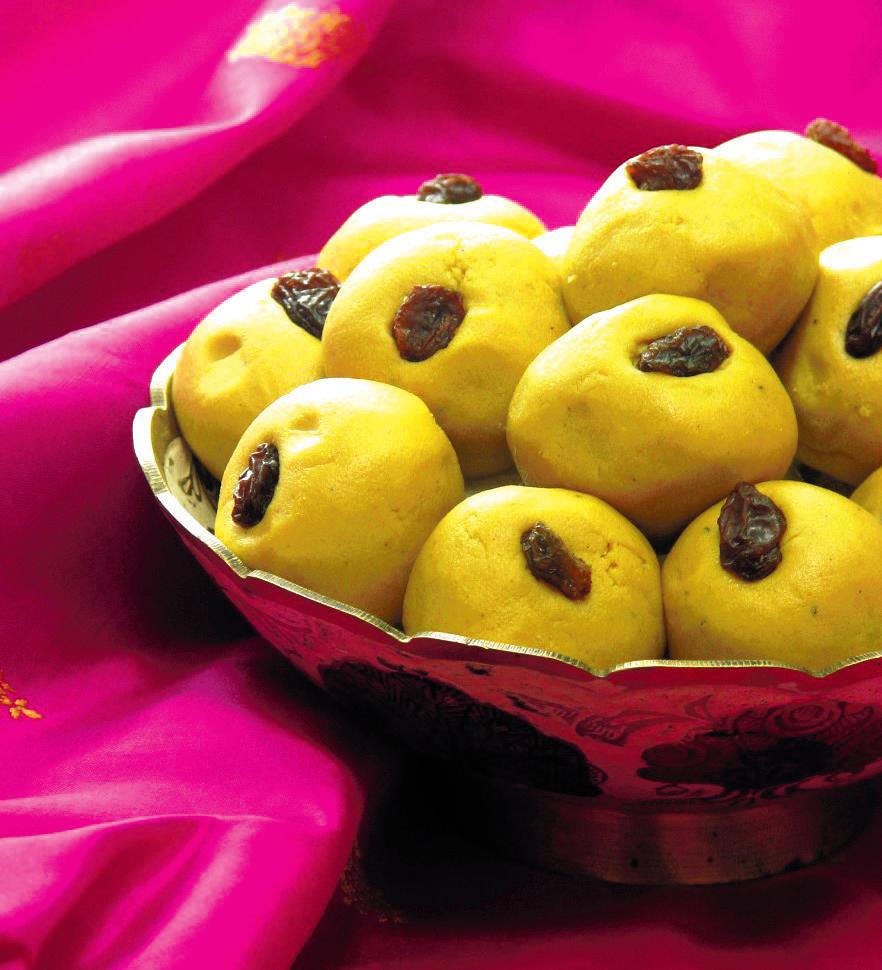
These sweet round treats can tickle your tastebuds and bring back memories of festive fun
Doodh Peda
This recipe seems deceptively easy, until you try it. Bet you, you will have to give it at least a couple of gos till you get it right.
2 cups milk powder
don’t we love Diwali and the oodles of festive food that we allow ourselves to indulge in to give true credence to the celebrations. But among the variety of savoury and sweet food, the hardest to resist would be the laddoos, sweet round balls of surprising variety, created lovingly with the finest of ingredients. I have childhood memories of Milkmaid coconut laddoos from a TV ad – they looked so easy to make and so delectable – everyone I knew tried making them, even the boys. Laddoos bring a touch of the traditional to one’s festive celebrations, that are reminiscent of happy, carefree times. And so this column is dedicated to laddoos, those old-fashioned favourites that are seeing a resurgence thanks perhaps to comeback star Sridevi, whose beautiful long hands made so many of them in her recent hit film!
Rava Laddoo

Growing up in the south of India, rava laddoos were a favourite ‘festival’ delicacy. And because I liked them during non-festival seasons as well, my mum learned how to make them, just for me. I got this simple recipe from her.

1 cup rava (sooji or semolina)
3/4 cup sugar
¾ cup water
3-4 tbsps ghee
3 tbsp cashewnut pieces
1 tsp cardamom powder
2 tbsp raisins
Roast the semolina in about 2 tbsp ghee till slightly brown. Fry cashewnuts and raisins separately, both in a little ghee. Drain on absorbent paper.
Mix the water and sugar to make a syrup. Bring to a boil. Keep stirring till a one-string consistency is reached. Lower heat and introduce the semolina. Keep stirring to prevent lumps from forming. Add in cashewnut pieces, raisins and cardamom powder. Mix well and take off heat. Cool till easy to handle. Then grease your palms and roll small handfuls of mixture into balls. Lay out single file to cool fully and harden. Store in an airtight container.
3 tbsp unsalted butter, softened
½ cup milk - sufficient to make a soft dough
½ cup sugar
½ cup water
3 or 4 numbers cardamom, crushed, and roughly powdered pistacchio nuts to decorate.
Mix butter and milk powder, and add milk to make a soft dough. Refrigerate for 15 minutes. Take out the dough and crumble it with your fingers breaking all the lumps. Make sugar syrup of one strand consistency; put in the crumbled dough and keep stirring till it cooks and starts leaving the sides of the pan. Remove from heat. While still slightly warm, make small balls and flatten slightly into peda shapes. Decorate with cardamom and pista powder on the top.
Microwave Doodh Peda
Ok, this is a cheat’s version, but hey, who has the time these days?
1 can condensed milk
1 cup whole milk powder
1 tbsp kewra essence or rose
essence
1/4 cup finely chopped pistachio
2 tbsp unsalted butter
Mix together the condensed milk, milk powder, melted butter and the essence in a microwavesafe dish. Microwave on high for four minutes. Remove and mix thoroughly. Put back in the microwave for another 2 minutes. Stir again and put back in the microwave further if needed – it should all come together in one mass. Remove and let cool briefly. Divide into balls of desired size. Sprinkle each with finely chopped pistachio.
Quickfix Malai Laddoo
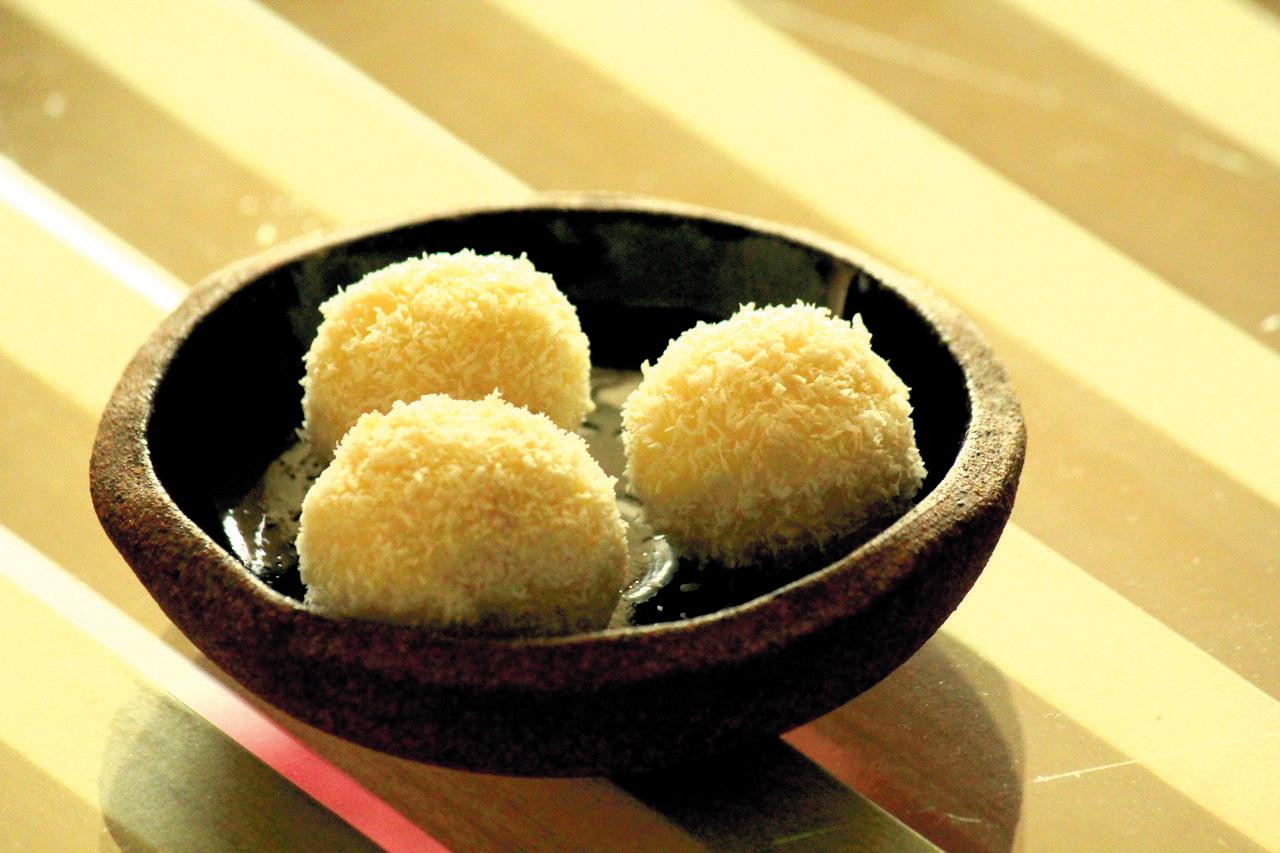
This one is another super-cheat variety, but it does involve a bit of stove-work, if that makes you feel good…
½ cup condensed milk
250 gms paneer (cottage cheese)
2-3 drops kewra essence
¼ tsp yellow colour

Mash paneer well. Add condensed milk and cook on low heat, stirring constantly. Cook till thickened and it all comes together, leaving the sides of the pan. Add essence and remove from flame. Pour onto a plate and let cool somewhat. When still slightly warm, roll into little laddoos. Sprinkle powdered cardamom on top to decorate if you wish.
By RAJNI ANANd LuTHRA Besan laddoo
Til Laddoo
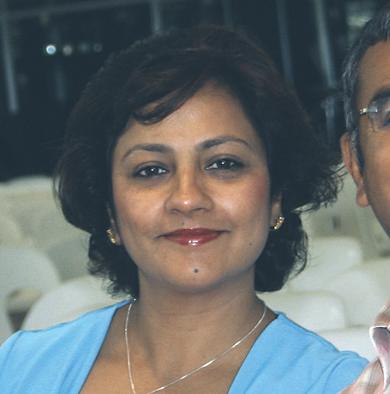
This recipe, passed on to me by a friend’s mum, I have yet to try.
1 cup til (sesame seeds)
3/4 cup sugar
¾ cup water
2 tbsps ghee
3 tbsp peanut pieces
3 tbsp pistachio pieces
1 tsp cardamom powder
2 tbsp raisins
Roast til seeds in ghee till slightly brown and set aside. Mix the water and sugar to make a syrup. Bring to a boil. Keep stirring till a onestring consistency is reached. Lower heat and introduce the til seeds. Keep stirring to prevent lumps from forming. Add in peanut and pistachio pieces, raisins and cardamom powder. Mix well and take off heat.
Cool till easy to handle. Then grease your palms and roll small handfuls of mixture into balls. Lay out single file to cool fully and harden. Store in an airtight container.
Chana Dal Pinni
I learnt this traditional delicacy from my mother-in-law, a fabulous cook. Pinnis are a winter favourite in Punjab, rich in warmthproducing ingredients. They are supposed to be large in size, but I prefer to make them into small balls. Most Punjabis will find the idea of ‘baby pinnis’ amusing, but I find them healthier (and more graceful!) to eat.
1 kg chana dal
3 ¾ litres milk
750 gms castor sugar
250-300 gms ghee
125 gms khaskhas
125 gms fresh grated coconut
100 gms sultanas or raisins
125 gms phool makhane
(optional)
100 gms melon seeds
(optional)
100 gms each cashewnuts, almonds and/or any other nuts, chopped.
Wash dal well and soak overnight in about 1 ¼ litres of milk. Grind to a coarse paste.
Put the remaining milk in a heavy-bottomed pan and add khaskhas and coconut. Bring to a boil and then keep stirring on low heat till the milk is completely reduced; cook till mixture is slightly browned. Remove from pan.
Add in the ghee and the ground dal and cook till the raw smell disappears and the dal begins to come together like a halwa. Add
56 NOVEMBER 2012
F oo D
Ravaladdoo Tilladdoo
Photo: Radhika Vasanth
Photo: Red Chillies
Photo: Red Chillies Photo: Aarti Garde
Sridevi’s laddoos in the recent hit English-Vinglish

the khaskhas-coconut mixture and sugar and cook till well-combined. Add in the nuts and raisins and mix well. Cool till easy to handle. Then grease your palms and roll small handfuls of mixture into balls. Lay out single file to cool fully and harden. Store in an airtight container.
Besan Laddoos
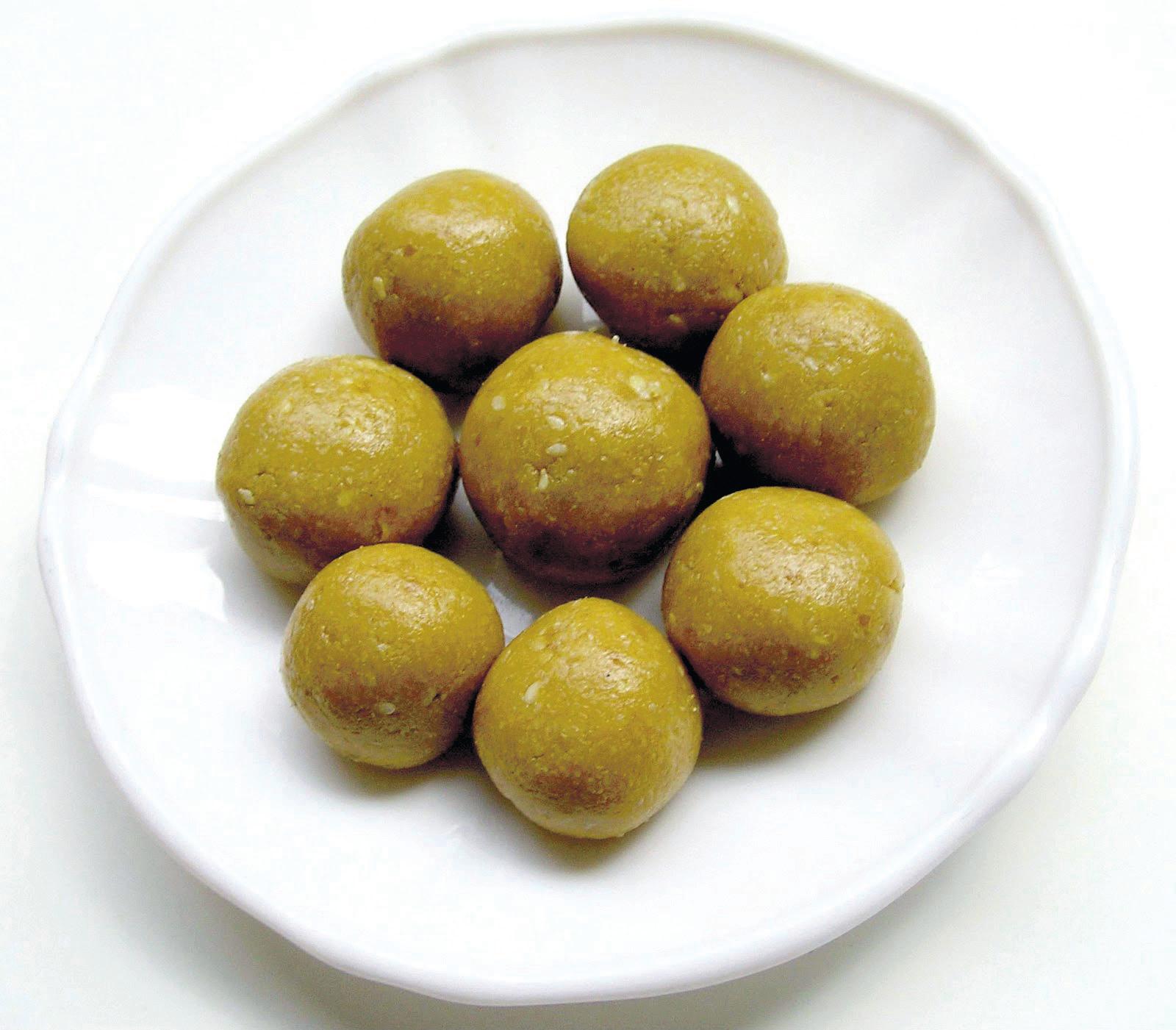



Another one I haven’t tried myself, only because my family will surely turn up their noses at it, but an old-fashioned traditional kind of recipe.
1 cup besan
¾ cup sugar

1/4 cup ghee
3 tbsp cashewnut pieces
1 tsp cardamom powder
2 tbsp raisins
1/4 cup milk
Fry cashewnuts and raisins separately, both in a little ghee. Drain on absorbent paper.
Heat the rest of the ghee and add sifted besan and roast till fragrant and slightly golden brown. Introduce sugar and stir continuously.
When mixed in well, add cardamom cashewnut pieces, raisins and cardamom powder. Keep stirring. Now add milk, a little at a time, till it all starts to glisten.
Tilladdoo

When it all comes together as one mass, take off heat. Cool till easy to handle. Then grease your palms and roll small handfuls of mixture into balls. Lay out single file to cool fully. Decorate with fresh grated coconut if you like.
Coconut Laddoos
This recipe was shared by a close friend Shanti, who gently chided me when I told her I was going to make Milkmaid laddoos like I saw in that childhood TV ad. Grow up, she said, and try the real thing. And then proceeded to tell me she uses evaporated milk instead of boiling real milk down. Ha!
2 1/2 cups fresh grated coconut
3/4 cup sugar
2 tsp powdered cardamom
3-4 cardamom pods
2 cups evaporated milk
pods. Bring to a near boil and add in the sugar. Mix till dissolved and then turn down heat. Introduce coconut. Continue stirring on low heat, till milk all but dries up. When it starts to come away from the sides, put in cardamom powder and continue stirring, but make sure not to dry it up too much. A good way to know if it is done, is to take a small handful and try to shape into a ball. If it sticks to your palms, you need to cook it some more. Take off heat and let cool somewhat. Shape into laddoos while still warm, and allow to cool and harden.
NOVEMBER 2012 57
Coconut laddoo
Photo:MadhaviMadhurakavi


58 NOVEMBER 2012 www.indianlink.com.au
HALWAI / SWEET MAKERS REQUIRED


SYDNEY AREA

MUST BE FULLY EXPERIENCED GOOD PACKAGE AVAILABLE CAN SPONSOR WITH SPONSORSHIP APPROVALS ALREADY GRANTED
PLEASE CONTACT 0450836377




NOVEMBER 2012 59 INDIAN LINK
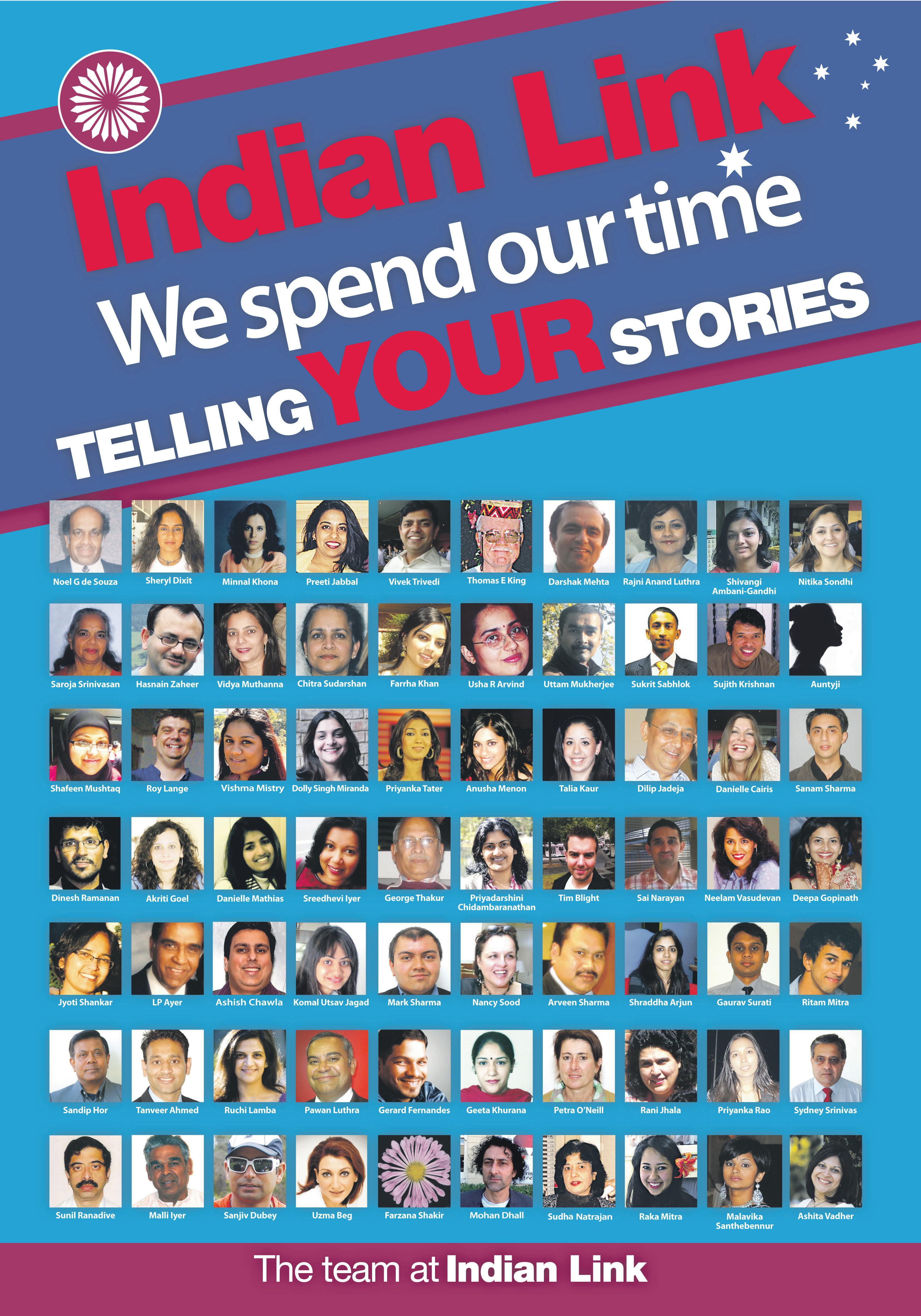




NOVEMBER 2012 61 INDIAN LINK Register you interest today: Mr Sanjay Agrawal Contact number: 03 9413 1481, Mobile number: 0402 023 502 Email: sanjay.agrawal@unitedpetroleum.com.au Unit 36, 62 Hume HWY (Cnr Knight Street), Lansvale NSW 2166 Australia’s leading Shopfitting and Shelving Supplier Visit our 300sqm Showroom! Delivery Australia Wide! Unbeatable Price! Supply to many Indian Supermarkets, Grocery, Convenience Store, Bargain Gift and Variety Stores and many more...
TAROT



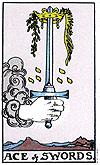



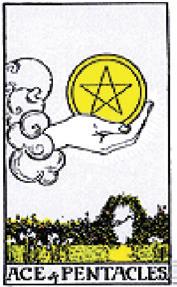


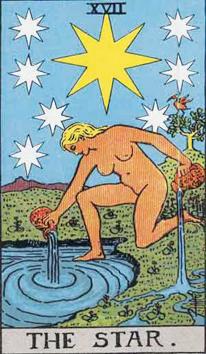
ARIEs March 21 - April 19
The cards this month indicate you will be in a very happy and calm mood, and there is a lot to be happy about. The new burst of energy and happiness around you is because of your positive thoughts and feelings. Work, finances and love seem to running smoothly. With the exception of delays relating to that promotion you are waiting to hear about. There will be good news mid-month, you may need to negotiate for a higher salary.

TAuRus April 20 - May 20
The cards this month indicate a time for celebrations and spending. There have been some major breakthroughs with regards to your business. There are a few stresses but you need to allow things to flow, as there are some positive changes on the way. Look closely at your diet and make some changes to what you are eating. There may be some food intolerances issues which may cause your stomach to bloat and make you feel uncomfortable.
GEMINI May 21 - June 20
predictions for NOVEMBER 2012
 By NANcy JADE ALTHEA www.nancysood.com
By NANcy JADE ALTHEA www.nancysood.com
LIBRA sep 23 - oct 22
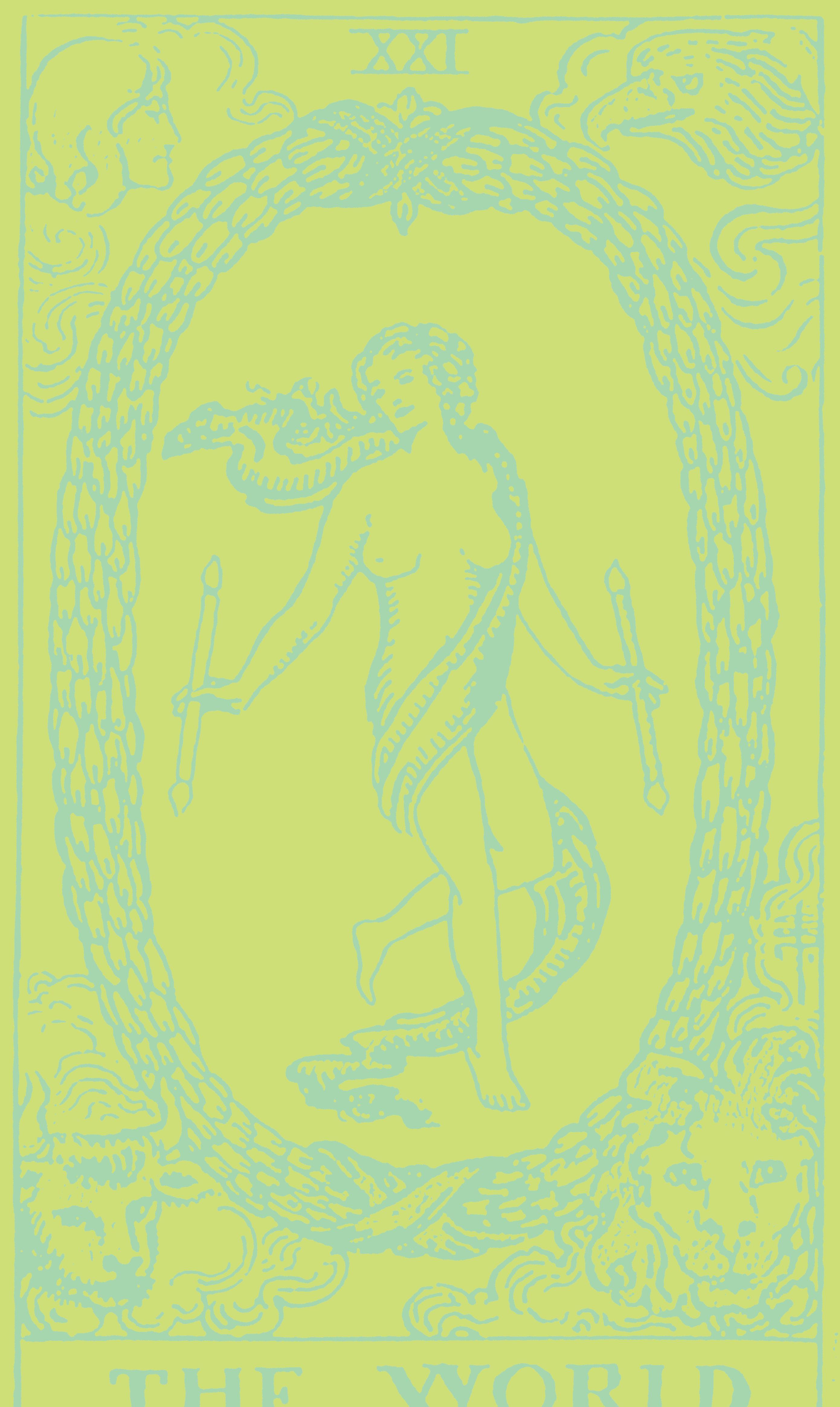
This month you will be looking after your body, mind and soul. You may look at starting a new exercise regime. You have been keeping very active lately, but have not been looking after your mind. You are thinking too much about the past. Let it all go and live for today. You are upsetting yourself by hanging on to those memories. There is a person who will be coming into your life to offer some wise words.
scORpIO oct 23 - nov 21
This month there are some difficult times, as someone in the family is not feeling too well. There will be some tests carried out and a need for a change in their care plan. Look forward to good news around your home, as you will be thinking of purchasing some land. Read all paperwork carefully. You are also looking at changing your work or business. Look at expanding in other cities too, and go forward with confidence.
sAGITTARIus nov 22 - dec 21
This month you will look at moving from your current house. You have wanted to make a change for a while. This is the time to move forward into a new future. You are bursting with ideas and energy, and life now needs to move into a new direction. Leave behind the old emotional pain and move on. The colour red is very significant. You may think of joining an evening class to pursue a hobby, maybe dancing?
cANcER June 21 - July 20
This month there is a feeling of being left a little unsure of what you want to do. The cards indicate that you are battling with decisions and there are no solutions coming to mind right now. Take time out and the right answer will come. Make sure you do not rush into anything or you will regret your actions. You may need to eat humble pie and apologise to a colleague or friend for being rather curt lately.
LEO July 21 - Aug 22
This month could see you making some major changes in terms of your attitude towards your work and home life. Lately you have been working at all hours and not giving your loved ones your time. There are some exciting family parties. This is the time to really relax, take time out and leave work behind. The weekends will be packed with different invitations. Try to avoid too much oily and dairy food. They will be hard to digest.
VIRGO Aug 23 - sep 22
Some things have really upset you lately and you are not able to move forward. There will be news about a new opportunity. You may also need to travel at short notice. Your lover may not be giving you what you need, so try and speak to them. Life will be a little up and down, but take some time out for yourself. You have been worrying about everything and everyone. Now’s the time to have fun.
There is a feeling of restlessness this month. The cards indicate a time when you will want to take some major decisions about what you want to do. There may be a possibility that your spouse may want a child and you are not sure. If you have recently met a new lover, be careful not to get carried away. You are feeling vulnerable and need to stand firm about what you want. Keep clear quartz for luck.
cApRIcORN dec 22 - Jan 19
This month you will be working hard to establish your position in the world. You will be feeling a little stressed out with how things have gone for you of late. There will be good news around work, and your love life looks as if it is about to take a huge turn for the better. The initial P is very significant in your life. Have fun and let your hair down. Start networking and meeting new people.
AquARIus Jan 20 - feb 18
This month you will have a tough time with your loved one. You may need to have a heart-to-heart talk to solve misunderstandings. You will be under pressure from work, as lately you have not been able to concentrate properly. Let your mind be cool and take up deep breathing exercises. There will be a friend who needs your help. Try not to get too involved as things are more complicated than you are aware of.
pIscEs feb 19 - March 20
This month your mind will be firmly focused on making money, and taking a long break somewhere. You want to treat your loved one. Life has been very hectic lately and you have been overdoing things. You also have knee and leg pains. Take yoga classes as they will do you a world of good. You also need to start taking care of your bones and look at taking supplements for bone health. Have your blood pressure checked.
STARS F o RETELL
Astute Plus Tax Accountants
Accountants and tax agent
For a reliable service with a Reasonable charge
Compay/trust/ super fund formation
Indivudual tax returns
Financial statements
Business tax returns
Maintain your accounts in myob Business activity statements
Payroll / payg/ias
MeLBOURNe: RANJINI 0425 744 220 /03 9550 1857 Suite 28, 21 Aristoc Rd Glen Waverly, Vic 3150 email: ranjini_astuteplus@yahoo.com.au http://astuteplus.webs.com


SYdNeY: JAYAkUMAR (Admin officer) Mobile: 0435139079 No 9 Novara close, Prestons NSW 2170 email: jugl23@yahoo.co.uk

NOVEMBER 2012 63
RANJINI SIRIRATNAM
INDIAN LINK


64 NOVEMBER 2012 www.indianlink.com.au
Jab tak hai jaan
A bereaved Bollywood pays homage to exemplary filmmaker Yash Chopra
Daag, Kabhi Kabhie, Silsila, Lamhe, Chandni, Dil To Pagal Hai, VeerZaara….the list goes on and each of these blockbusters is a tribute to the legacy of late film-maker, producer and director Yash Chopra.
After an illustrious career spanning over 50 years in Bollywood, the 80-year-old doyen of the Hindi film industry passed away on October 21, following multiple organ failure brought about after an attack of dengue fever.
The news brought a wave of shock to Bollywood, as many of its most prominent luminaries rushed to pay respects to the person who was undoubtedly one of Bollywood’s most revered and respected filmmakers. For someone who had been present looking hale and hearty at the 70th birthday celebrations of megastar Amitabh Bachchan a few weeks ago, it was hard to comprehend how the veteran filmmaker could have suddenly succumbed to this illness.
The final journey
But it was not just Bollywood who mourned the passing of this undoubtedly great director and producer. From politicians to the public, tributes poured in for the man who had created memorable films to entertain the masses and had made an indelible mark on the Indian film industry.
After his demise, Yash Chopra’s body was taken to his Juhu bungalow in Mumbai for a short while and later taken to Yash Raj Studios to allow his staff and the public to pay their last respects to the late filmmaker. A large black and white picture of Chopra was placed alongside his body, decorated with white flowers. Among close family members present at the studios were his son Uday Chopra, seen supporting his mother Pamela.
Thousands thronged to the studio to catch a glimpse of the man whose films are classics of a genre.
It is testimony to the greatness of Yash Chopra that the entire film industry turned up to pay homage, with his closest family and friends accompanying his body to the crematorium where his last rites were performed.
A scintillating career
Yash Chopra was born in Lahore on September 27, 1932 and eventually came to Mumbai after Partition. In an interview some
days before he was hospitalised with dengue, Chopra said to Shah Rukh Khan, a star he had created, “My mother said do what your heart says. She gave me Rs.200 and said my blessings are with you. Go ahead and don’t worry.”
And that’s precisely what Chopra did when he came to Mumbai and took on the role as assistant to his late brother and filmmaker BR Chopra, to whom he gave credit in an interview before his death. “I’m sitting here just because of B.R. Chopra and no one else. I wanted to fly on my own wings,” he said in that interview.
A romantic soul
Known as the ‘King of Romance’ for his success in that genre, Chopra created memorable love stories in Daag, Kabhi Kabhie, Silsila, Chandni, Dil To Pagal Hai, and Veer Zaara. To keep up with evolving audiences, he adapted new trends in each era and made the most glamorous and trendy romances.
However, life wasn’t always as rosy as his romantic films. Films like Faasle (1985) and Vijay (1988) bombed in succession at the box office. But it wasn’t long before Chopra triumphed once again at the box office with Chandni, a
hardcore romantic film with nine songs.
Chopra knew how to keep up with the times, and instead of being caught in a warp, he began to cater to the increasingly savvy Gen Y audience. He launched Dil To Pagal Hai in 1997, a sleek, urban, musical romantic saga that reaped gold at the box office. The crossborder romantic flick Veer Zara (2004) came next, and the latest still-to-be-released venture Jab Tak Hai Jaan starring Katrina Kaif and Shah Rukh Khan was to be Chopra’s swansong.
But more than romance
However, Chopra’s oeuvre was not limited to just romance and relationships. In his five decadelong career, he experimented with all genres.
His first film Dhool Ka Phool in 1959 was the story of an illegitimate Hindu child being brought up by a Muslim. His next project, Dharamputra (1961) was another hard-hitting film on communal conflict, and was one of the first films to depict the Partition and Hindu fundamentalism. The film marked the debut of Shashi Kapoor in a full-fledged role and won the
National Award for Best Feature Film in Hindi.
A precedent-setter, Chopra’s 1965 critically successful drama Waqt pioneered the concept of multi-starters in Bollywood, while Ittefaq (1969) was a taut thriller, being the first Hindi film which did not have any songs or an interval.
Proving his versatility, Chopra on one hand directed intense dramas Deewar, Trishul, and Mashaal, while on the other he made family sagas like Parampara and thrillers like Kala Patthar and Darr Chopra’s movies were sometimes based on real life tragedies. The Dec 27, 1975, accident in a coal mine in Chasnala near Dhanbad inspired the multi-starrer intense drama, Kala Patthar starring Amitabh Bachchan, Shatrughan Sinha and Shashi Kapoor. Yet, Chopra was one of the few directors to make two superhit films simultaneously - action drama Deewar (1975) and crossgenerational romance Kabhi Kabhie (1976) - both proved his versatility and his hold on the pulse of audiences. But, like all legendary directors, it’s not just a couple of films that can sum up Chopra’s achievements. His run of successes has earned him a permanent and well-deserved spot in Bollywood’s annals of fame.
Yash Chopra’s style of filmmaking was unique because it crossed many genres and generations. He had the ability to bring across social and emotional messages in a manner that would appeal tremendously to his audience. With the use of romanticism, a message of moral responsibility, exotic locales and adept actors in directing over 22 films, he delivered entertaining and interesting movies through his 53 years in the industry.
Star maker
Punters watching the events unfold after Yash Chopra’s demise would note that stars Amitabh Bachchan and Shah Rukh Khan were prominent in their assistance to the grieving family. They were seen at the hospital and accompanying the body to its residence and for the final rites at the crematorium. Not surprising as both actors, and indeed many more, owed their success to this unique filmmaker.
Of all the many stars launched by Yash Chopra, the Big B and SRK are the greatest testimony to his star-making capabilities. Amitabh Bachchan owes his ‘angry young man’ avatar to Chopra, who
consolidated that image through Deewar. SRK, the self-proclaimed King of Bollywood had Chopra to bring out the best in romance in him; and it’s hard to forget Darr, which remains one of SRK’s biggest blockbusters to date. He can claim his almost obsessive romantic tag to the filmmaker. Chopra also made other remarkably successful stars like Parveen Babi, who defied the norm of the established Bollywood heroine in Deewar, a coup for Chopra and Babi. Juhi Chawla, Karishma Kapoor, Sridevi and Rishi Kapoor were only a few of the actors who benefitted tremendously from being a part of the Yash Chopra camp.
From Ashok Kumar to Mala Sinha to the current crop of feisty actors, Yash Chopra worked with them all. Not to mention screenwriters, playback singers, cinematographers and all the many, many people involved in the film industry, who pay homage to his memory.
Accolades aplenty
In his career, Chopra won many awards, including the prestigious Dadasaheb Phalke Award in 2001, six National Awards, 11 Filmfare Awards and was conferred the Padma Bhushan in 2005. But there was more. Many of Chopra’s romances were filmed in the beautiful alpine landscape of Switzerland. In fact, he shot so many times in Switzerland that a lake in the Alpenrausch, a favourite shooting spot of his, has been christened Chopra Lake. Not only that, he became the first recipient of the title of Ambassador of Interlaken, and a special Yash Chopra Suite and Yash Chopra Train were inaugurated in his honour in Interlaken in 2011.
The future
Yash Chopra’s new film Jab Tak Hai Jaan was to be his directorial swansong before retirement, but unfortunately his untimely demise prevented him from enjoying what seems to be its certain success. To be released auspiciously on Diwali, the romantic saga stars Shah Rukh Khan and Katrina Kaif.
The 43rd International Film Festival of India (IFFI) to begin on November 20 will also pay homage to this exemplary filmmaker through a cinematic tribute.
Yash Chopra is survived by wife Pamela and two sons – Aditya, a filmmaker and Uday, an actor.
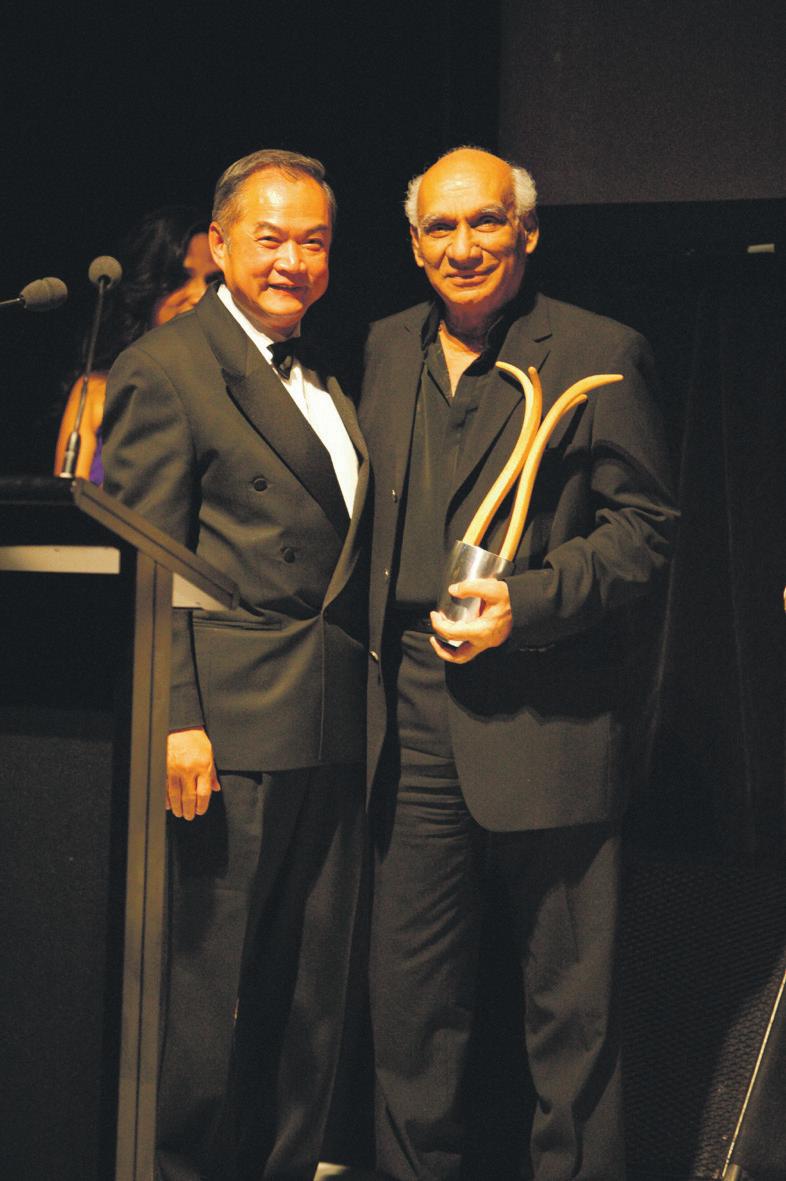
NOVEMBER 2012 65 INDIAN LINK
TR i
TE
B u
Melbourne visit 2006: Yash Chopra is honoured by Lord Mayor John So.
and happening in Bollywood
the Buzz
Karan’s work is his cause
Considering the racy pace at which Bollywood operates, it’s no wonder actors look forward to the occasional break from the industry. But not Karan Johar. The filmmaker candidly admits that he sleeps, eats, drinks and talks movies, and that he can’t think anything beyond celluloid.
“My work is my lifeline. My films move me and I don’t have a life besides my movies. They are my primary passion,” said Karan in an interview.
Karan gave a new definition to romance with his urbane, chic romantic comedy Kuch Kuch Hota Hai in 1998, following it with other films like Kal Ho Na Ho, but he admits that he doesn’t follow any trend.
“I am driven only by my instinct. I don’t go by what is happening around. If remakes are being made, that does not mean I will also make one. Or just because masala action films are working, does not mean I will make one. I make what I believe in and hope to achieve the best with it. I don’t follow a norm or go by trends. I make what motivates me,” he said.
And he realised a long-time dream of making a campus film with Student of the Year, which recently opened to mixed reactions.
Legacy of Laughs
The mortal remains of famous comedian, actor and satirist Jaspal Bhatti were consigned to flames at a cremation ground in Chandigarh recently. Bhatti died in a road accident near Punjab’s Nakodar town, 170 km from Chandigarh. Bhatti’s pyre was lit by his son Jasraj, who was injured in the accident, but was discharged from hospital without serious injury.
Hundreds of mourners from diverse fields attended the cremation. These included politicians, leading celebrities of the Punjabi film and theatre industry and scores of friends of Bhatti. Earlier, a large number of mourners visited his Sector 19 residence.
“The king of comedy has left everyone in tears. He did not deserve this,” one of his close associates said at the cremation ground.
Bhatti’s car rammed into a tree along the highway while he was on his way to Jalandhar early in the morning, to promote his latest film Power Cut. He was taken to hospital, but declared dead on arrival.
He sustained head injuries in the accident.
Jasraj and the film’s heroine Surilie Gautam and publicist Navneet Joshi were also injured, but not seriously.
Power Cut had been produced and directed by him, and was to launch his son Jasraj.
Bhatti was a popular face on television and in Bollywood films with his comedy shows and appearances. His TV shows Ulta-Pulta and Flop Show were popular entertainers in the late 1980s and 1990s. He also directed a film Mahaul Theek Hai, a satire on the police, administration and society, in 1999.
Bhatti, perhaps the most famous Sikh comedian, acted in several Bollywood films too. Bhatti is survived by wife Savita Bhatti, herself an actor, son Jasraj and daughter Raabiya. Fans and the Indian film industry paid rich tributes to the actor and comedian, who leaves behind a legacy of laughs. Rest in peace, Jaspal Bhatti.
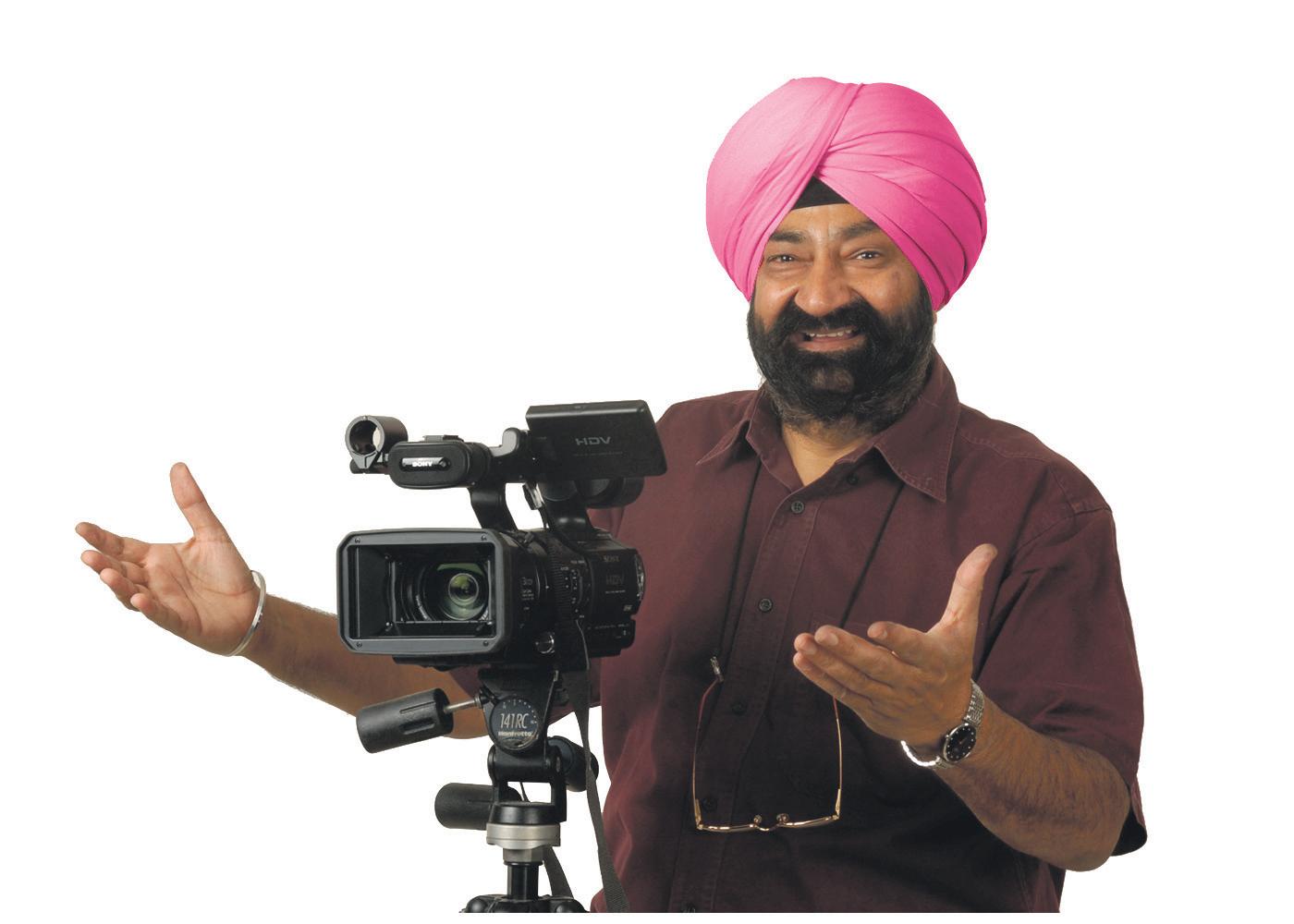
“Whatever I think of, I make. I wanted to make a campus film about friendship, so made Student of the Year. It was different for us because we worked with newcomers for the first time. The whole idea excited me, so I made the film. Shooting with newcomers was a different but not a difficult experience,” said the 40-year-old director. The young newcomers, Varun Dhawan,
GUESS WHO ?
Alia Bhatt and Siddharth Malhotra, did a commendable job, but it’s anyone’s guess how the film will do at the box office. Karan’s not worried, though. He fulfilled his wish of making a campus film, and he doesn’t know what’s next. Watch this space to find out about his next venture.

Grand premiere to remember Yash Chopra
Yash Chopra’s last directorial work Jab Tak Hai Jaan is set for a grand premiere as a tribute to the late filmmaker, and will be held on November 12, while the film itself releases on Diwali the next day.
“I want to give my husband an unforgettable farewell. Accordingly, we have decided to have a grand premiere for his ultimate film Jab Tak Hai Jaan, exactly the way he wanted it,” Yash Chopra’s wife Pam Chopra said in a statement. “This is a fitting tribute to a man who would have had it no other way. I have asked my sons Aditya and Uday to go ahead with all the preparations. This premiere is our way of celebrating his illustrious life, rather than mourning it,” she added.
The film features Shah Rukh Khan, Katrina Kaif and Anushka Sharma and Bollywood’s buzzing that it will be a box office superhit. A great way to farewell a great legend!
Hardcore masala is Bazmee’s best
Director Anees Bazmee, currently working on No Entry Mein Entry, promises that the new film will be a complete entertainer and a hardcore masala film.
“The kind of films that I have been making so far, you can call them full entertainers, hardcore masala films that are ‘paisa wasool’ like No Entry, Welcome, Singh Is Kinng, Ready. And No Entry... is just like them,” said Bazmee recently. “I feel that the script of the film is written beautifully and it will definitely turn out to be a good film”.
No Entry Mein Entry is the sequel to the 2005 hit film No Entry and will see Salman Khan, Anil Kapoor and Fardeen Khan reprising their roles.
Bazmee admits that the film is a biggie, with a large star cast and no less than ten heroines. Should be interesting to see how Bazmee deals with the heroine overload. Well, we’ll just have to wait and see.
Aashiqui 2’s in a hurry
Her first film is just out, but will she struggle, despite her pedigree? (Find
To complete shooting the film, that is, as they rush to make the early 2013 release date. Filmmaker Mohit Suri says the cast and crew of Aashiqui 2 will shoot without any break, non-stop till December. It’s a bit hard on the actors and crew, but for good reason, says Suri. Produced by
66 NOVEMBER 2012 www.indianlink.com.au
ABHILASHA SENGUPTA brings us up-to-date on what’s hot
ENTERTAINmENT
the answer under Caption Contest)
Jaspal Bhatti
Mahesh and Mukesh Bhatt, stars Shraddha Kapoor and Aditya Roy Kapoor.

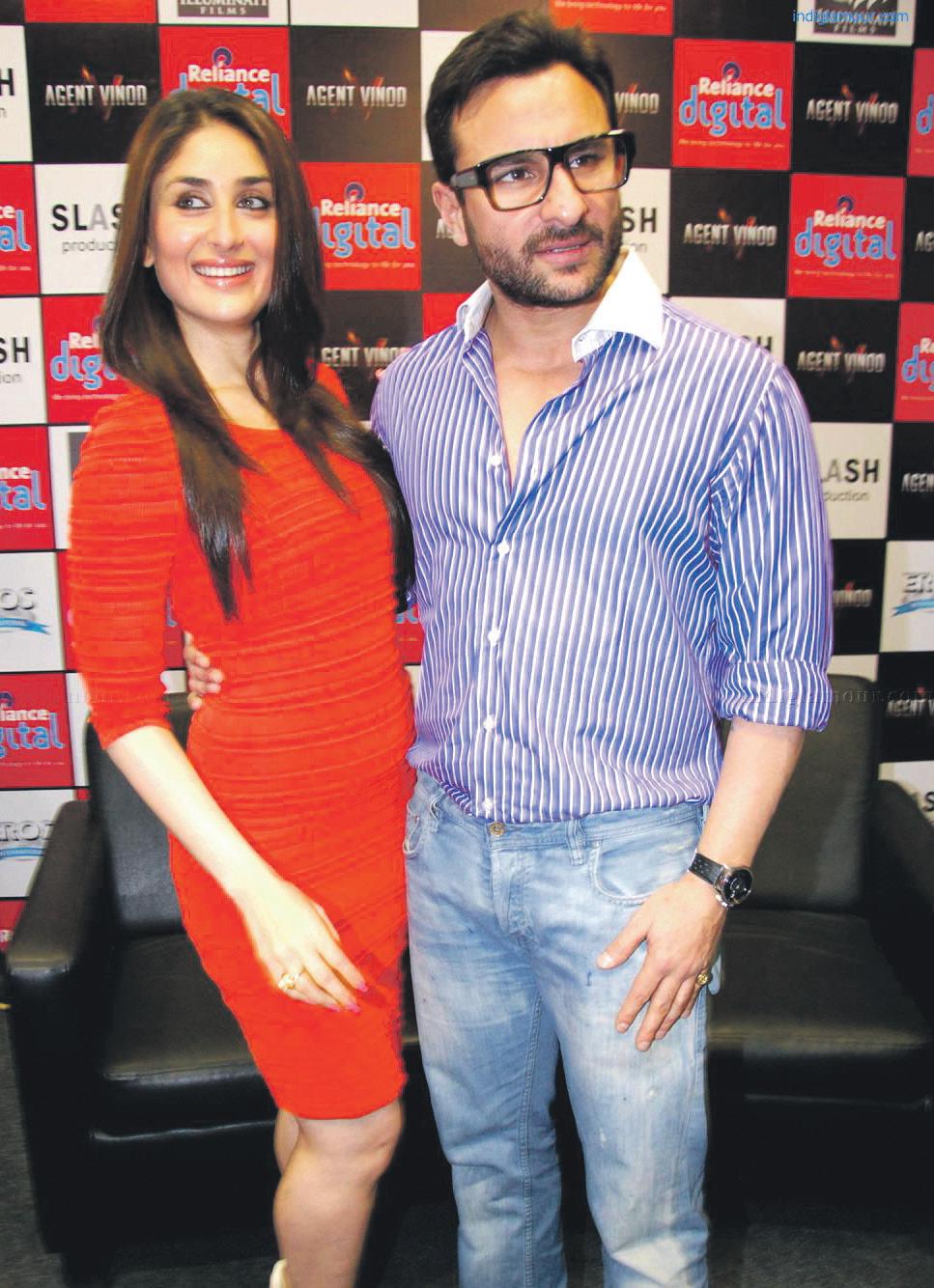
“Contrary to reports, Aashiqui 2 not a sequel to Aashiqui”, clarified Suri and added, “It’s a new story. The only similarity is the music and the love story. There are seven to eight songs in the film. It’s a musical.”
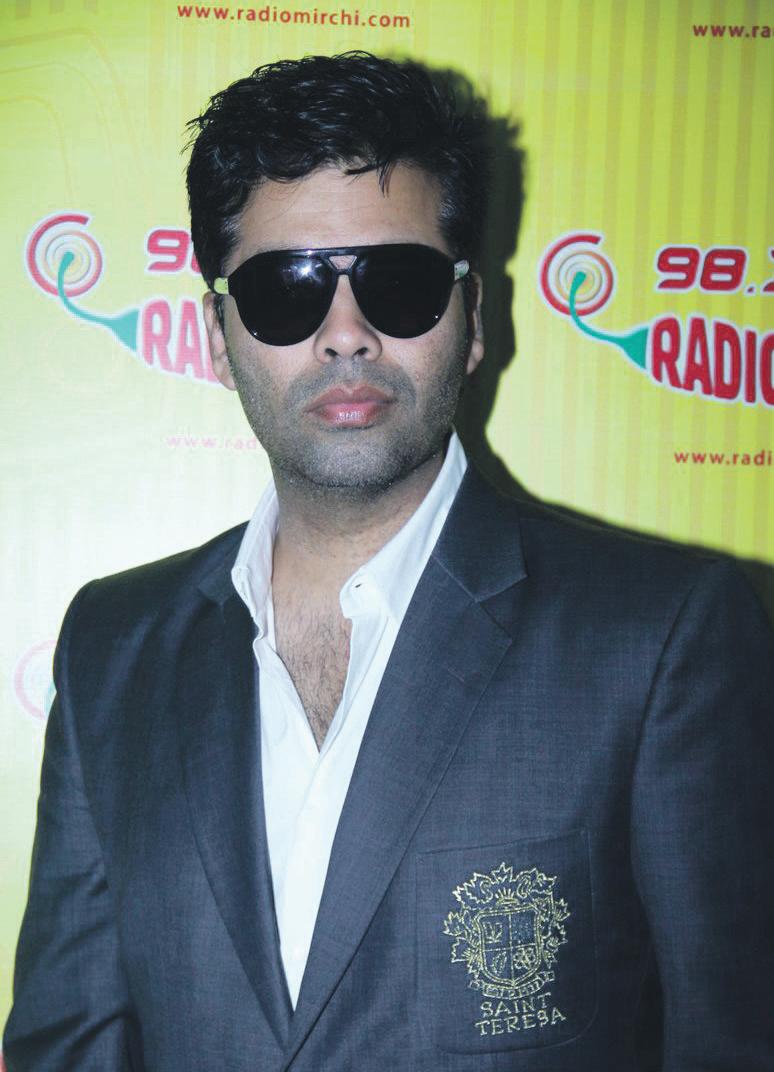
The original Aashiqui starring Rahul Roy and Anu Agarwal was directed by Mahesh Bhatt. It came out in 1990 and was not only a box office success, but all its songs, including chahiye and Nazar ke saamne jigar ke were chartbusters. Let’s hope 2 brings in the money too!
Jha to take up Satyagraha
He’s one of Bollywood’s most respected filmmaker, and finds inspiration from many different quarters, but it is India’s current state of affairs that has inspired Prakash Jha to make his next film, Satyagraha
“You must be eagerly waiting for the next film Satyagraha. The whole world is in the line of agitation; people are fed up of corruption, inflation, and mal-administration. Amidst these problems, beautiful stories are coming out. I am bonding these stories together to make Satyagraha. So, I always try to match up to your expectations,” the 60-year-old said, addressing reporters recently.
Jha’s latest film Chakravyuh released on Dusshera, deals with the Maoist issue in India and stars Arjun Rampal, Abhay Deol, Esha Gupta and Anjali Patil. Jha is happy with the kind of response the film is getting.
“The kinds of compliments we are getting are beyond our imagination. Javed Akhtar saab, Shabanaji (Azmi), Shekhar (Kapur), friends, critics, people (like the film). I am so touched that every time a show ends, I get a call telling me that people are clapping,” he said.
“So, no matter what our marketing, I feel the audience will now market it. According to some reports that have reached me, people have liked the film, they have been getting emotional and reacting. This is my biggest achievement and I feel this is both - my award and reward,” he added.
Looks like Bollywood’s taking the path of righteousness and social issues to the big screen.
Let’s hope these ground-breaking movies make a positive change.
Diverse India, Bollywood style
Bollywood is going pan-Indian. Punjabi mundas and kudis - the staple of so many movies - are making way for Marathi mulgis and Parsi dikras as Hindi films roll out a tapestry showcasing the diversity that is India.

From Parsi and Marathi to Gujarati and Bengali, filmmakers are bringing diverse cultures to the Hindi film firmament. And the credit for this versatility goes to changing tastes and mindsets of the viewers.
Sujoy Ghosh’s Kahaani is a case in
point. Made in Hindi, it had a strong Bengali flavour and was also shot in Kolkata, appealing to audiences so much so that it earned Rs.75 crore – almost 10 times more than its total cost of Rs.8 crore.
Lauding the new trend that he believes is a “great time for India cinema”, Ghosh said, “We make films with themes we are familiar with. For me, it was easy to write about Bengali culture, as I am a Bengali. Thanks to the audience, they are allowing us to experiment.”
Another small budget film, Vicky Donor, wove both Punjabi and Bengali cultures to show an interesting cultural contrast. And it worked.
A film’s success is estimated on the basis of its box-office earnings and this Rs.5 crore project, made by director Shoojit Sircar on an unconventional theme of sperm donation, got the thumbs up from viewers, earning Rs.45 crore.
It is a win-win situation for all - the viewer gets fresh stories to watch, directors are able to explore and experiment, and producers are laughing all the way to the bank.
Said an excited Sircar, “This is a new trend, which is very fascinating; and the best part is that these films are accepted by the audience. I really appreciate this era. This is a tribute to Indian cinema.”
Sanjay Leela Bhansali offered insights into the Gujarati community Hum Dil De Chuke Sanam, Catholics in Khamoshi - The Musical, Anglo Indians in Black and Bengalis in Devdas. His sister Bela focussed on the Parsi community in her debut film Shirin Farhad Ki Toh Nikal Padi and it was satisfactory, businesswise.
“The Parsi community talk is very bindaas. They are very bold and sweet. I picked up this aspect because I wanted to show them as nice and funloving people,” explained Bela, whose directorial debut was about a 40-plus Parsi couple.
The success of these films is proof of the viewers’ open-mindedness.
Umesh Shukla, who is enjoying the success of Oh My God, which was set in a Gujarati community, says the film worked in all the
“You get to see different cultures in films these days. Your story should be good. For example, my film had Gujarati culture and it worked well in all the circuits. It worked even in Punjab, Maharashtra and many other places. It’s like a cultural
Sometimes, such films give a place or a culture much-needed
closely observing crime in the area, and decided to share his experience.
Now that the trend is here, filmmakers are using this as an opportunity to experiment with various cultures and share interesting stories from different parts of the country.
Director Sachin Kundalkar delved into the world of Marathis with the recent Aiyyaa. Rani Mukerji plays a Marathi mulgi in this drama that shows how a simple middle class girl falls in love with a guy for his peculiar body odour. The film didn’t do well, but it was like a window into the Marathi culture.
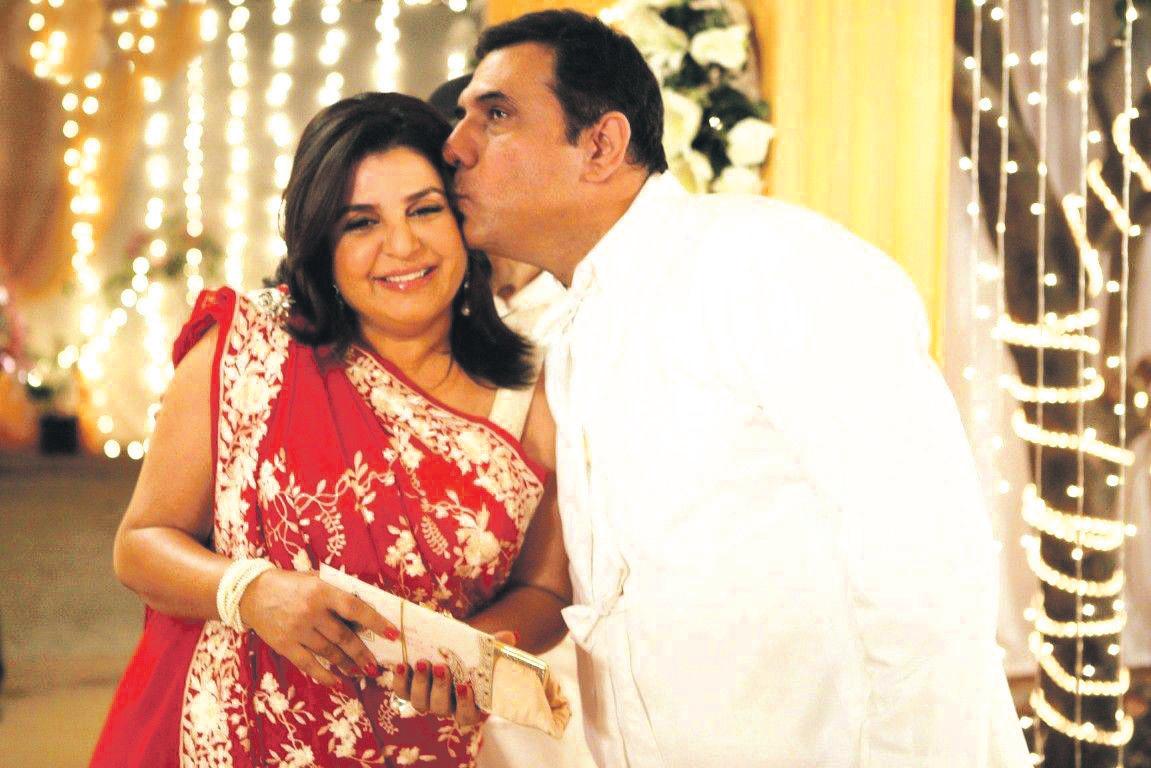
Kudos to multicultural India!
Alia Bhatt
Gangs of Wasseypur, for instance, few knew about the small town of Wasseypur in Jharkhand. Writer Zeeshan Quadri says he grew up in the town and spent his childhood Answer to GUESS WHO?
INDIAN LINK CAPTION CONTEST Send in your responses to info@indianlink.com.au and win a surprise prize.
Last issue Caption Contest winning entry
Jaya: Look at our two boys Amit and Abhi, don’t they look simply divine? Aish: (Yawn) Yeah, whatever.
Priyam Chaudhury Morningside, QLD Priyam wins one ticket to new Hindi film SOTY
SHRADDHA KAPOOR
Karan Yohar
NOVEMBER 2012 67
Farah-Boman
Cine Talk High school musical
After that hugely successful love-yourparents message, Karan Johar now talks about loving your friends in his latest film Student Of The Year (SOTY).
Student Of The Year is light and fluffy, yet full of substance. The lead threesome - Varun Dhawan, Siddharth Malhotra and Alia Bhatt - are all new faces and quite adorable. The narrative goes back and forth in a similar fashion that was witnessed in Jaane Tu... Ya Jaane Na. School friends meet after a decade of leaving school when they come to meet their dean, Yogendra Vashisth (Rishi Kapoor) who is unwell, and recap their final year in school.
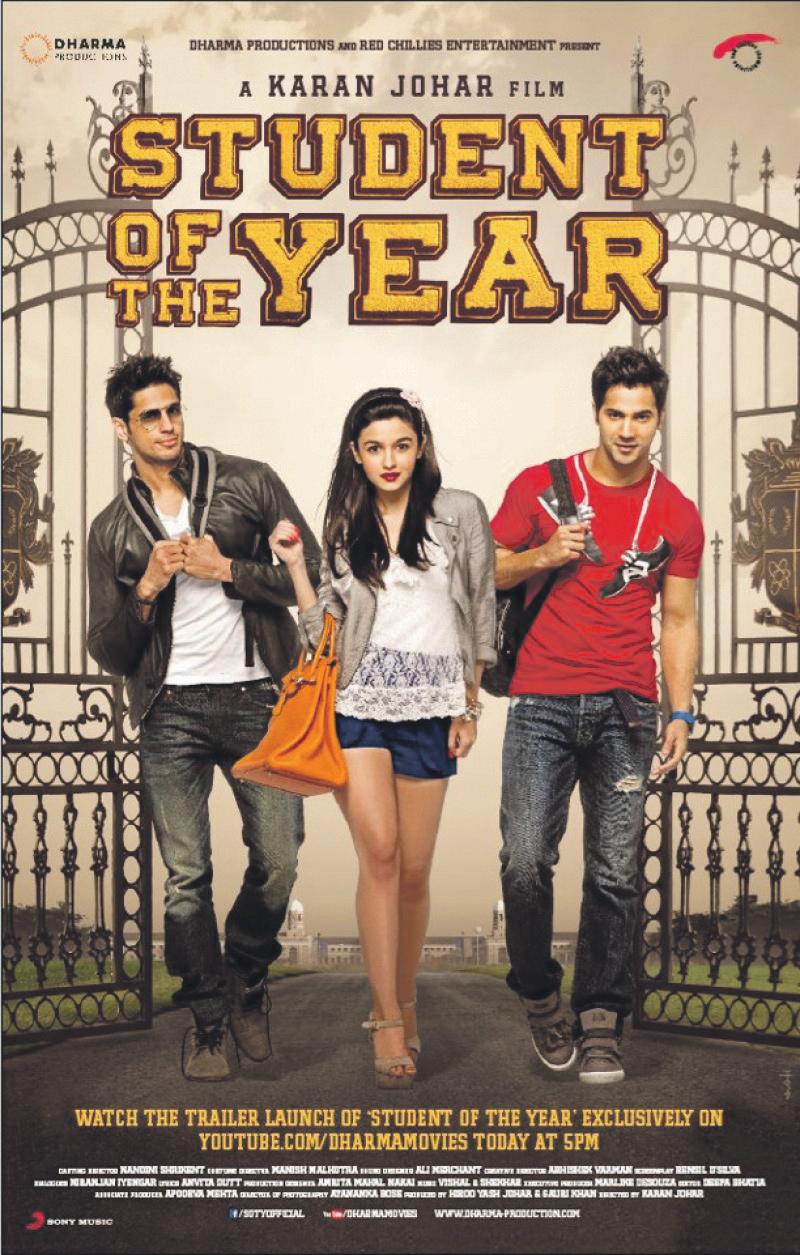
They studied in St. Teresa, a formidable school where kids of rich and famous mingle with hardworking scholars. The contrast is evident when the have-nots are at the beck and call of the creme de la creme.
The rich and flamboyant, Rohan Nanda (Varun Dhawan) is the heartthrob of the school.
Shanaya (Alia Bhatt) is his taken-for-granted girlfriend. Life is hunky dory, till Abhimanyu Singh (Siddharth Malhotra) enters.
SOTY is quite unpredictable. Instead of the regular cliched rivalry, here are two friends who bond together, till circumstances push them away.
Those who are not into teenybopper romances may find the film dragging in parts. It’s only post-interval when the competition for the Student of the Year Award hots up that the viewer is glued to his seat.
The pace of the film
FILm: Student Of The Year
picks up and we wonder who will walk away with the coveted trophy.
The film emits Karan Johar’s pink humour in plenty.
Rishi Kapoor as the gay dean with a roving eye and soft corner for sports coach, played by Ronit Roy, is fabulous. The scene where he throws the dafli at the coach’s wife during the sangeet ceremony of Rohana’s brother is thoroughly enjoyable. The camera does not miss any opportunity to capture the best of the male leads Siddharth and Varun, with their six-pack abs et al. A treat for the eyes of many. In terms of performances, all the three debutants are confidence personified. Siddharth is a bit stiff in certain scenes, whereas Alia Bhatt obviously has acting in her genes. But it is Varun Dhawan who steals the show with his charismatic and endearing performance. He is spontaneous, and an elegant dancer to boot. Niranjan Iyengar’s dialogues have their moments. With puns and rhymes, he wows the audiences.
Alia’s dialouge that her marriage will not be decided by rab (god in Punjabi), but at the rich wife’s club elicits lots of laughter.
If Rensil D’silva’s screenplay is sleek, production quality is visually appealing, glossy and vibrant. Vishal-Shekhar’s young, peppy and soulful compositions are enjoyable and foot-tapping. Overall, the film is larger than life. A blend of High School Musical and Julia Robert’s Monalisa Smile is an enjoyable combination.
Definitely worth a watch.
Troy Ribeiro
CAST: Siddharth Malhotra, Varun Dhawan, Alia Bhatt, Rishi Kapoor, Ram Kapoor, Ronit Roy, Gautami Kapoor, Sana Syed, Kayoze Irani and Farida Jalal
DIRECTOR: Karan Johar
68 NOVEMBER 2012 www.indianlink.com.au ENTERTAINmENT
Not so lovable
There is never a time or a place for true love. It happens accidentally, in a heartbeat, in a single throbbing moment.
That moment for the very rich, Rajveer Grewal (Jackky Bhagnani), an automobile modifier who has just completed his project - DC (Dream Car), occurs on the escalators of his office building where he sees the woman of his dreams.
Then starts his chase for Madhuri Singh (Niddhi Subbaiah), the girl who would be his mother, Rashmi Grewal’s (Kirron Kher) - DB (Dream Bahu).
The premise of Ajab Gazabb Love pivots around DC and DB.
This love story takes a spin because Madhuri, a selfrighteous girl who works for an NGO, proclaims that she hates rich people.
To win her, Rajveer in all his foolishness claims he is a poor guy and Madhuri falls for him hook-line-and-sinker.
But then Indian marriages involve entire families. So here starts the drama and series of comic events. The Grewals move from their posh bungalow to a squatter’s colony to pretend to be poor.
To add drama to the poor
family story, mom Rashmi Grewal is forced to be a blind person. Rajveer’s brother poses as a drunkard, sister-in-law turns into a maid and his father Yashwardan Grewal (Dharshan Jariwala) becomes a banana vendor.
Ajab Gazabb Love has its hilarious moments but on the whole, the plot is on an even keel.
Kirron as usual is overdramatic and loud. Arshad Warsi as the south Indian friend is good and effective. Arjun Rampal, in a double role as Karan and Arjun, older brothers of Madhuri is good.
Jackky with his six-pack abs makes a sincere effort in delivering what is required of him. Of course, he is endearing at times but those moments are few and far between.
Niddhi as the leading lady is just passable.
Sajid-Wajid’s music is nothing to write home about, average and dismissible. The lyrics like Lip Lock etc, are no poetry either. The songs seem to be forced upon the audience.
After Dhoom, Dhoom 2 and Kidnap, Ajab Gazabb Love just reinforces that director Sanjay Gadhvi is slick and trendy. The ensemble of songs is ample
evidence to the fact.
The elements that don’t work in Gadhvi’s favour are that the songs are carelessly placed in the story, unrealistic approach of the premise of the story, treatment; and a clean-shaven Sardar. These were surely difficult to digest.
If you are having a boring weekend with nothing better to do and if Ajab Gazabb Love is your only option, then only go for it.
Troy Ribeiro
FILm: Ajab Gazabb Love

CAST:Jackky Bhagnani, Niddhi Subbaiah, Arjun Rampal, Kirron Kher, Dharshan Jariwala, Arshad Warsi
DIRECTOR: Sanjay Gadhvi
Into the murky politics of newsrooms
ouch, the TV channels won’t be flattered. Rush, like Ram Gopal Varma’s Rann three years ago, rushes into the cut-throat world of TRP-driven competition among news channels where news, if not discovered is created in the newsroom. So Varma told us in Rann.
And now late director Shamin Desai’s Rush takes us into the ostensibly murky chatroom politics of news channels where news-baron Roger Khanna (Aditya Pancholi, unintentionally hilarious) gets reporters, civilians, politicians and criminals bumped off to make news. Just like that.
Far-fetched, yes. But Rush has its adrenaline rushing moments in the second half when the narrative picks up momentum and moves steadily towards a climax that is not entirely edgeof-the-seat. But certainly the popcorn on your lap is likely to ignored for a bit as ambitious crime reporter Sam Grover (Emraan Hashmi) gets sucked into a web of crime created by his over-reaching dangerouslyconnected boss.
Rush is not the first film about a young ambitious professional losing moral and ethical equilibrium to attain success. Recently, we had Kunal Khemu in Blood Money and Paoli Dam in Hate Story reaping the bitter fruits of their savage harvest. More closely, Rush resembles Goldie Behl’s Bas Itna Sa Khwaab Hai where Abhishek Bachchan got trapped into a glamorous web of grime by media baron Jackie Shroff. Sushmita Sen had played the suave chic assistant to Jackie who took Abhishek under her sexy wings. In Rush it’s Neha Dhupia, every bit as suave and chic as Sushmita, playing the media baron’s righthand woman who gets too close to Emraan for comfort. And yes, they even share a furtive kiss in a long-shot to ensure Emraan’s hardcore following doesn’t commit suicide.
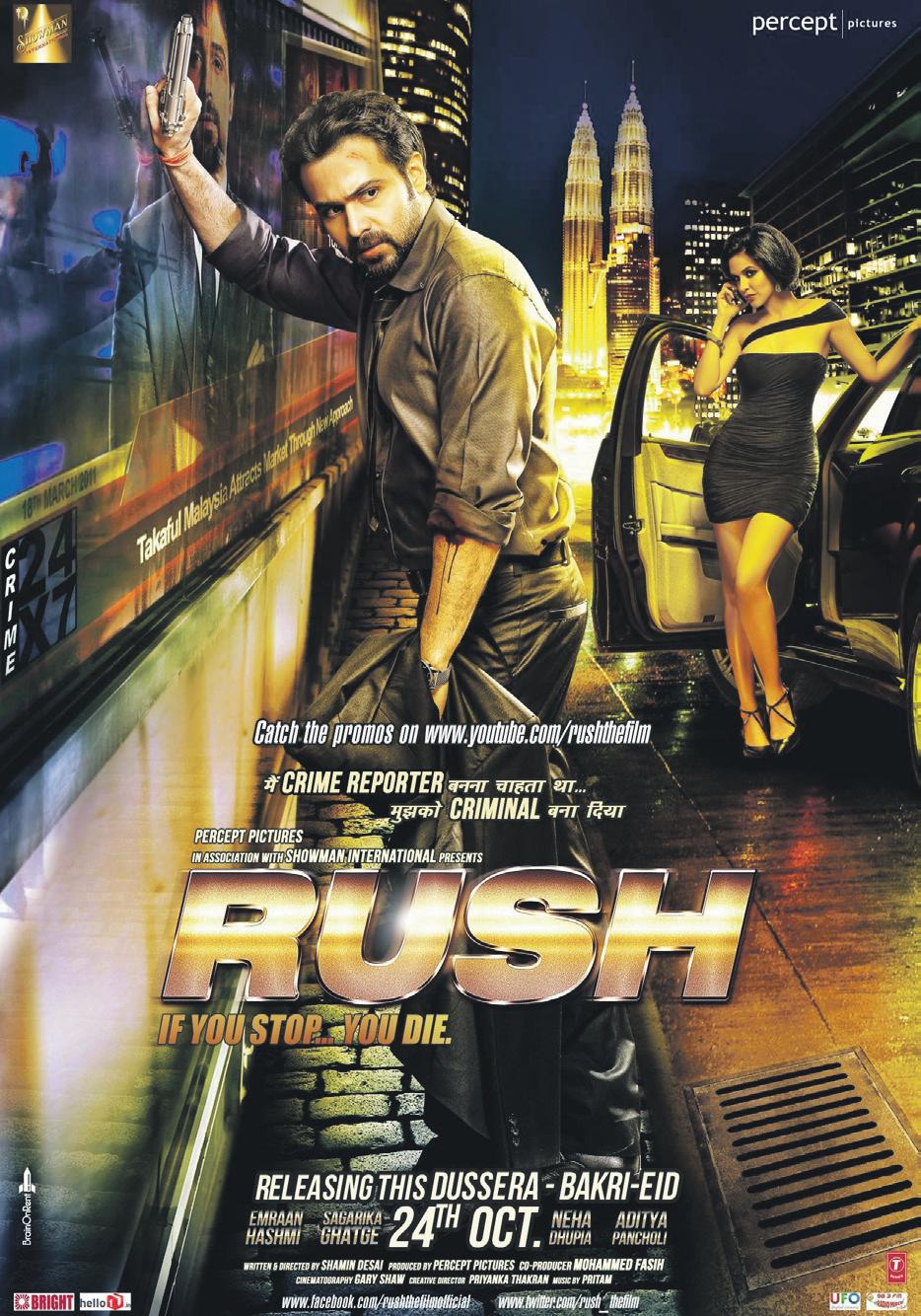
Rush does have its sluggish chunks in the storytelling. But the narrative gathers strength from the basic plot structure where a television journalist is shown to be on the run. Some of the chase sequences are
FILm: Rush CAST: Emraan Hashmi, Aditya Pancholi, Neha Dhupia, Sagarika Ghatge DIRECTOR: Shamin Desai
expertly done. And the whole theme of the newsmaker’s descent into compromised journalism makes for some riveting moments.
While many of the characters are sketchy, some like the sharp-shooter (played by Murli Sharma) who befriends our journalist-hero provide the plot with a spicy if not completely pungent propulsion.
The entire episode after the murder of Emraan’s journalistfriend Rikin (played by TV actor Alekh) makes for absorbing viewing.
Emraan as the backbone of plot performs decently. He has more speaking lines and less kissing to do here than in all
his recent films. Whether the verbosity actually translates into something substantial or not is debatable.
Rush has the bone though not enough meat to make for a juicy fare on the excesses of
television journalism. It leaves you wondering what director Shamin Desai would have done with his filmmaking career had he lived.
Subhash K. Jha
INDIAN LINK
NOVEMBER 2012 69
Can durga Ma slay the gender warmongers?
The Hindu celebration of the feminine principle of nature, could result in a parliamentary status quo in Oz
Fortunately for the innocent public supporting both sides with their tax dollars, the battleground was limited to a U-shaped chamber with opponents comfortably placed in cushioned trenches of green leather
By LP AyER
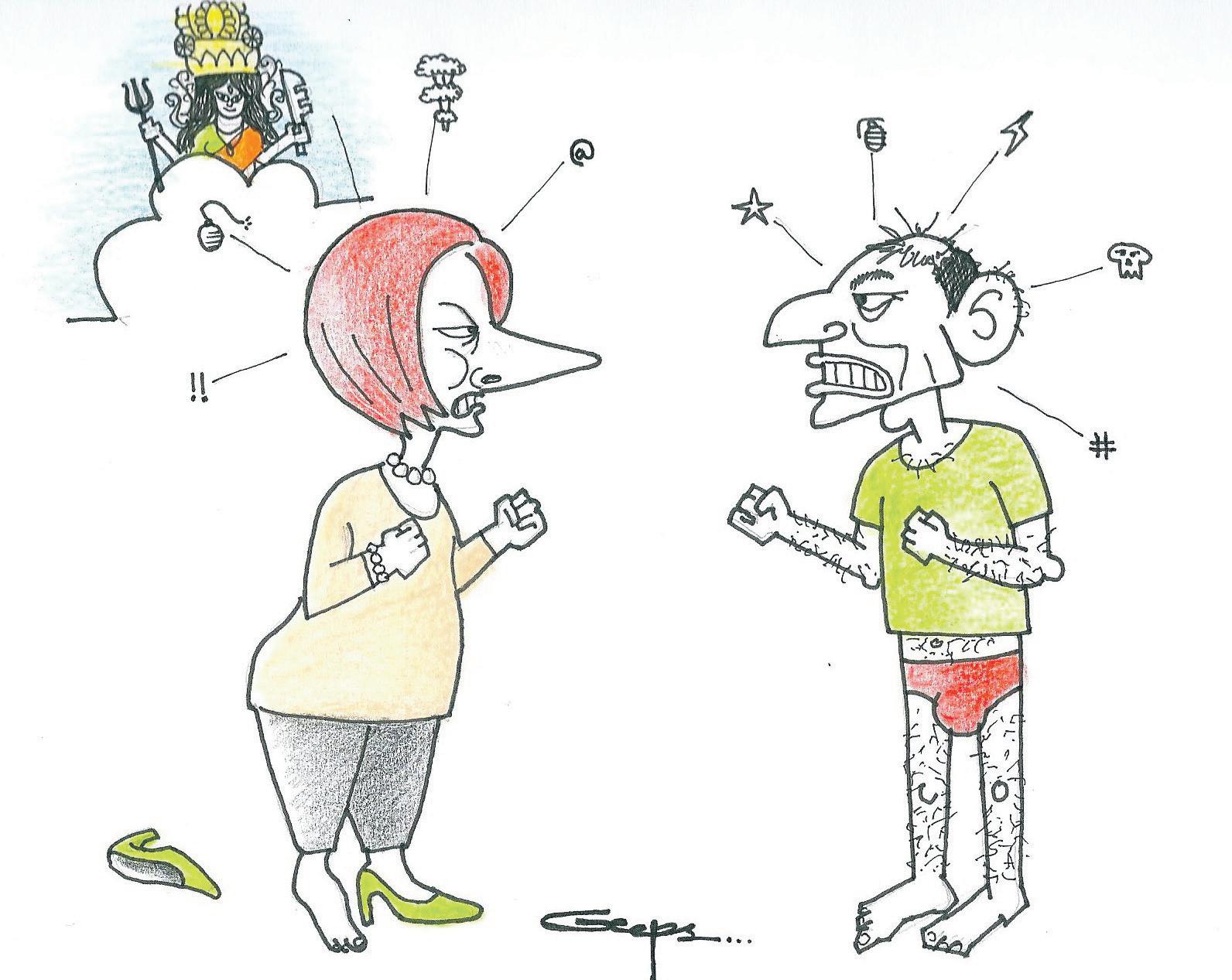
Thank God! Or, should I say thank Goddesses, for bringing on Dusshera in time to edge out the great Gender War that is gripping this country out of our psyches. This WoW (war of words) was getting fiercer than WWII, with both sides tossing stink bombs at each other, turning serene springtime into a season of sleaze and slander.
Fortunately for the innocent public supporting both sides with their tax dollars, the battleground was limited to a U-shaped chamber with opponents comfortably placed in cushioned trenches of green leather, facing each other with a mound of bound tomes in the middle. Both sides had similar numerical
strength with a few aligning with one side or the other, depending on the situation. Another unique aspect of this stoush was the presence of a supposedly neutral person, not unlike the UN observer, whose job was to see the battle was kept within bounds.
Of the two fighting forces, the ‘Handbag Hit Squad’ was better equipped with finance, health and legal resources; whereas the opposing Coalition forces were only a shadow of their rivals. The Handbag squad’s verbal missiles, sounding very identical, showered the opposition with seldomheard-of terminology, forcing the general public to Google-search that word. The Coalition’s captain, with his habit of shooting from the hip and lip at the same time, was alleged to have fallen out of favour with the fair sex. But he had the full backing of his reserves in the home front. Sadly his allies ‘on’ air attack misfired, sending his supporters away.
The funniest thing about this gender war was that both sides claimed they were fighting for the same cause – regard for women. The Handbag Brigade branded the Opposition of having very little respect for women, quoting some ancient incidents. The Coalition hit back that the Women Warriors not only went mum, but tried to shield a spokesperson when he slipped so low as to make disgusting remarks about women. So much for the clamour of the two sides fighting for women’s honour in a season when women are raised to the highest level of respect and reverence in a land half the globe away - Mother India.
Yes, it is that time of the year - Dusshera (Karnataka and Bengal) and Navratri (Tamil Nadu) - when every female form of the Almighty is worshipped. In Hindu mythology every God has a Goddess including Ganesha (in some parts of Maharashtra),
emphasising the concept of equal status of women. An in-depth analysis of Hindu philosophy will help one to understand that various deeds in the divine domain are just a reflection of daily happenings in human lives.
For any individual or society to prosper, a certain amount of wealth is needed. To create and manage that wealth, proper skills are required that come about through education. And above all, to survive from external or internal threats, security is of utmost importance.
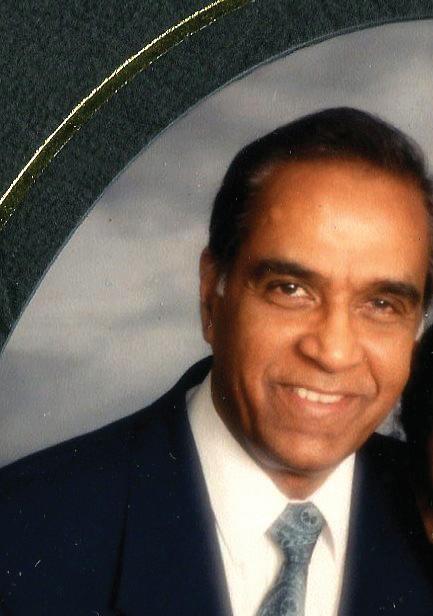
Realising this basic principle, these three important endeavours are entrusted in Hindu mythology to Durga (security), Lakshmi (wealth) and Saraswati (education). And as an act of great reverence, Shakti is regarded as an absolute equivalent to her male consort.
Refreshing this principle of equality and re-emphasising the need to pay due respect to women, the Dusshera/Navratri
The two sides fought for women’s honour in a season when women are raised to the highest level of respect and reverence in a land half the globe awayMother India.
festival serves as an annual reminder. Dusshera celebrations in Mysore and Durga puja in Bengal are very well known all over the land. During Navratri, in many Tamil households statuettes of goddesses are decorated and displayed in layers of steps (kolu) and women are invited to join in special prayers.
So it is very appropriate that this festival has arrived in time to end the war of words and the duel for dominance between the sexes. Thank Goddesses!
70 NOVEMBER 2012 www.indianlink.com.au BAc Kch AT


NOVEMBER 2012 71 INDIAN LINK

72 NOVEMBER 2012 www.indianlink.com.au
























 PREETI JABBAL
PREETI JABBAL


























 Photo: Pinky’s Pantry
Photo: Pinky’s Pantry



































































 Main Picture: Thousands of Hindu devotees hold earthen lamps as they participate in the Maha Aarti ritual on the eighth night of Navratri festival in Gandhinagar, Oct. 22. Photo: AP
Clockwise from bottom left: 1 Hindu devotees apply vermilion on each other in front of a large idol of Goddess Durga as they prepare to immerse it in the River Yamuna during Durga Puja festivities in New Delhi, Oct. 24.The festival commemorates the slaying of a demon king by the lion-riding, ten-armed goddess Durga, marking the triumph of good over evil.
Photo: AP
2 A student at Udaipur’s Guru Nanak Girls College performs the ritual garba dance of the Navratri season
3 An effigy of demon king Raavan burns to denote the end of all evil, at the end of the Navratri period.
4 A Muslim boy rests as elders offer prayers during Eid al-Adha in New Delhi, Oct. 27. Eid al-Adha is a religious festival celebrated by Muslims worldwide to commemorate the willingness of Prophet Ibrahim to sacrifice his son as an act of obedience to God.
Photo: AP
5 Ushaben Dave, 65, wears a framed costume decorated with dozens of oil lamps during celebrations for the Festival of Nine Nights, Navratri, in Ahmadabad, Oct. 21. Photo: AP
Main Picture: Thousands of Hindu devotees hold earthen lamps as they participate in the Maha Aarti ritual on the eighth night of Navratri festival in Gandhinagar, Oct. 22. Photo: AP
Clockwise from bottom left: 1 Hindu devotees apply vermilion on each other in front of a large idol of Goddess Durga as they prepare to immerse it in the River Yamuna during Durga Puja festivities in New Delhi, Oct. 24.The festival commemorates the slaying of a demon king by the lion-riding, ten-armed goddess Durga, marking the triumph of good over evil.
Photo: AP
2 A student at Udaipur’s Guru Nanak Girls College performs the ritual garba dance of the Navratri season
3 An effigy of demon king Raavan burns to denote the end of all evil, at the end of the Navratri period.
4 A Muslim boy rests as elders offer prayers during Eid al-Adha in New Delhi, Oct. 27. Eid al-Adha is a religious festival celebrated by Muslims worldwide to commemorate the willingness of Prophet Ibrahim to sacrifice his son as an act of obedience to God.
Photo: AP
5 Ushaben Dave, 65, wears a framed costume decorated with dozens of oil lamps during celebrations for the Festival of Nine Nights, Navratri, in Ahmadabad, Oct. 21. Photo: AP



 By CHITRA SudARSHAN
By CHITRA SudARSHAN


































 By MAHESH RAdHAKRISHNAN
By MAHESH RAdHAKRISHNAN

























 By gEoRgE THAKuR
By gEoRgE THAKuR







































 By NANcy JADE ALTHEA www.nancysood.com
By NANcy JADE ALTHEA www.nancysood.com





















